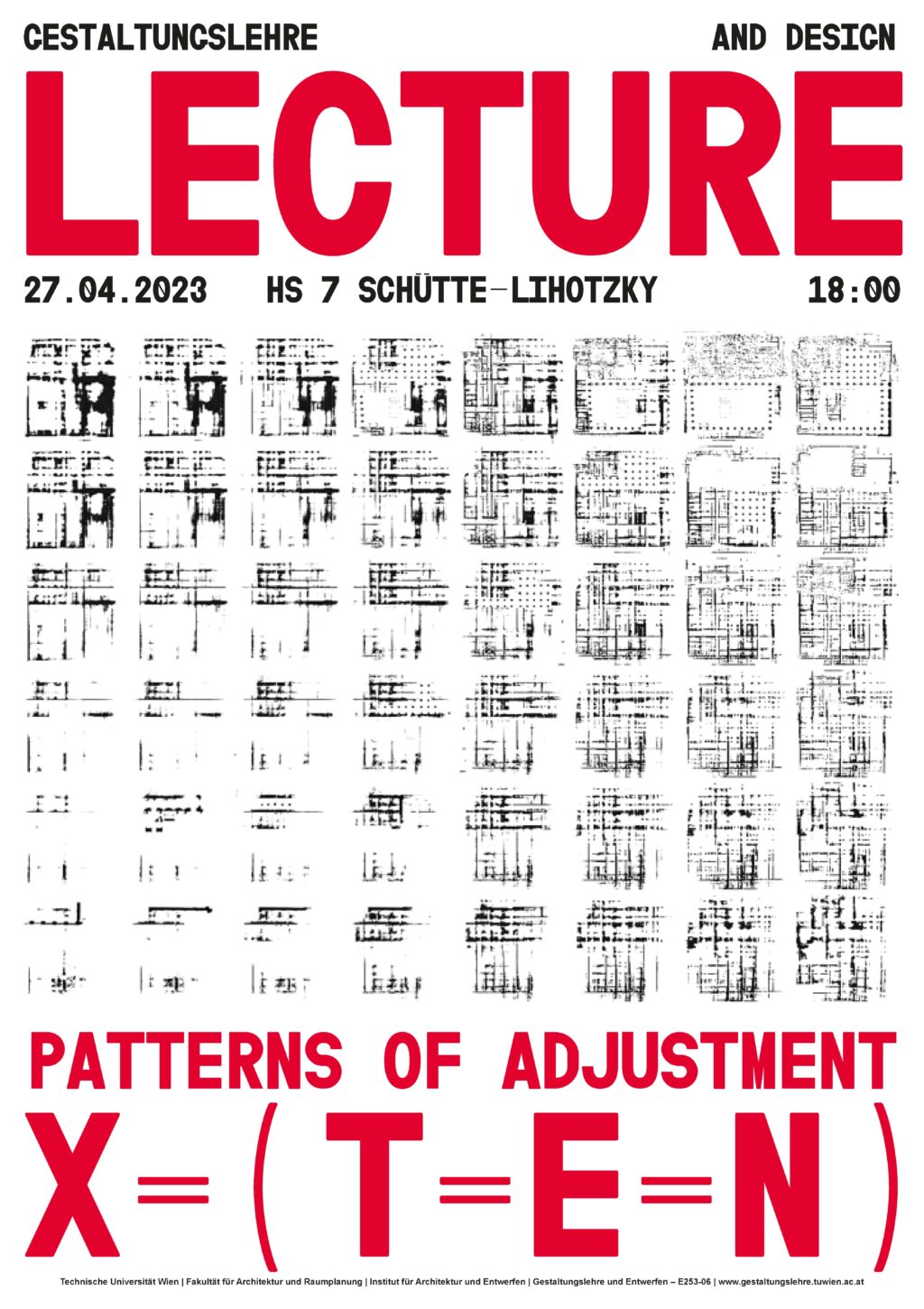

LECTURE:
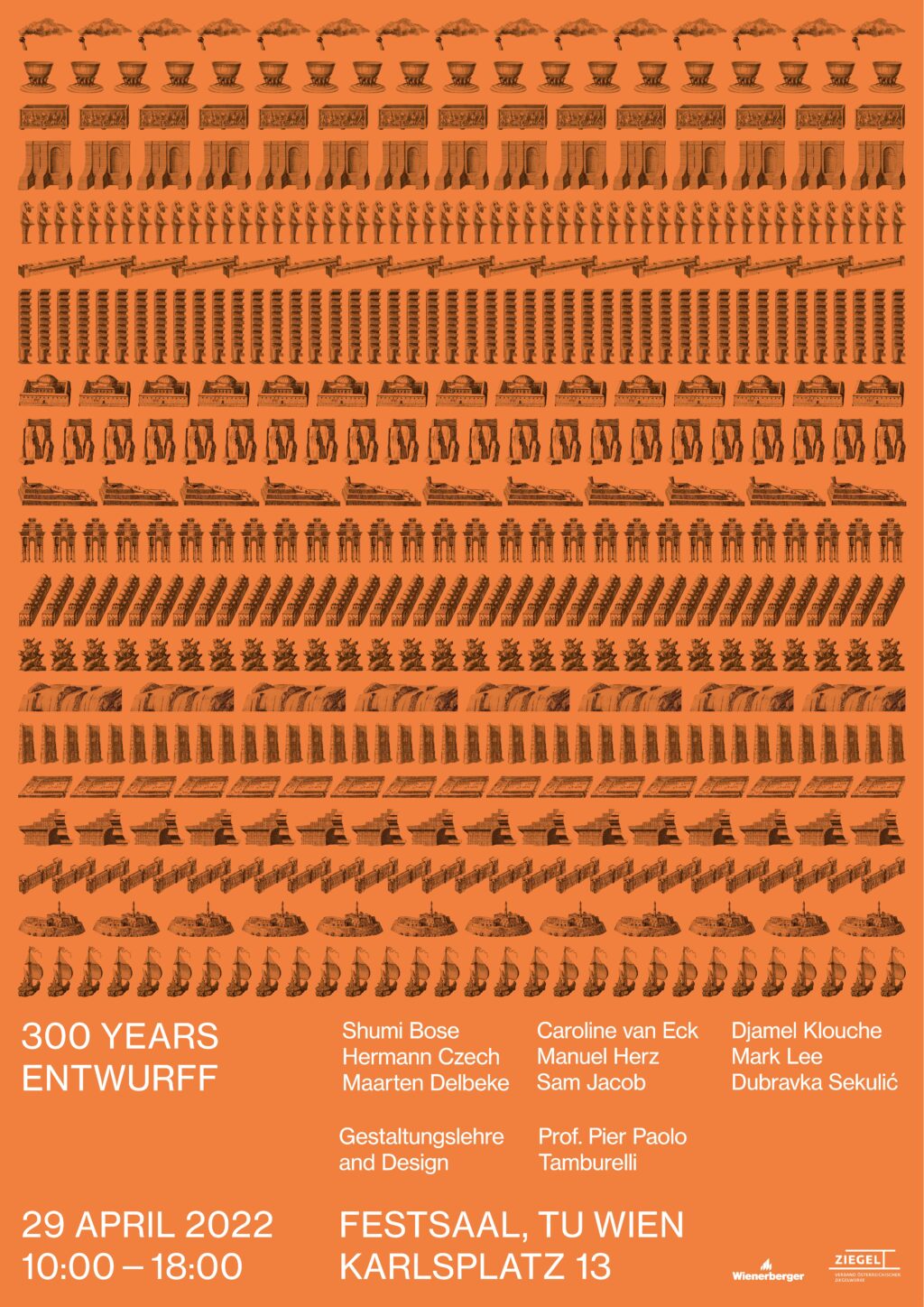
APR 29, 2022
10:00
Symposium:
300 Years EntwurfF
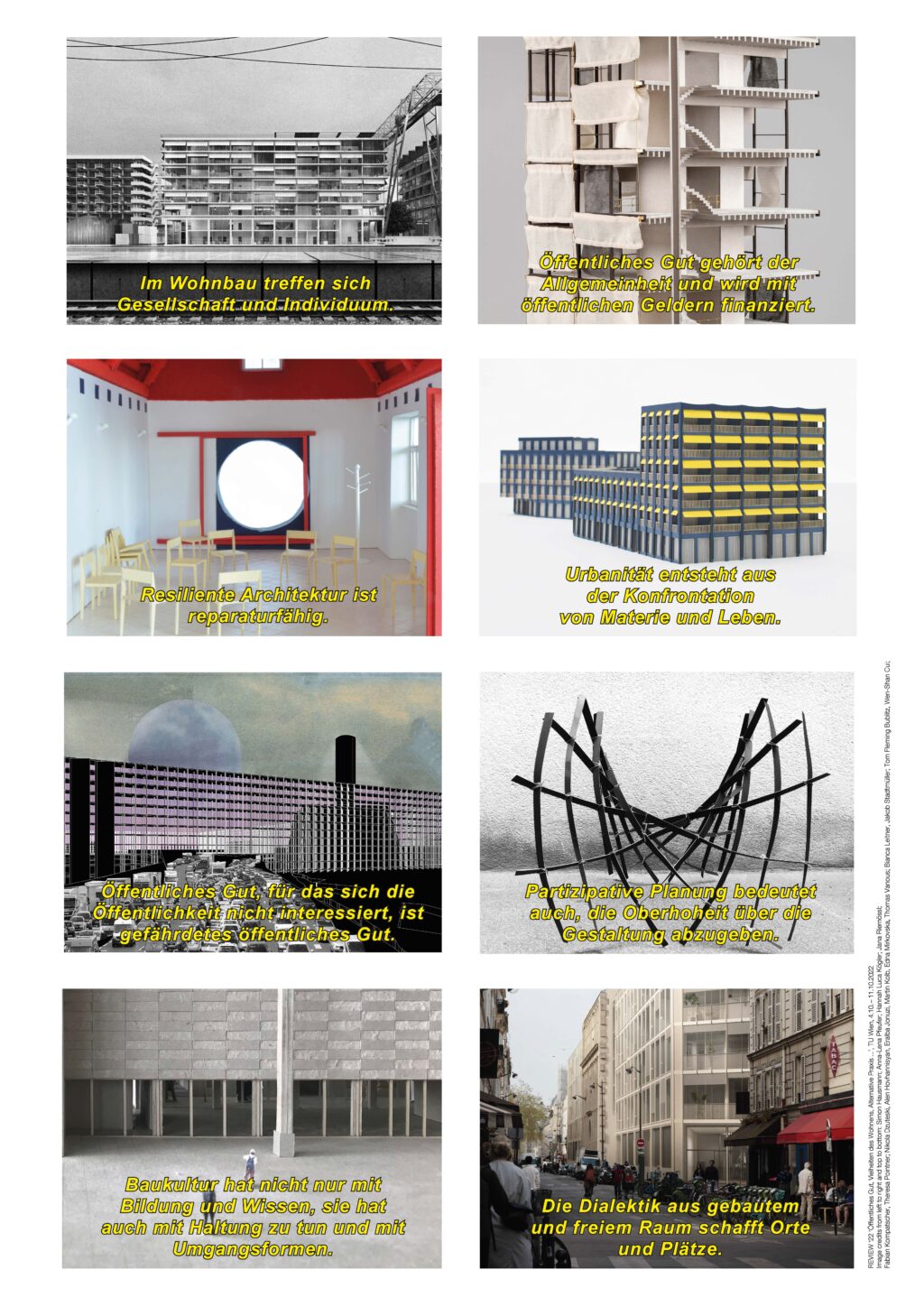
OCT 4, 2022
18:00
EXHIBITION:
REVIEW ‘22

NOV 7, 2022
21:00
LECTURE:
Kjetil Trædal Thorsen, Snøhetta
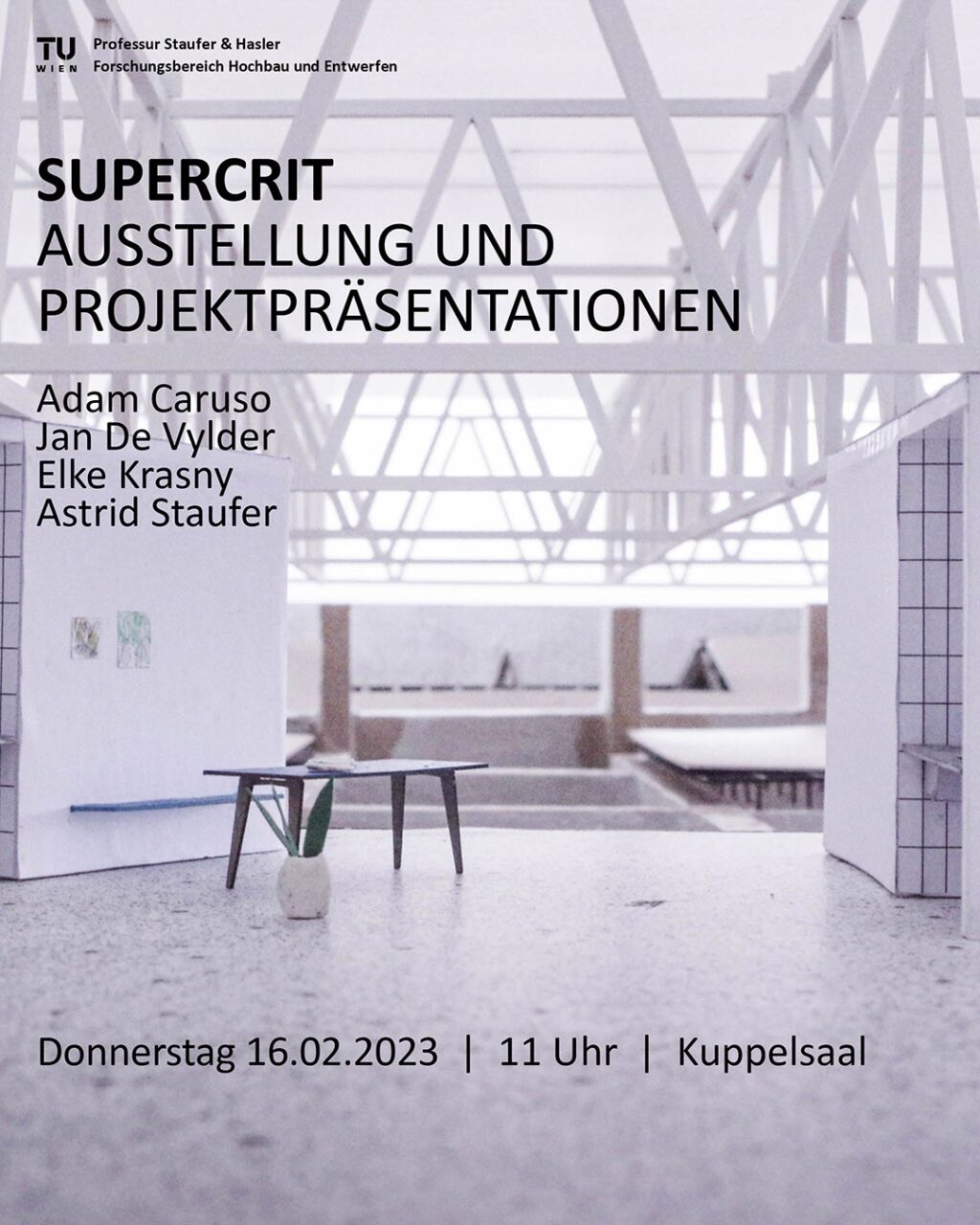
FEB 16, 2023
11:00
EXHIBITION & SUPERCRIT:
UMBAU IN DER LEHRE

MAR 9, 2023
18:30
LECTURE:
GABU HEINDL
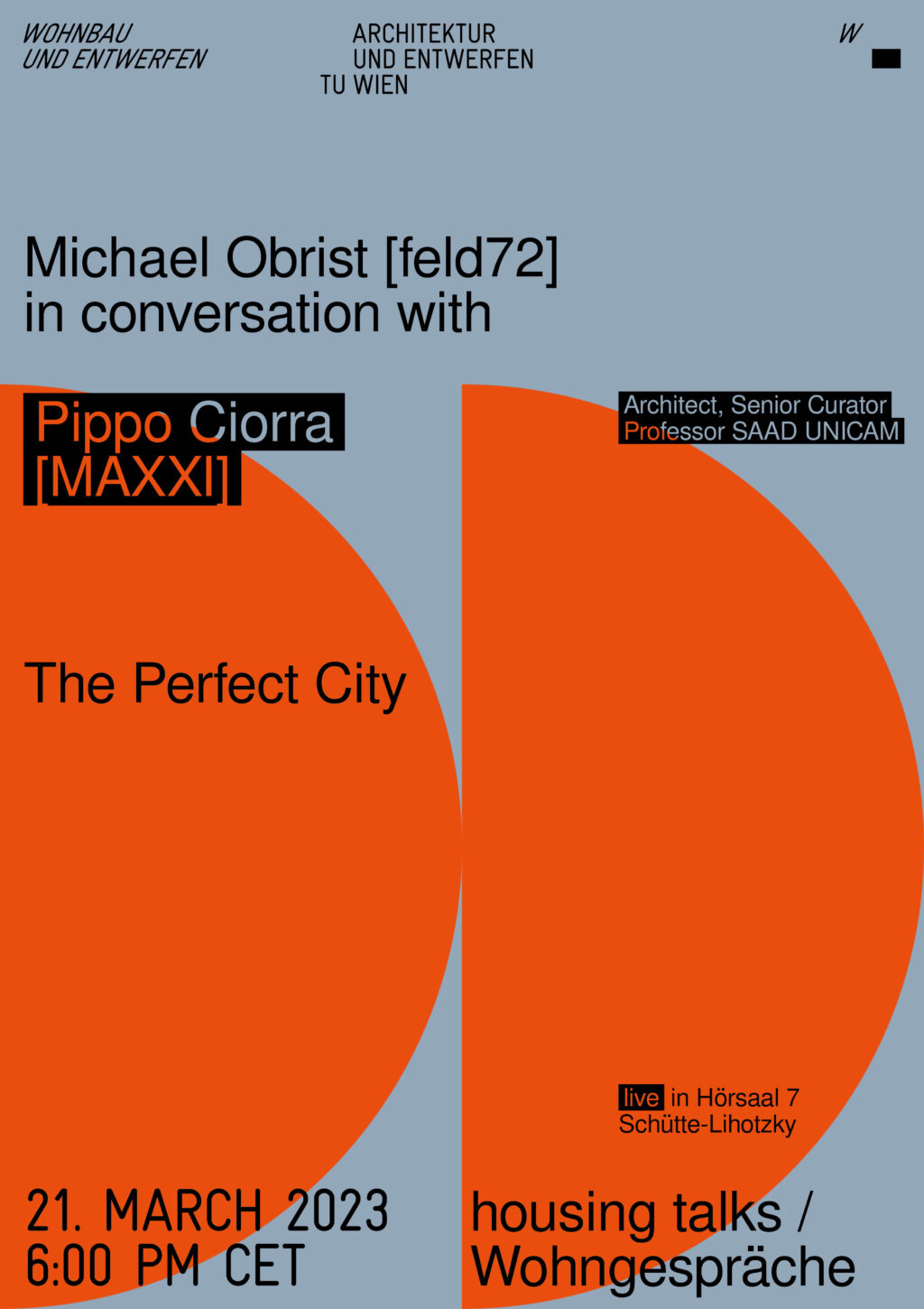
MAR 21, 2023
18:00
HOUSING TALKS:
PIPPO CIORRA, MAXXI
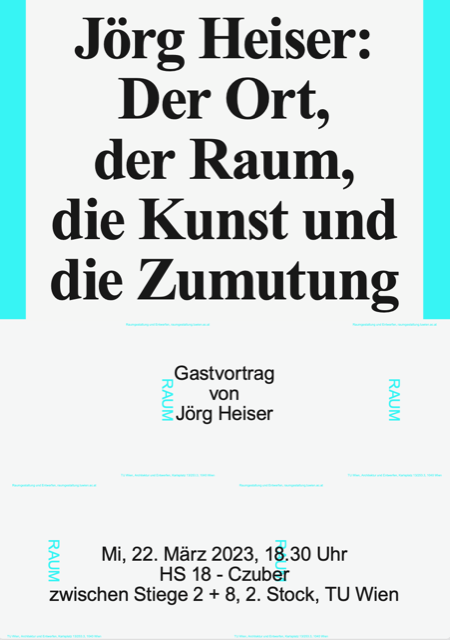
MAR 22, 2023
18:30
LECTURE:
JÖRG HEISER
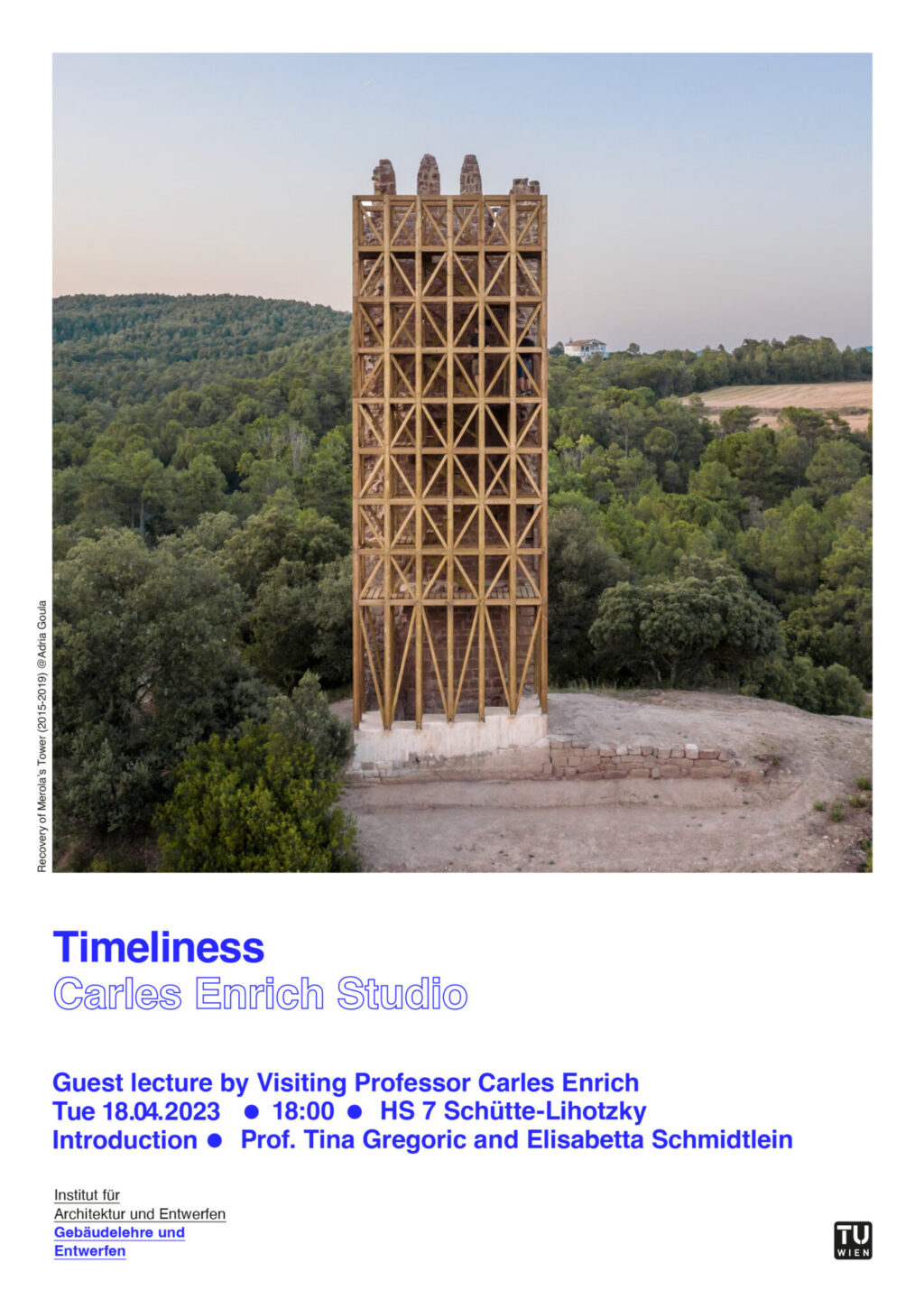
APR 18, 2023
18:00
LECTURE:
CARLES ENRICH

APR 19, 2023
18:30
LECTURE:
HEIKE MAIER-RIEPER
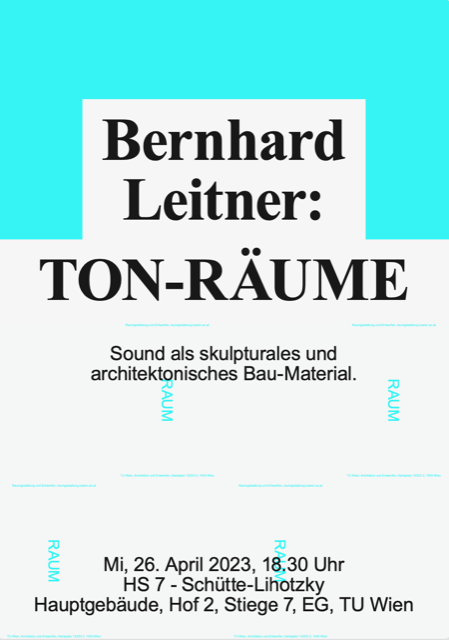
APR 26, 2023
18:30
LECTURE:
BERNHARD LEITNER
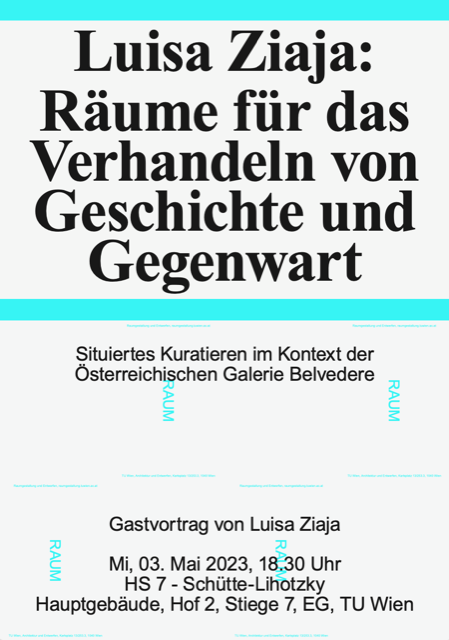
MAY 3, 2023
18:30
LECTURE:
LUISA ZIAJA
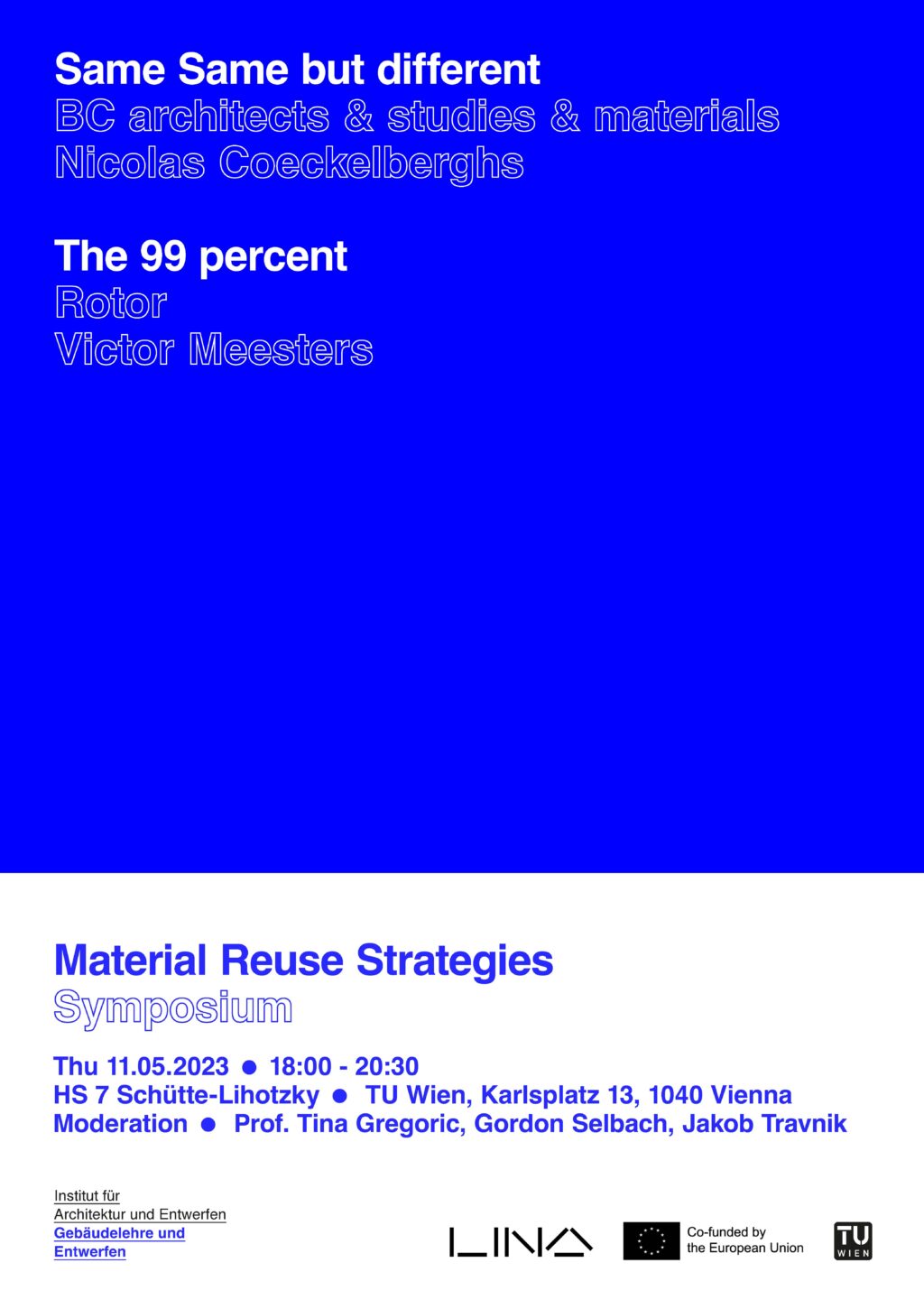
MAY 11, 2023
18:00
SYMPOSIUM:
MATERIAL REUSE STRATEGIES
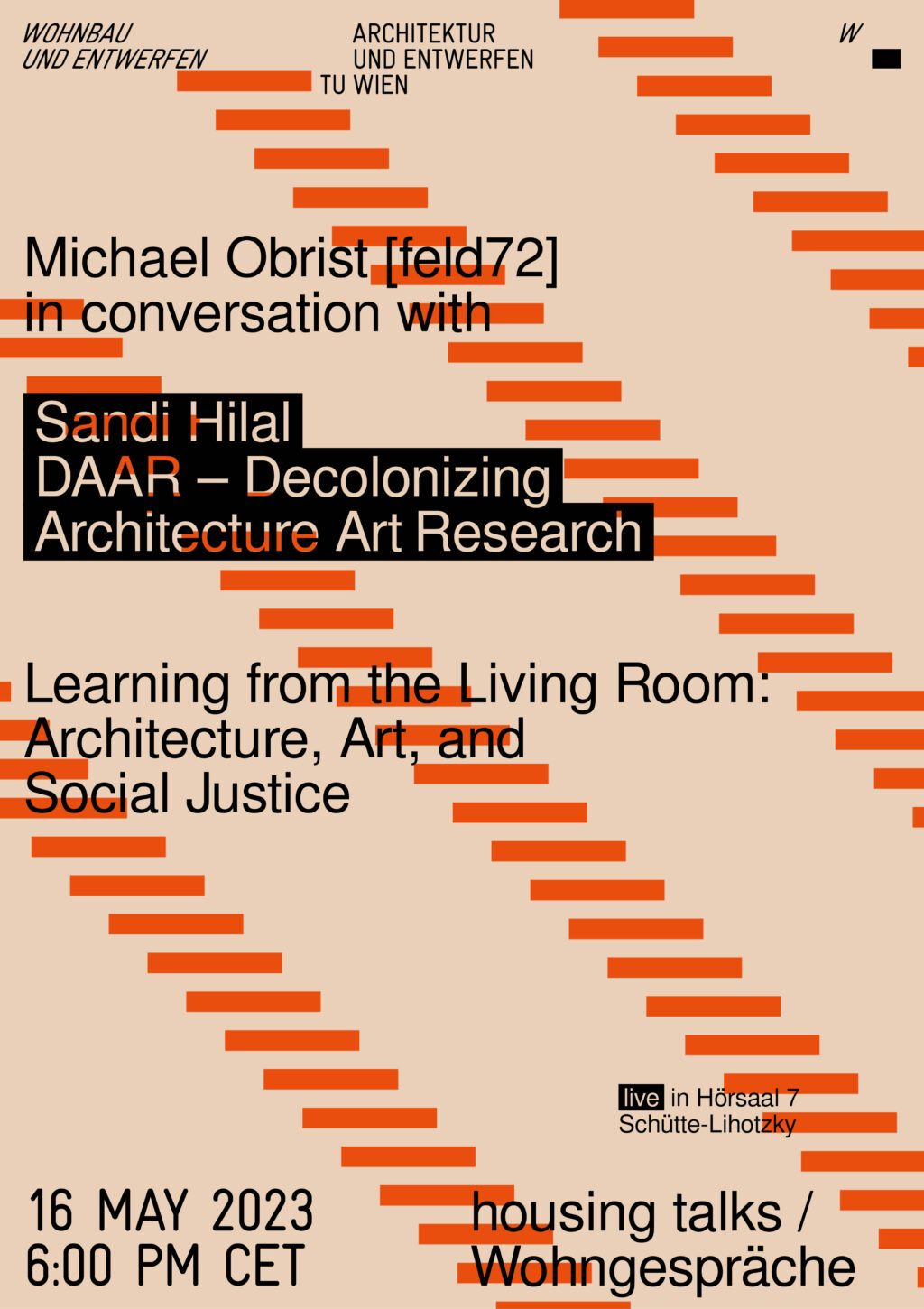
MAY 16, 2023
18:00
HOUSING TALKS:
SANDI HILAL

MAY 23, 2023
18:00
HOUSING TALKS:
FLORENCIA ANDREOLA, AZZURA MUZZONIGRO

MAY 24, 2023
18:30
LECTURE:
KIM TROGAL & ANNA WAKEFORD HOLDER

MAY 25, 2023
18:00
LECTURE:
AVENIER CORNEJO ARCHITECTS
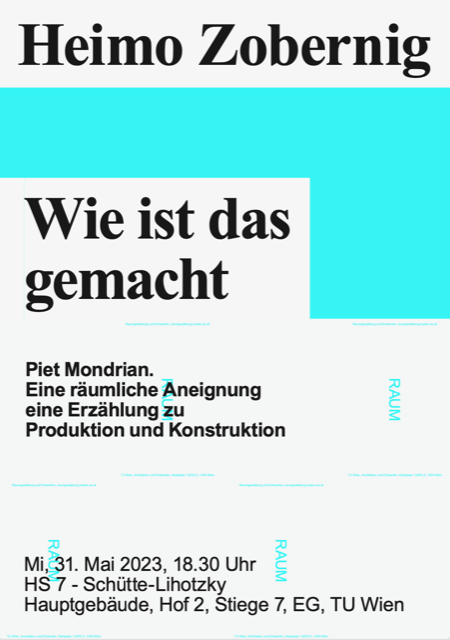
MAY 31, 2023
18:30
LECTURE:
HEIMO ZOBERNIG

JUN 6, 2023
18:00
HOUSING TALKS:
JOCHEN BECKER, METROZONES

JUN 20, 2023
18:00
HOUSING TALKS:
SASHA PIRKER
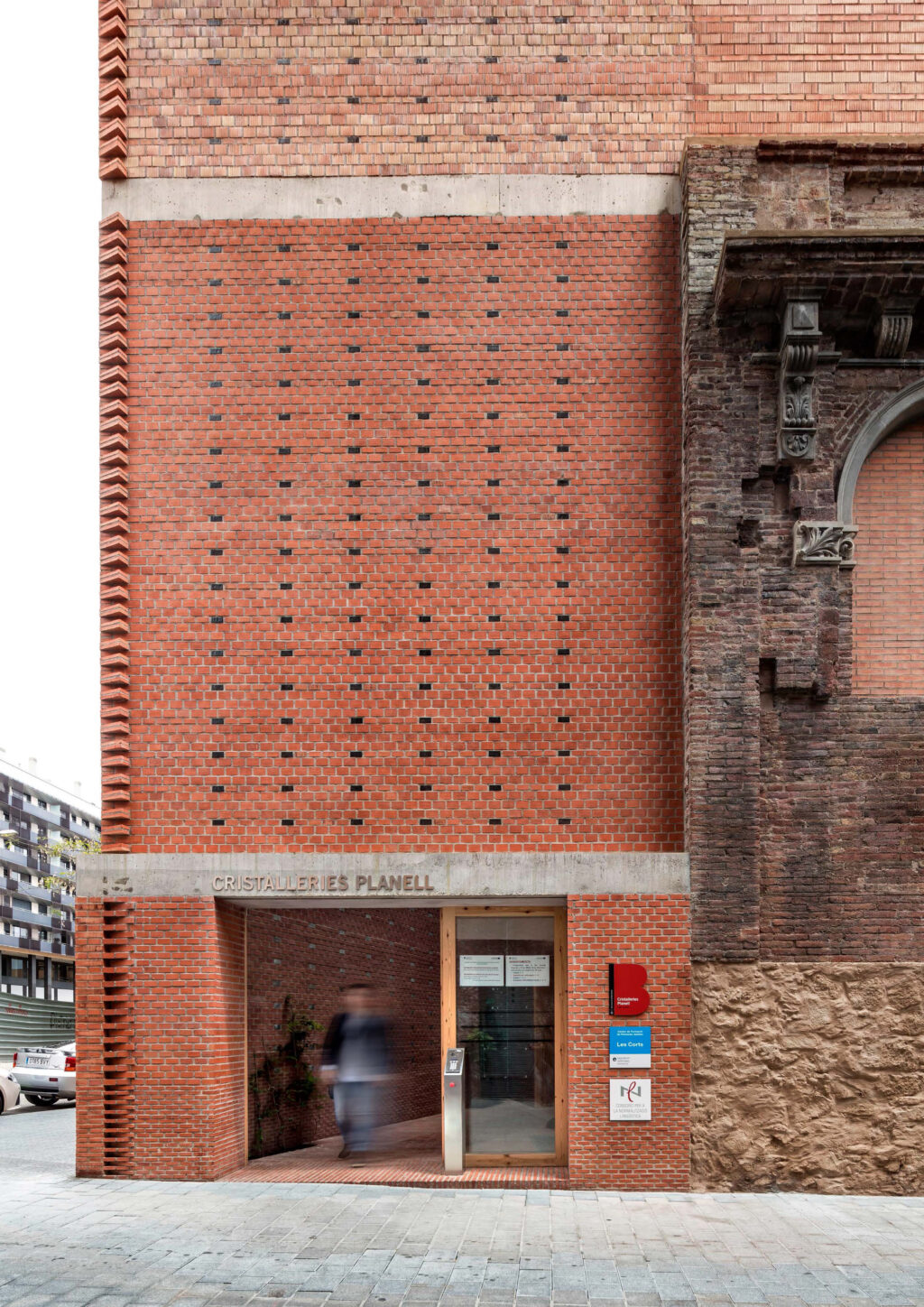
JUN 26, 2023
18:00
LECTURE:
JOSEP RICART, HARQUITECTES
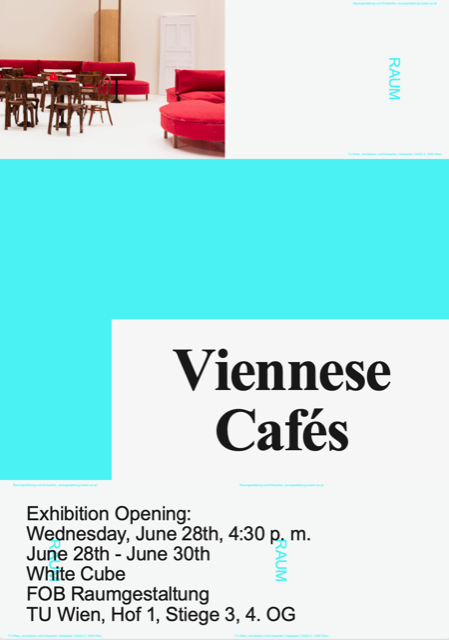
JUN 28, 2023
16:30
EXHIBITION:
VIENNESE CAFÉS: PUBLIC INTERIOR, URBAN SALON

JUN 28, 2023
18:30
LECTURE:
GREGOR EICHINGER

SEP 27, 2023
18:00
EXHIBITION:
Bioregionale Strategien der Wieder- verwendung
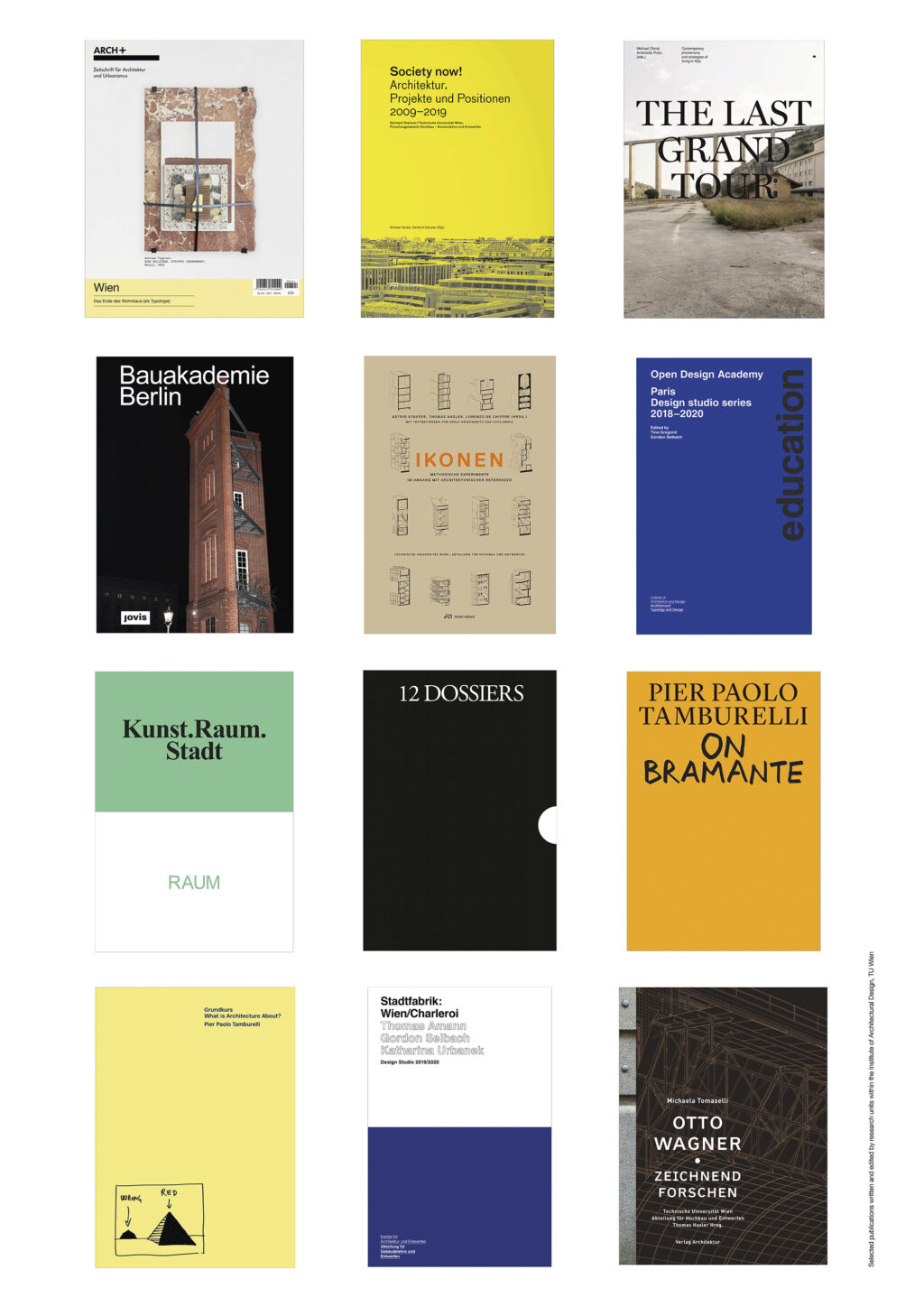
OCT 11, 2023
18:00
PRESENTATION & DISCUSSION:
WEBSITE LAUNCH & TALK ON PUBLICATIONS
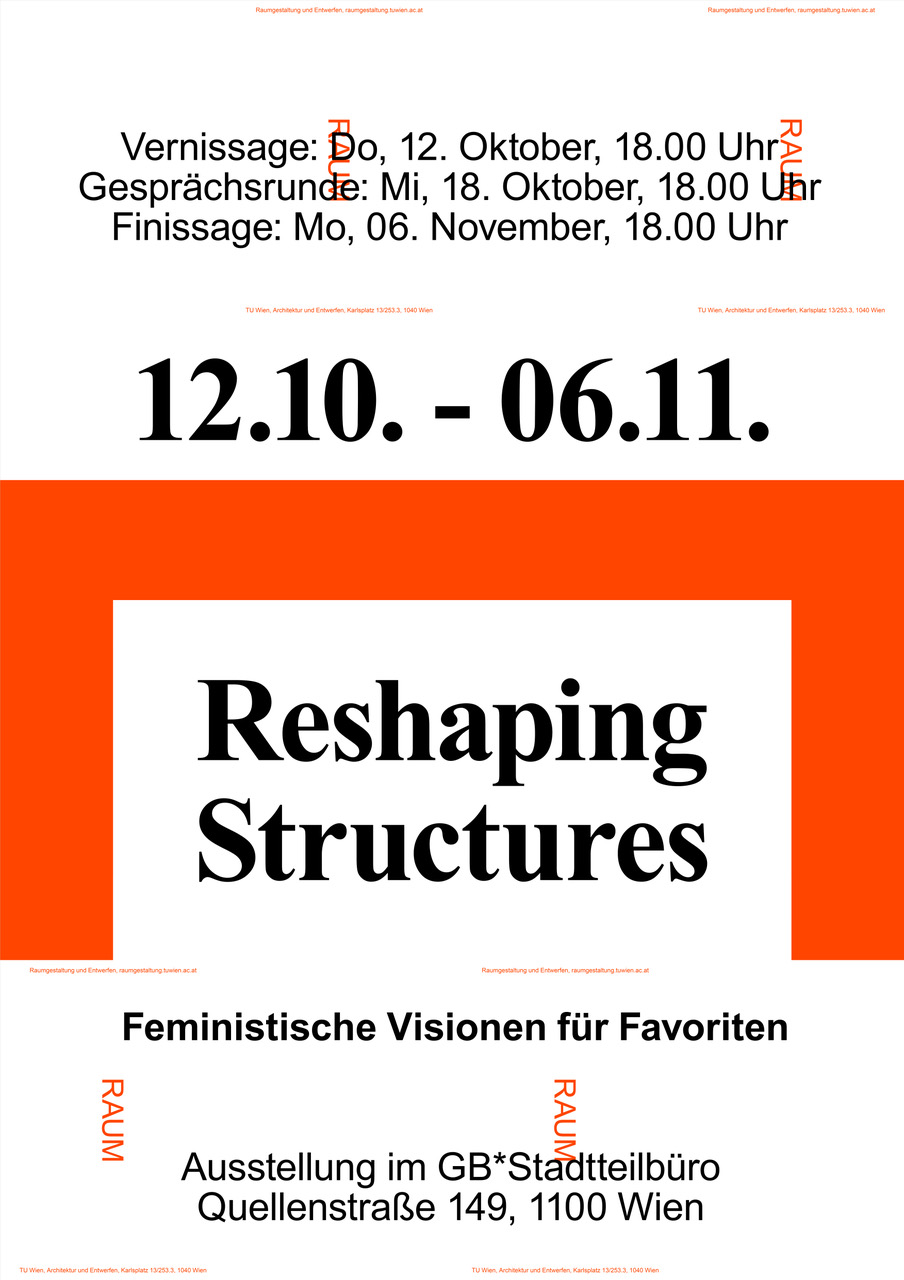
OCT 12, 2023
18:00
EXHIBITION:
RESHAPING STRUCTURES

NOV 7, 2023
18:00
HOUSING TALKS:
ARCHITEKTUR-
KOLLEKTIV AKT
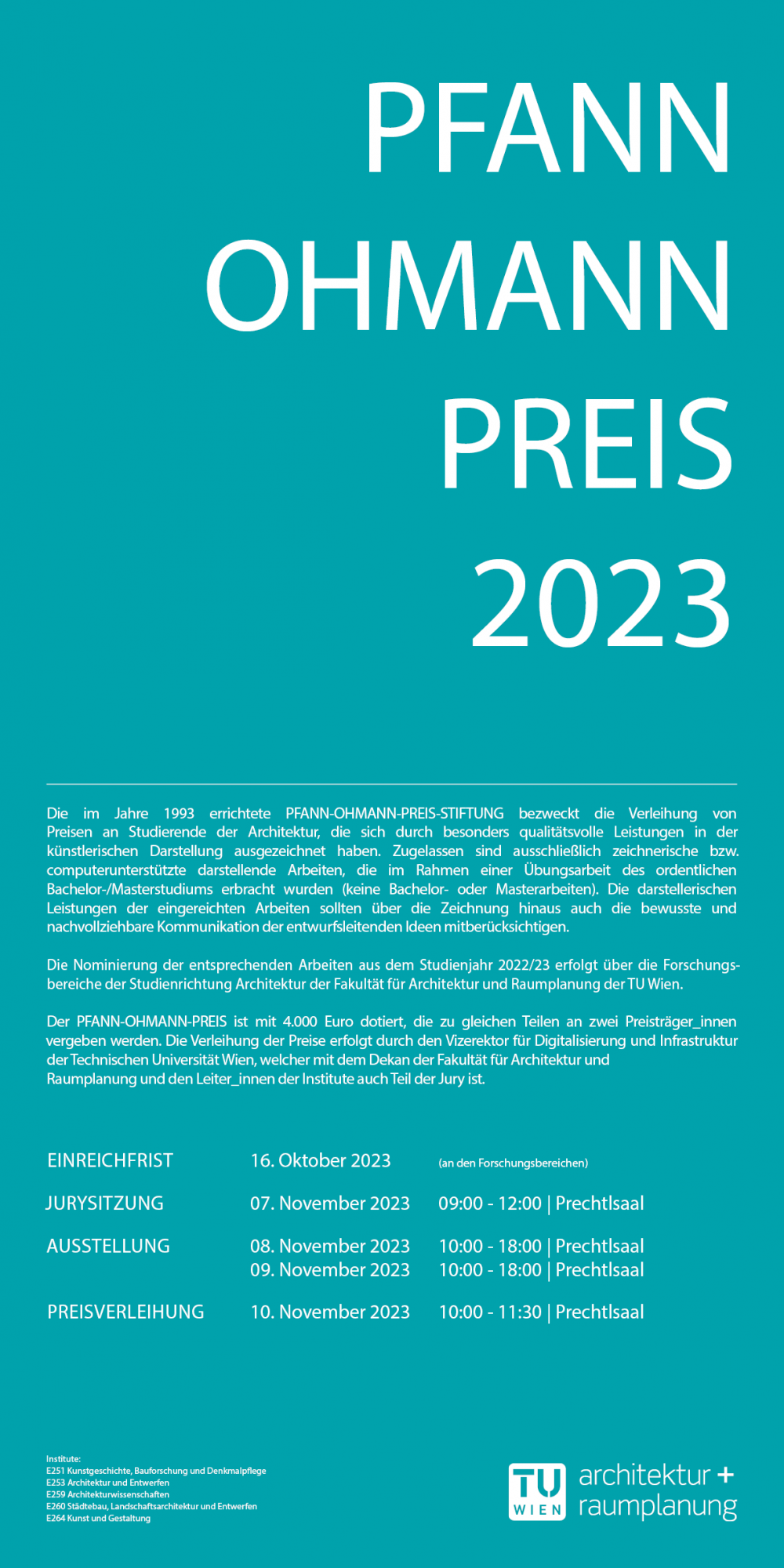
NOV 10, 2023
10:00
EXHIBITION:
PFANN-OHMANN-PREIS 2023
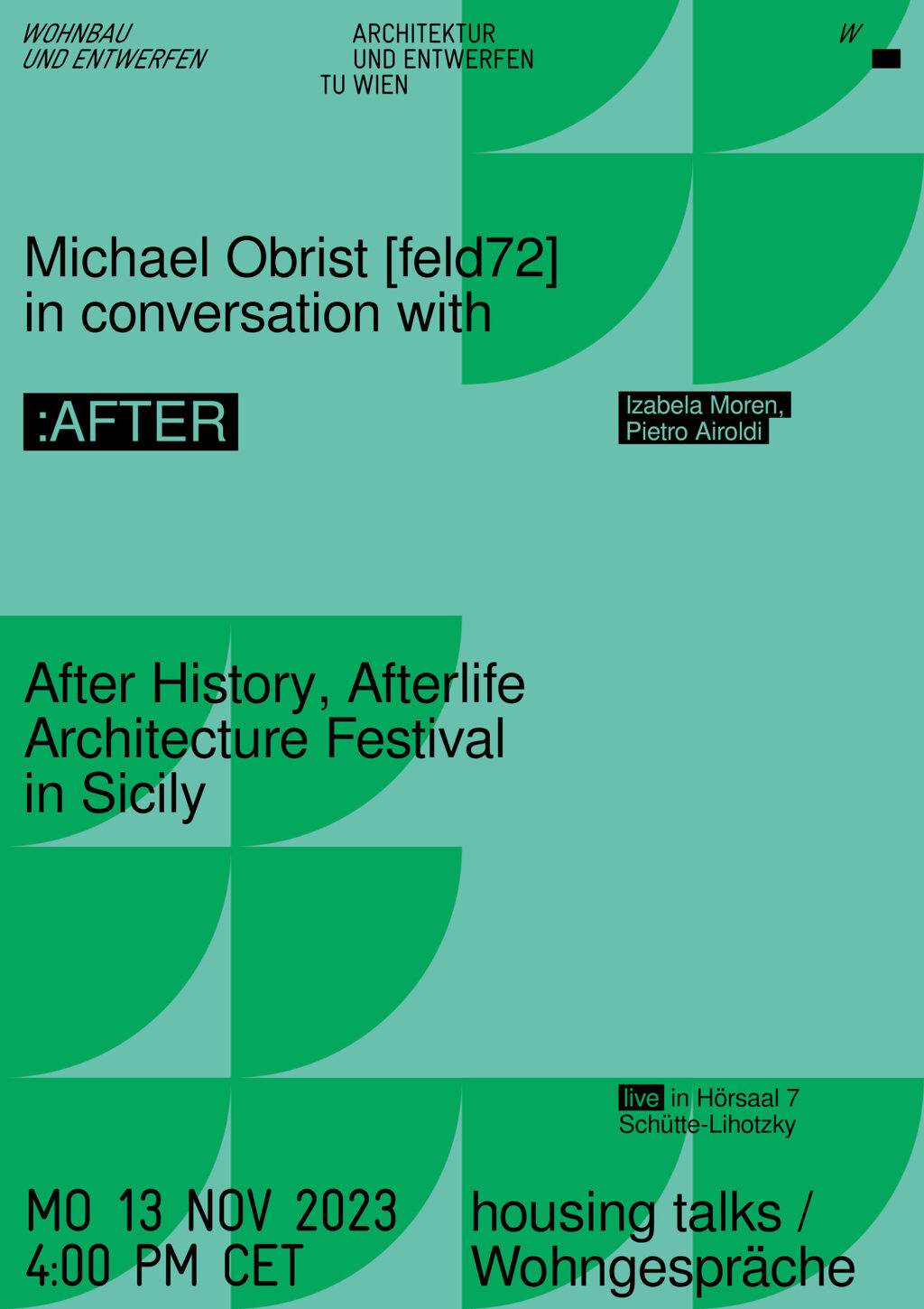
NOV 13, 2023
16:00
HOUSING TALKS:
IZABELA MOREN, PIETRO AIROLDI
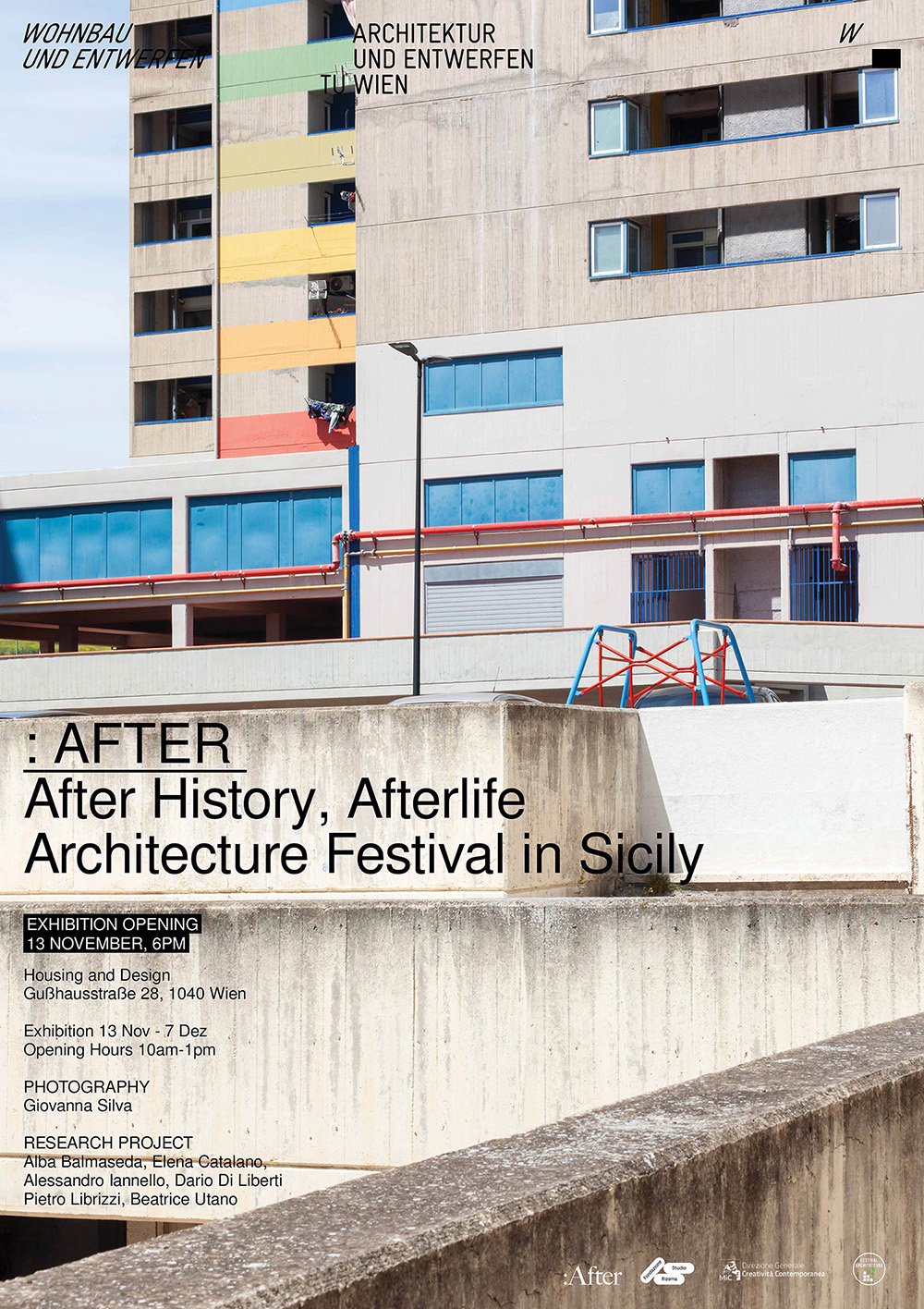
NOV 13, 2023
18:00
EXHIBITION:
MODERNITY SOUTH SOUTH
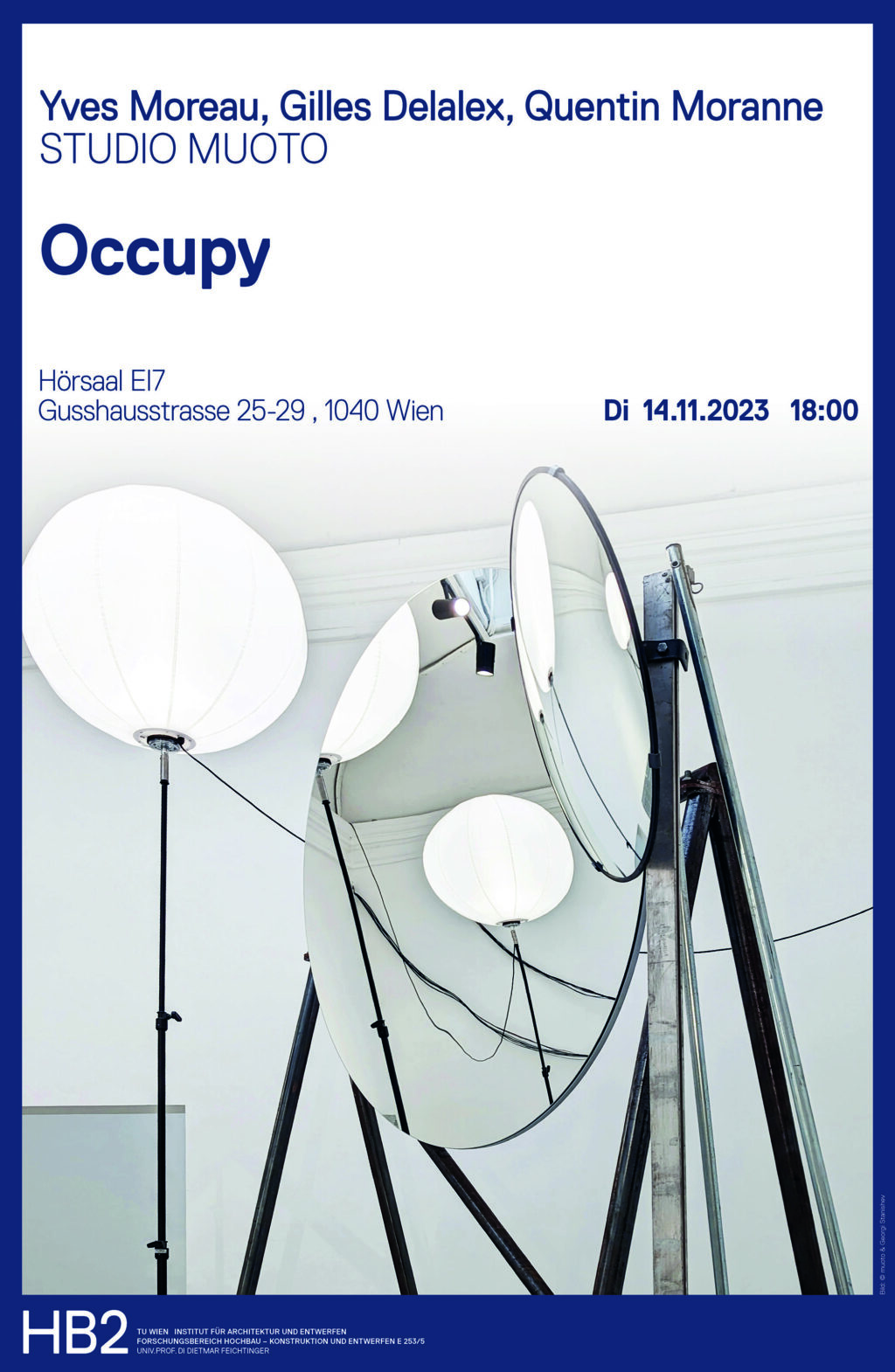
NOV 14, 2023
18:00
LECTURE:
STUDIO MUOTO
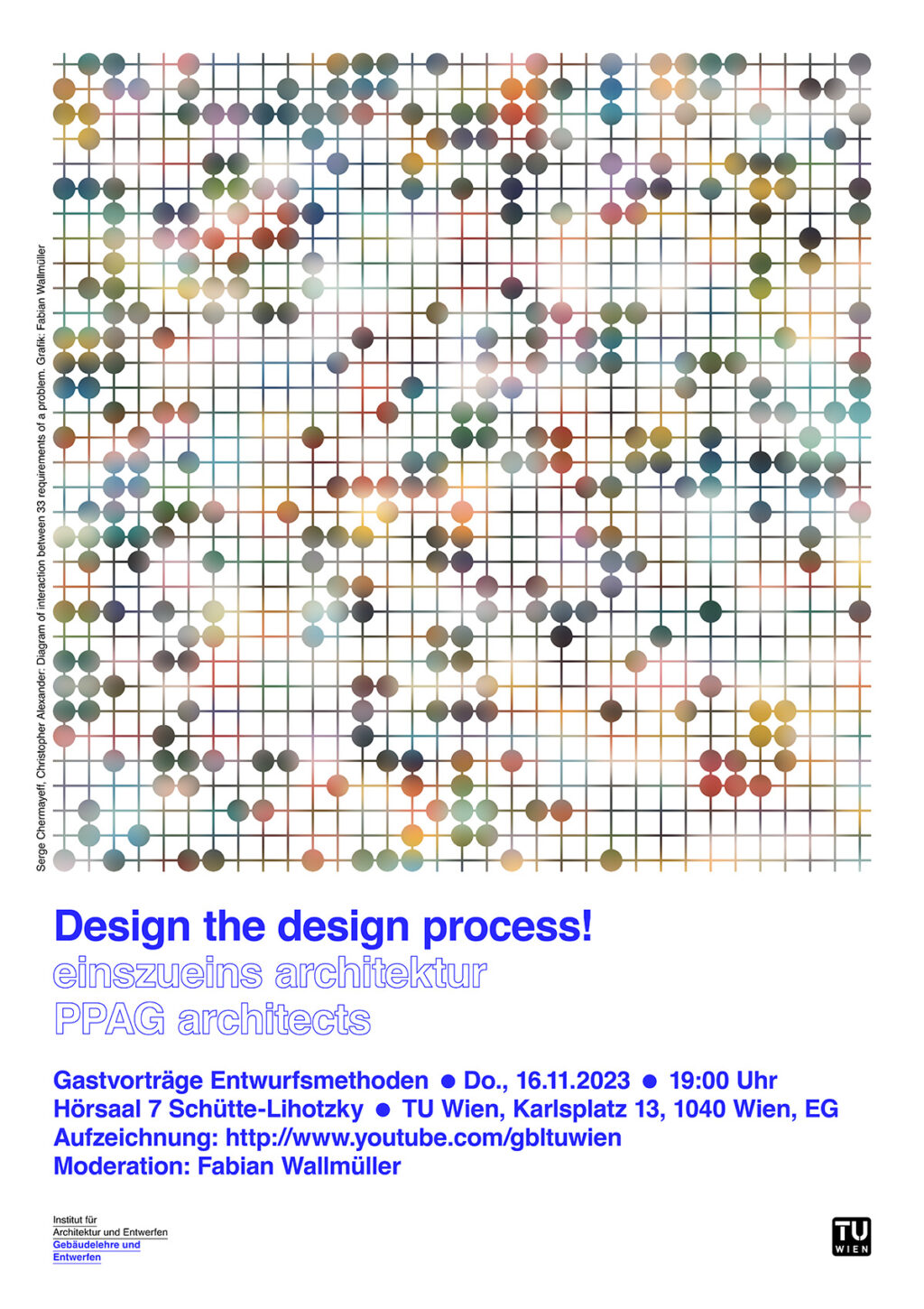
NOV 16, 2023
19:00
LECTURE:
einszueins architektur, PPAG architects
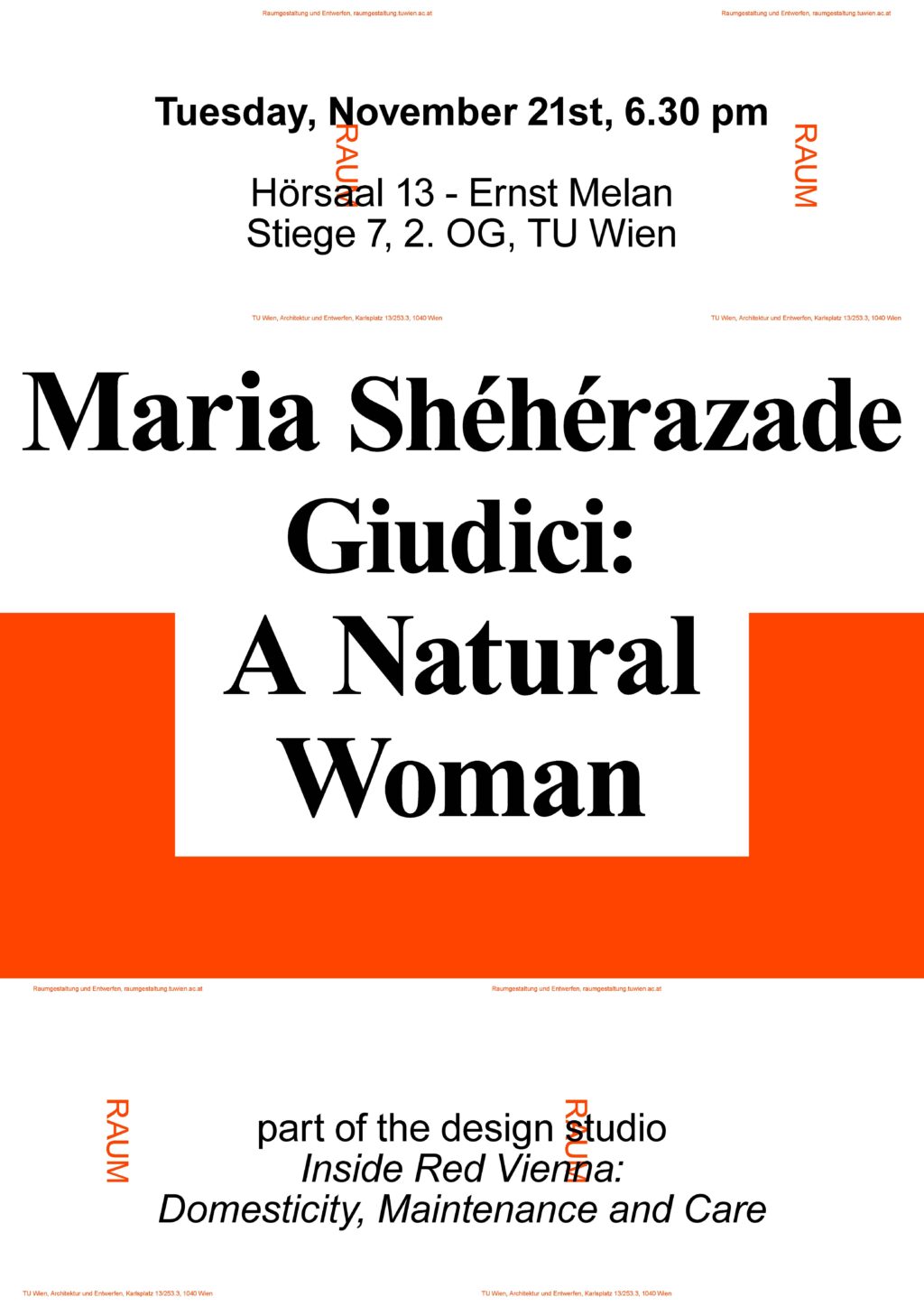
NOV 21, 2023
18:30
LECTURE:
MARIA SHÉHÉRAZADE GUIDICI

NOV 22, 2023
16:00
SYMPOSIUM:
RADIKALE SYMBIOSEN
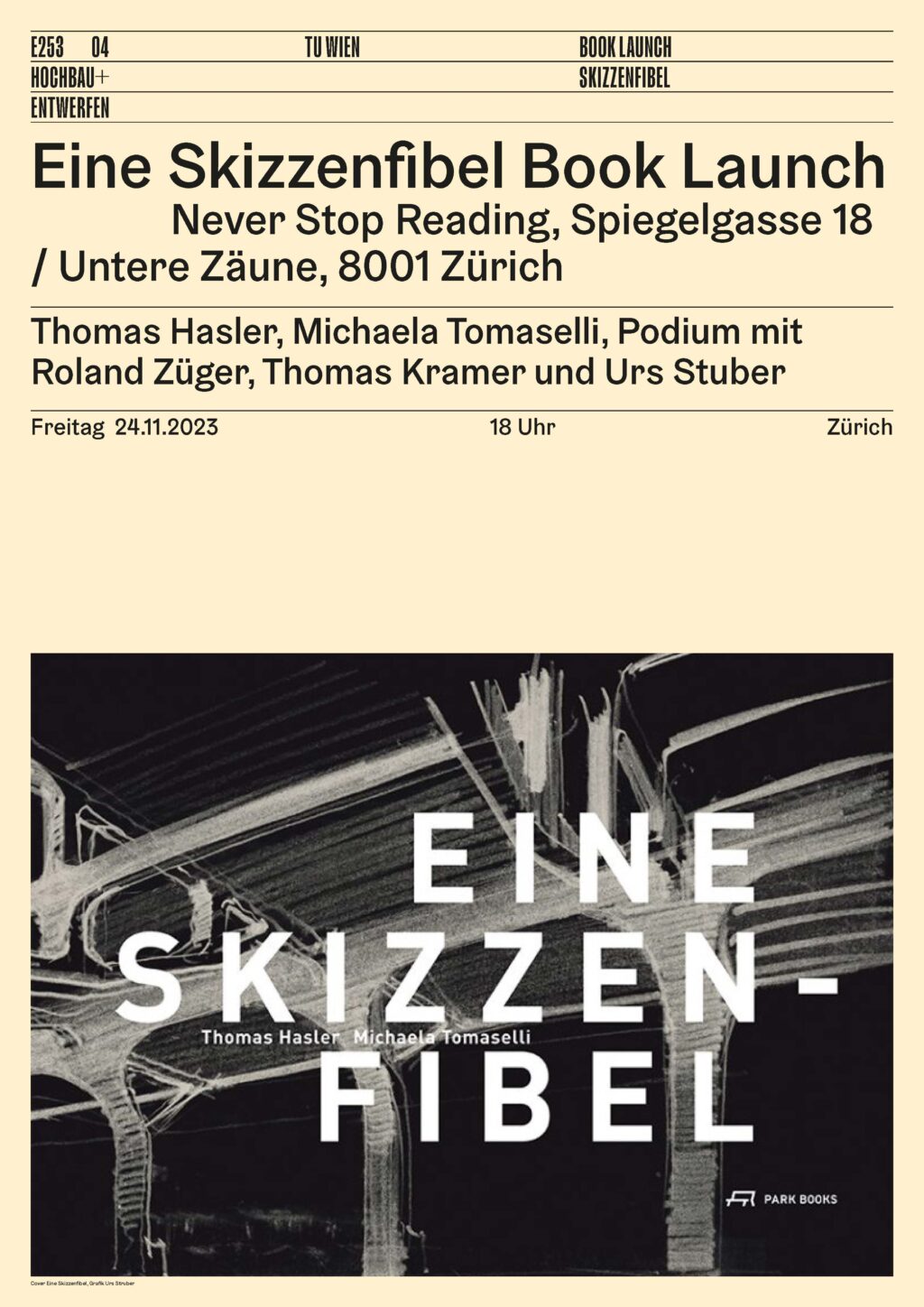
NOV 24, 2023
18:00
BOOK LAUNCH:
EINE SKIZZENFIBEL
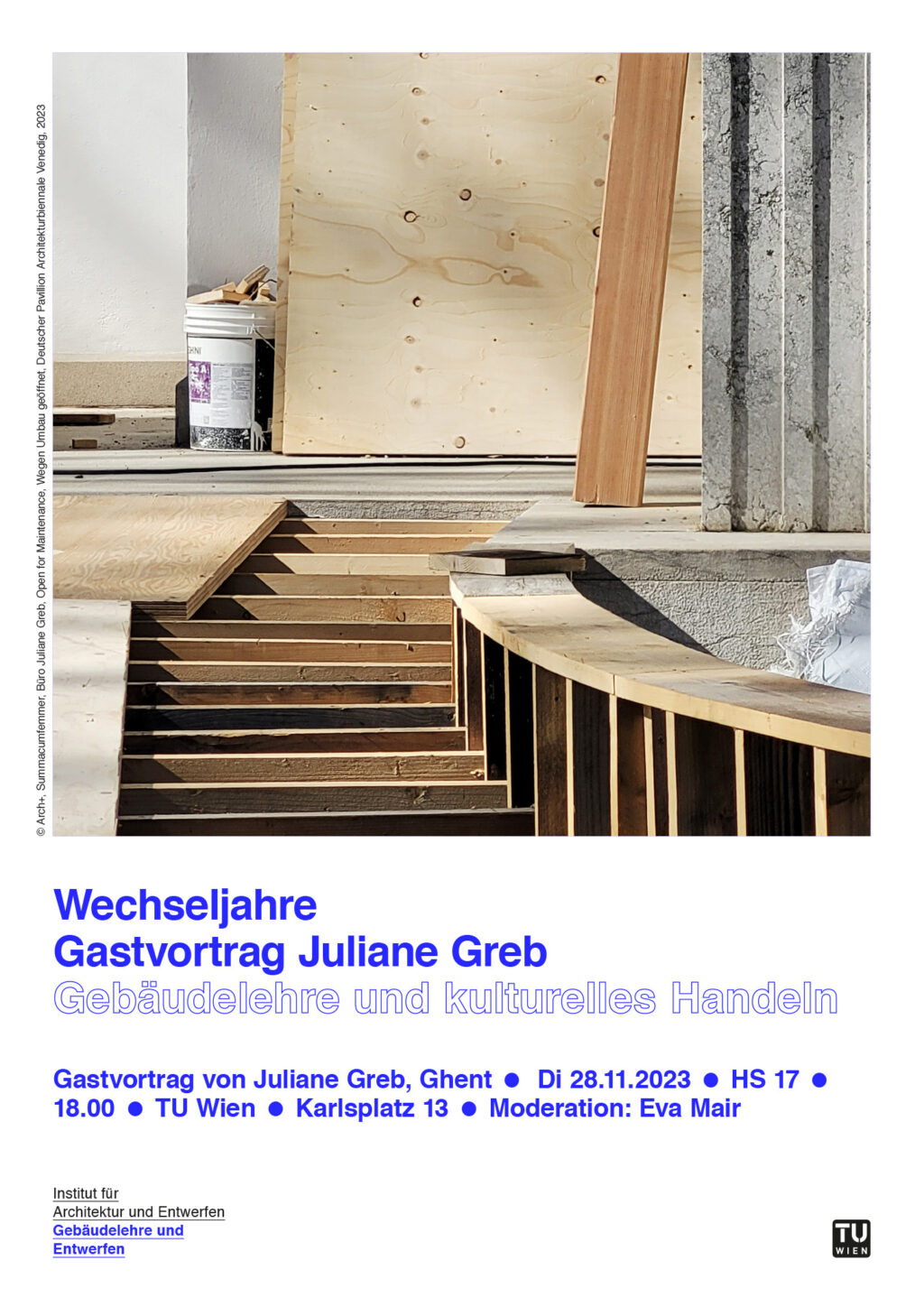
NOV 28, 2023
18:00
LECTURE:
JULIANE GREB

NOV 28, 2023
18:00
HOUSING TALKS:
DANIELE KARASZ

NOV 30, 2023
18:00
LECTURE:
GABRIELA DENK
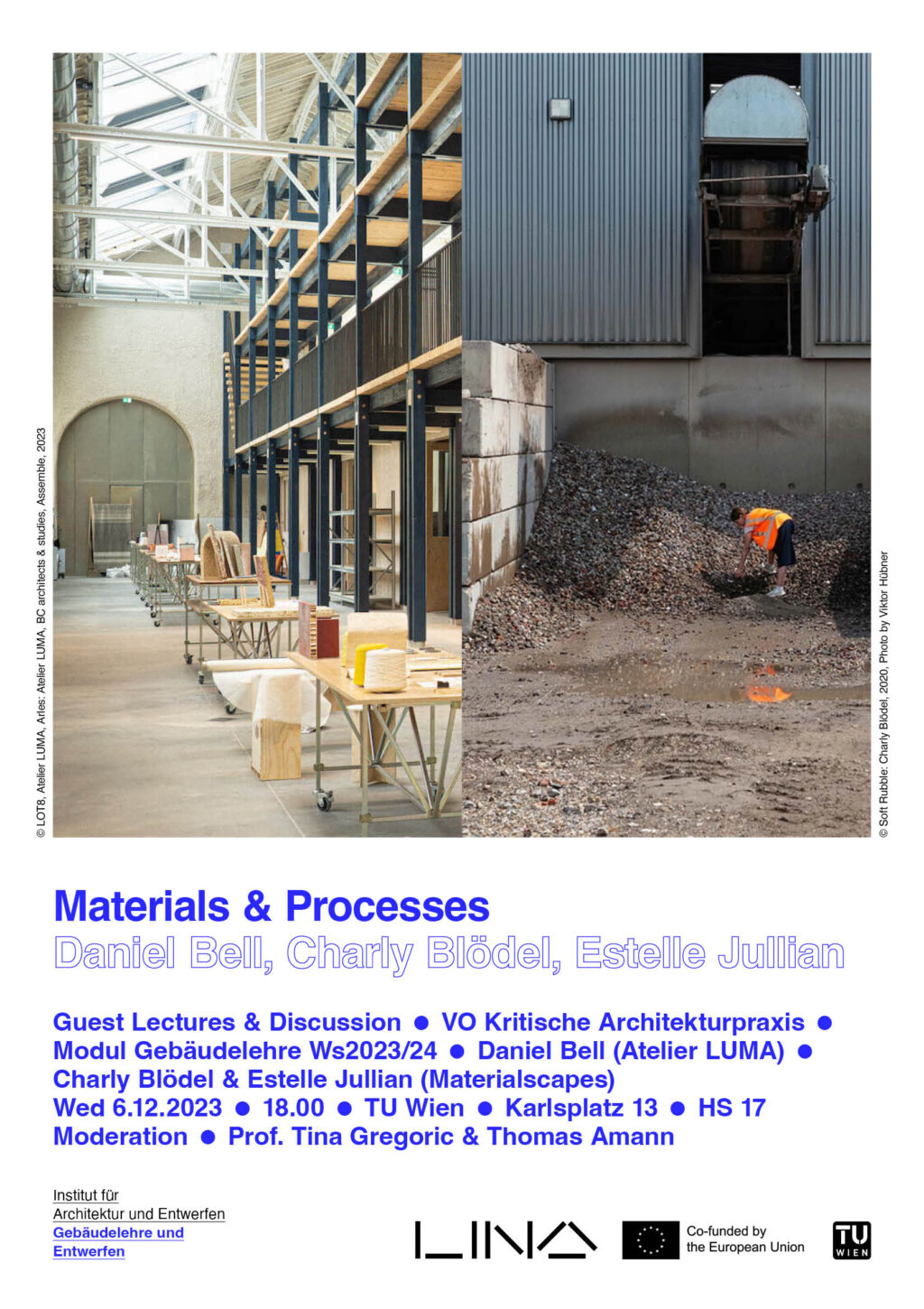
DEC 6, 2023
18:00
LECTURES:
DANIEL BELL, CHARLY BLÖDEL, ESTELLE JULLIAN
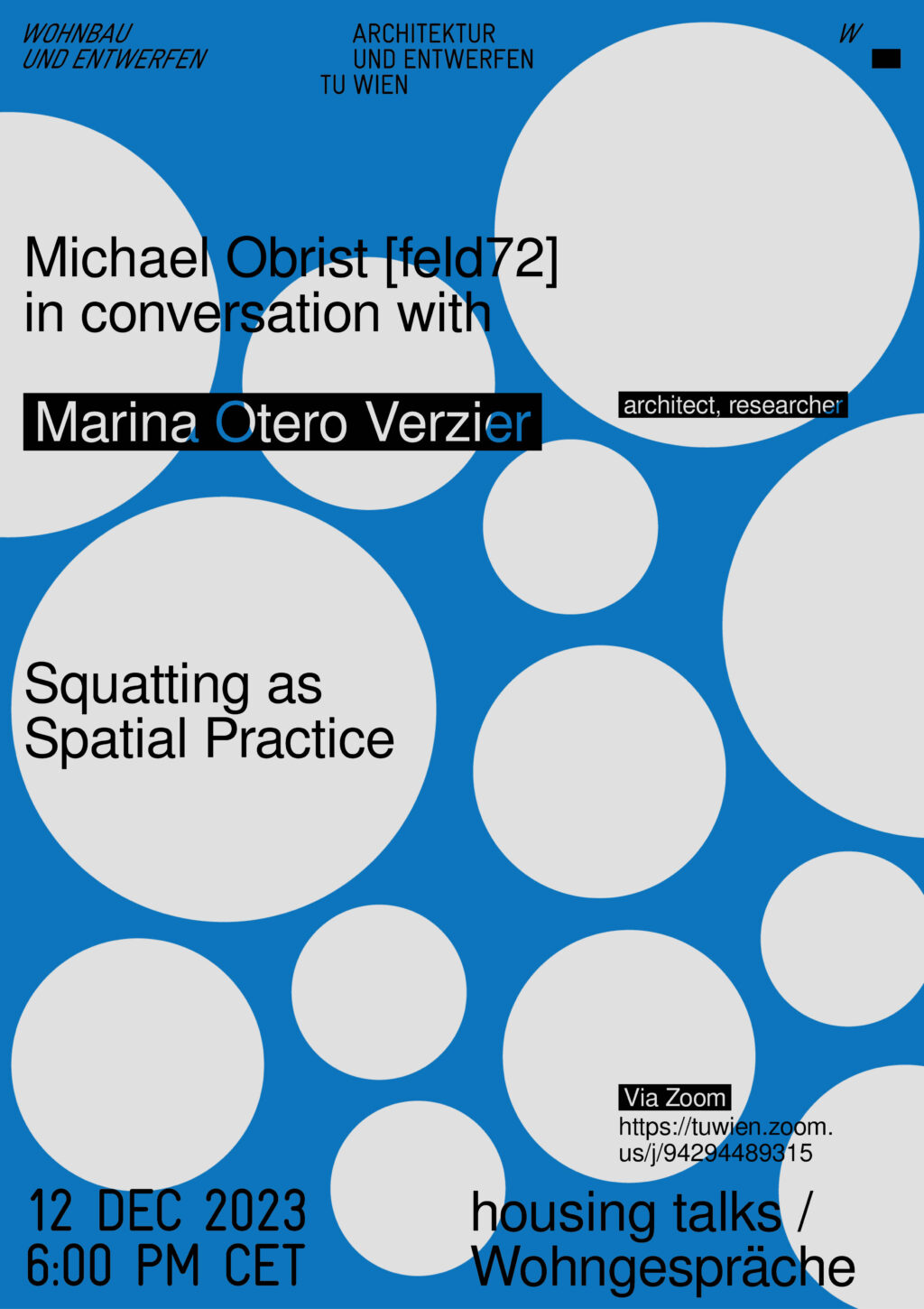
DEC 12, 2023
18:00
HOUSING TALKS:
MARINA OTERO VERZIER
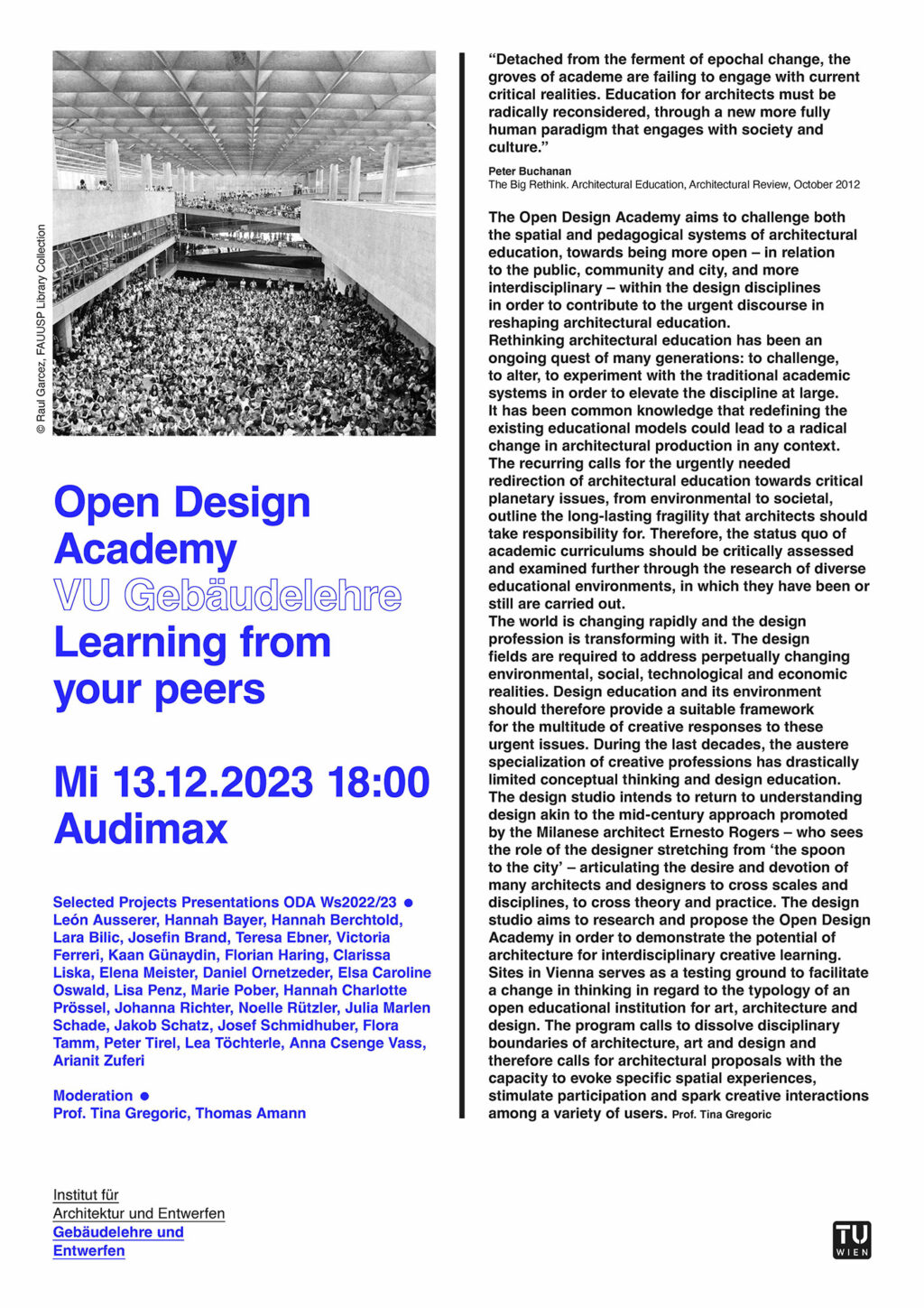
DEC 13, 2023
18:00
LECTURES:
OPEN DESIGN ACADEMY – LEARNING FROM YOUR PEERS

DEC 14, 2023
18:00
LECTURE:
Marc Barani
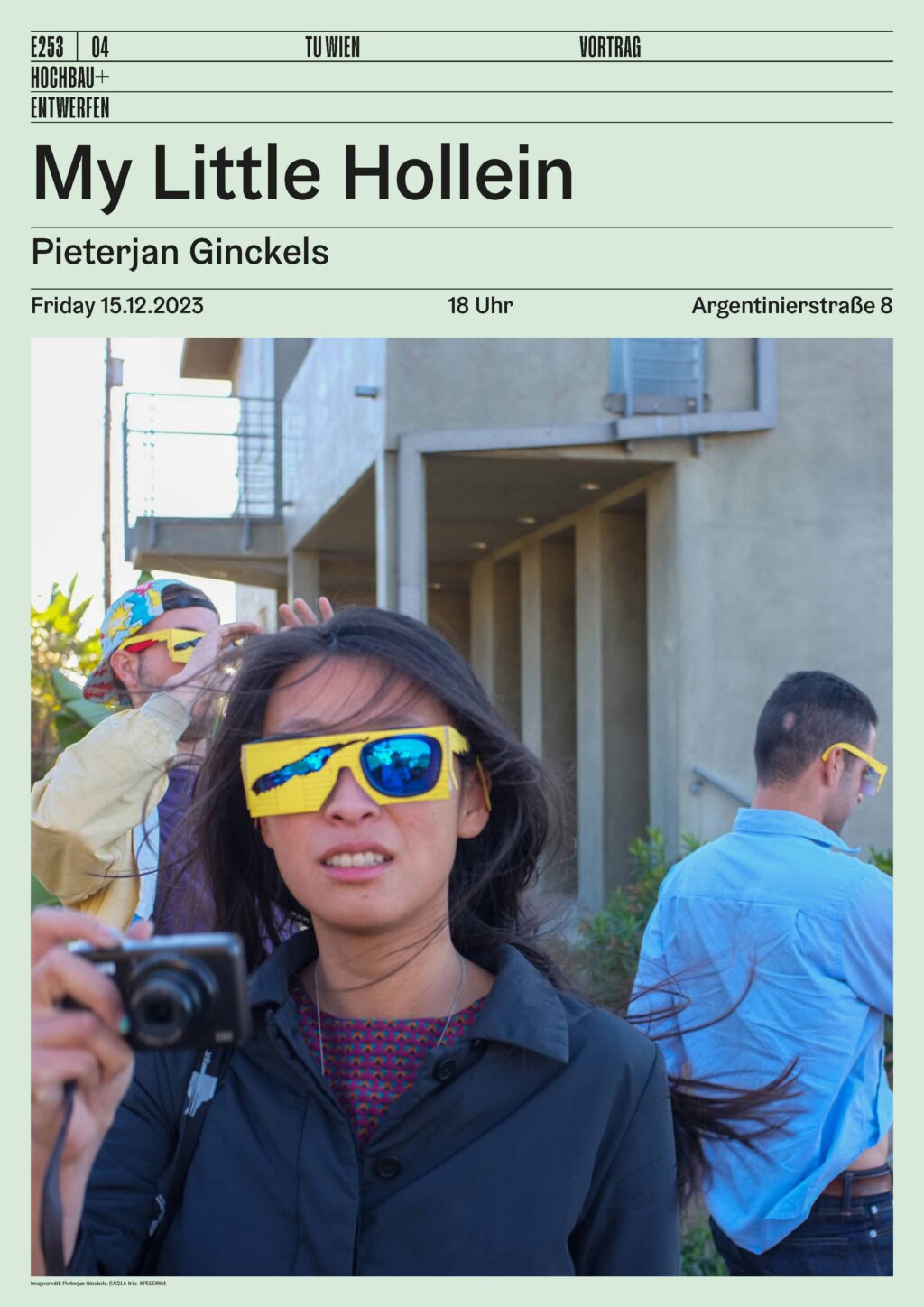
DEC 15, 2023
18:00
LECTURE:
PIETERJAN GINCKELS, KU LEUVEN
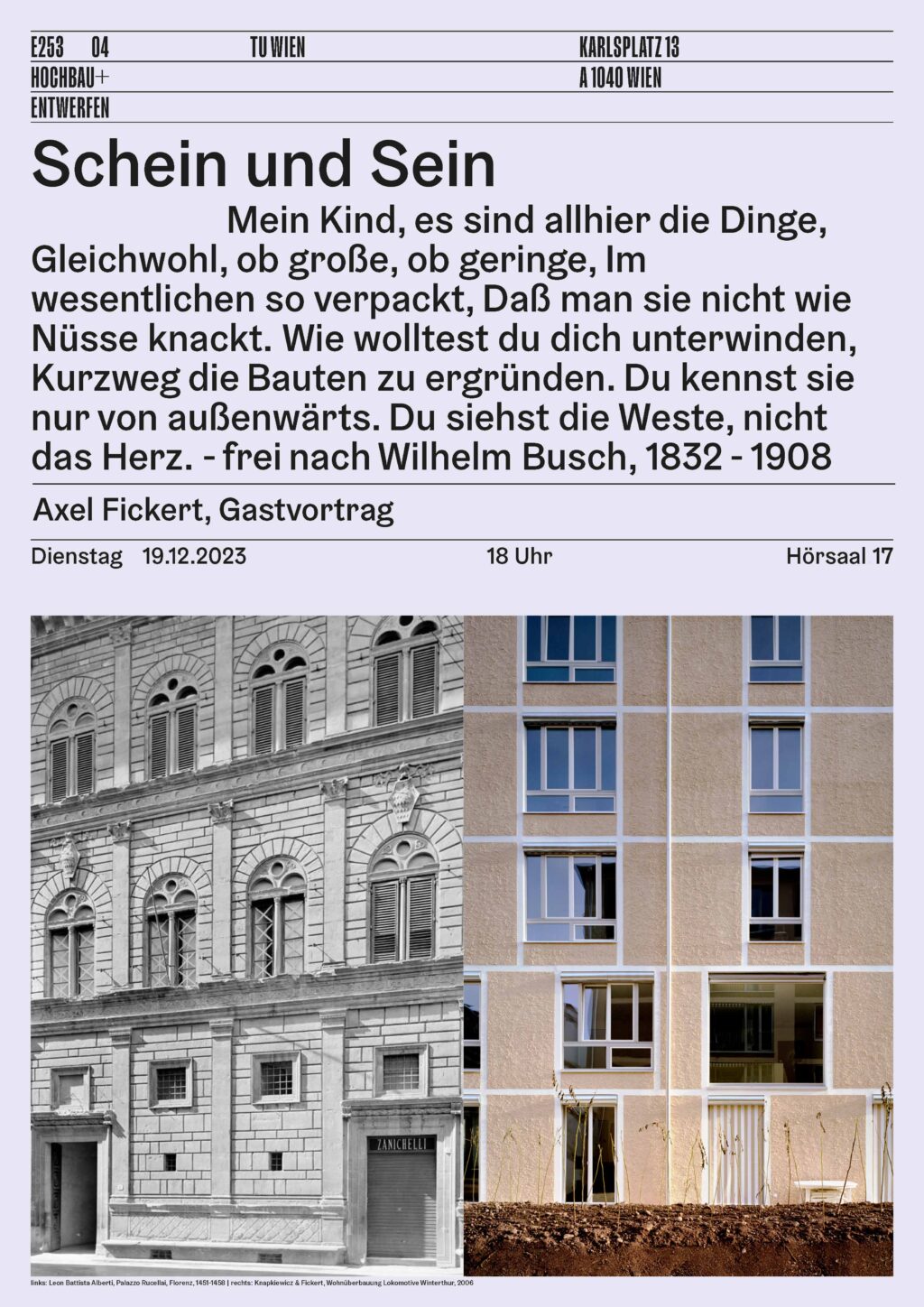
DEC 19, 2023
18:00
LECTURE:
AXEL FICKERT, KNAPKIEWICZ & FICKERT

DEC 20, 2023
18:30
BOOK LAUNCH:
ENTWURFF EINER HISTORISCHEN ARCHITEKTUR
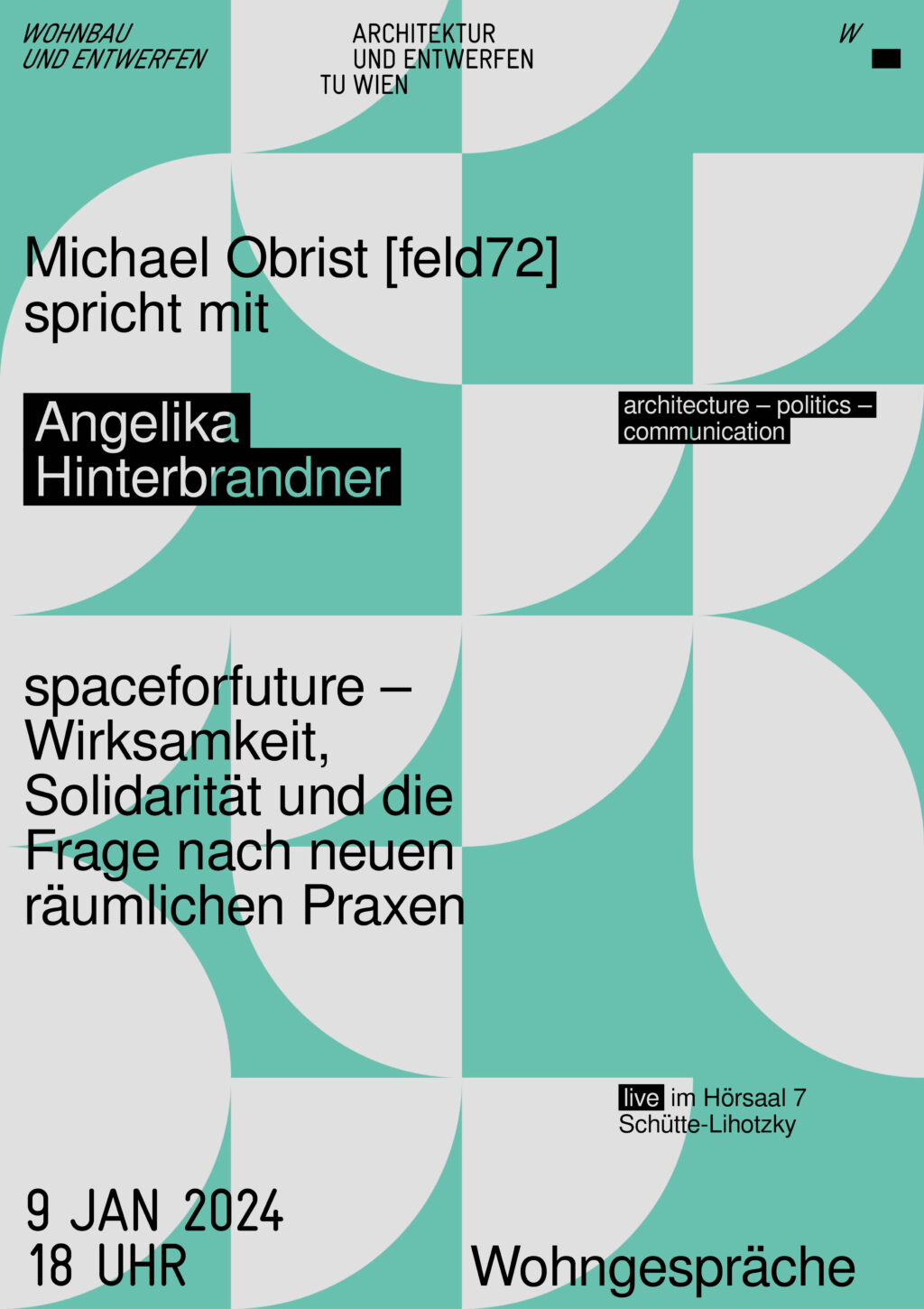
JAN 9, 2024
18:00
HOUSING TALKS:
ANGELIKA HINTER-
BRANDNER
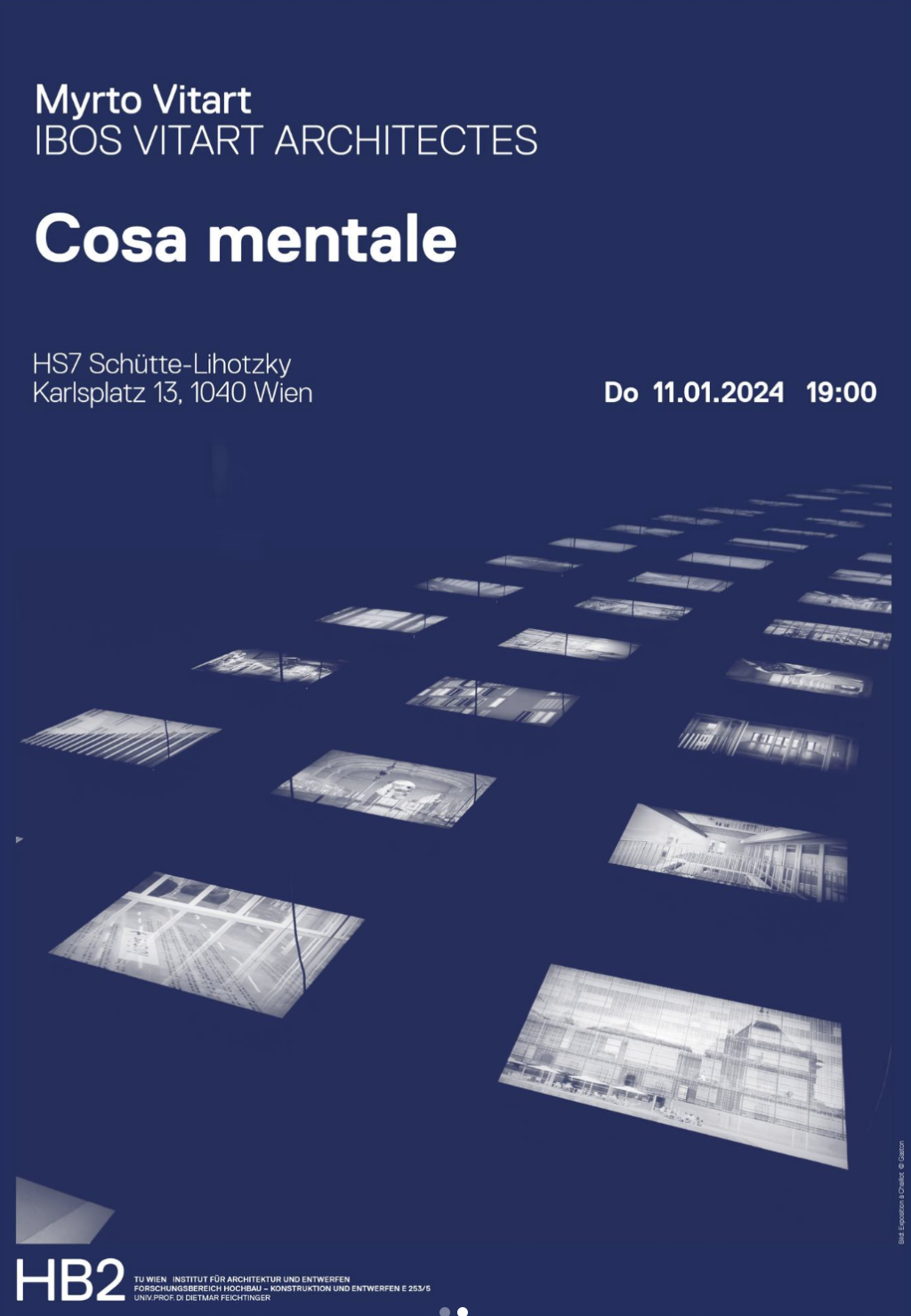
JAN 11, 2024
19:00
LECTURE:
Myrto Vitart
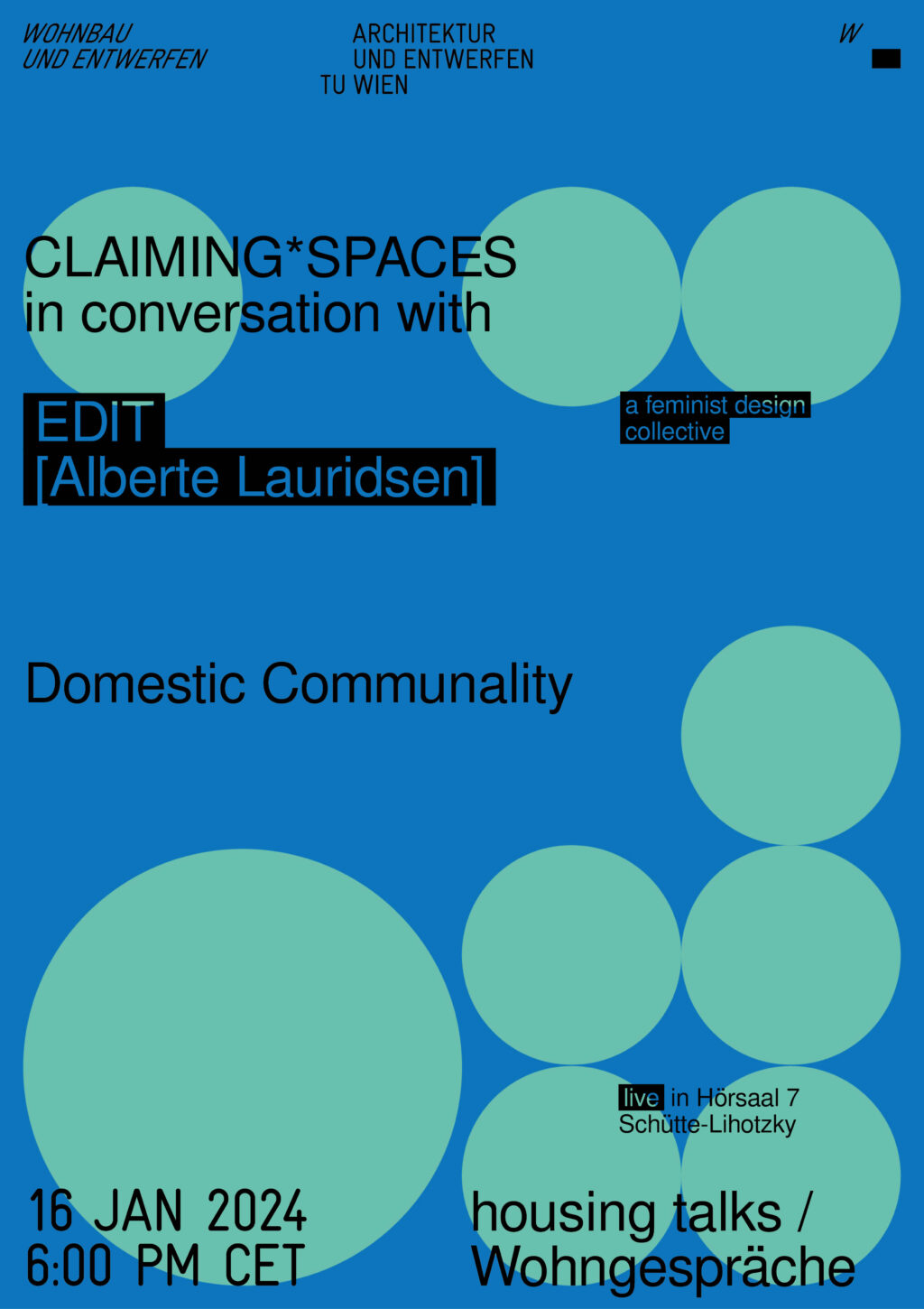
JAN 16, 2024
18:00
HOUSING TALKS:
EDIT [ALBERTE LAURIDSEN]
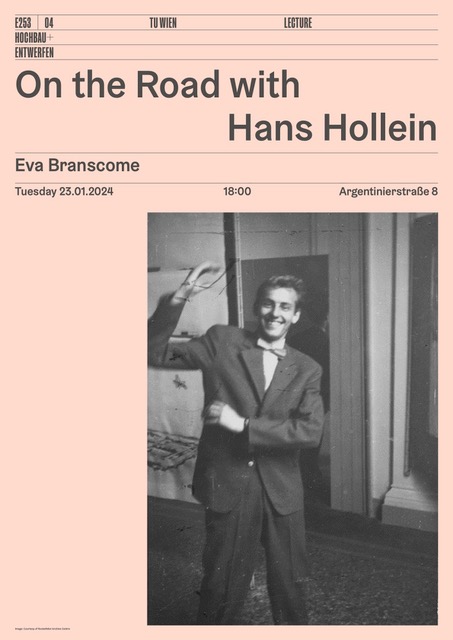
JAN 23, 2024
18:00
LECTURE:
Eva Branscome
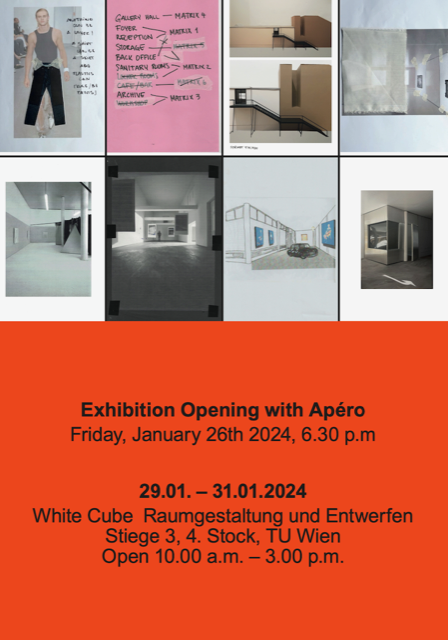
JAN 26, 2024
18:30
EXHIBITION:
DISPLAY & EXHIBIT CASE STUDY HELMUT LANG

JAN 29, 2024
13:00
PRESENTATION & DISCUSSION:
proHolz Student Trophy 24
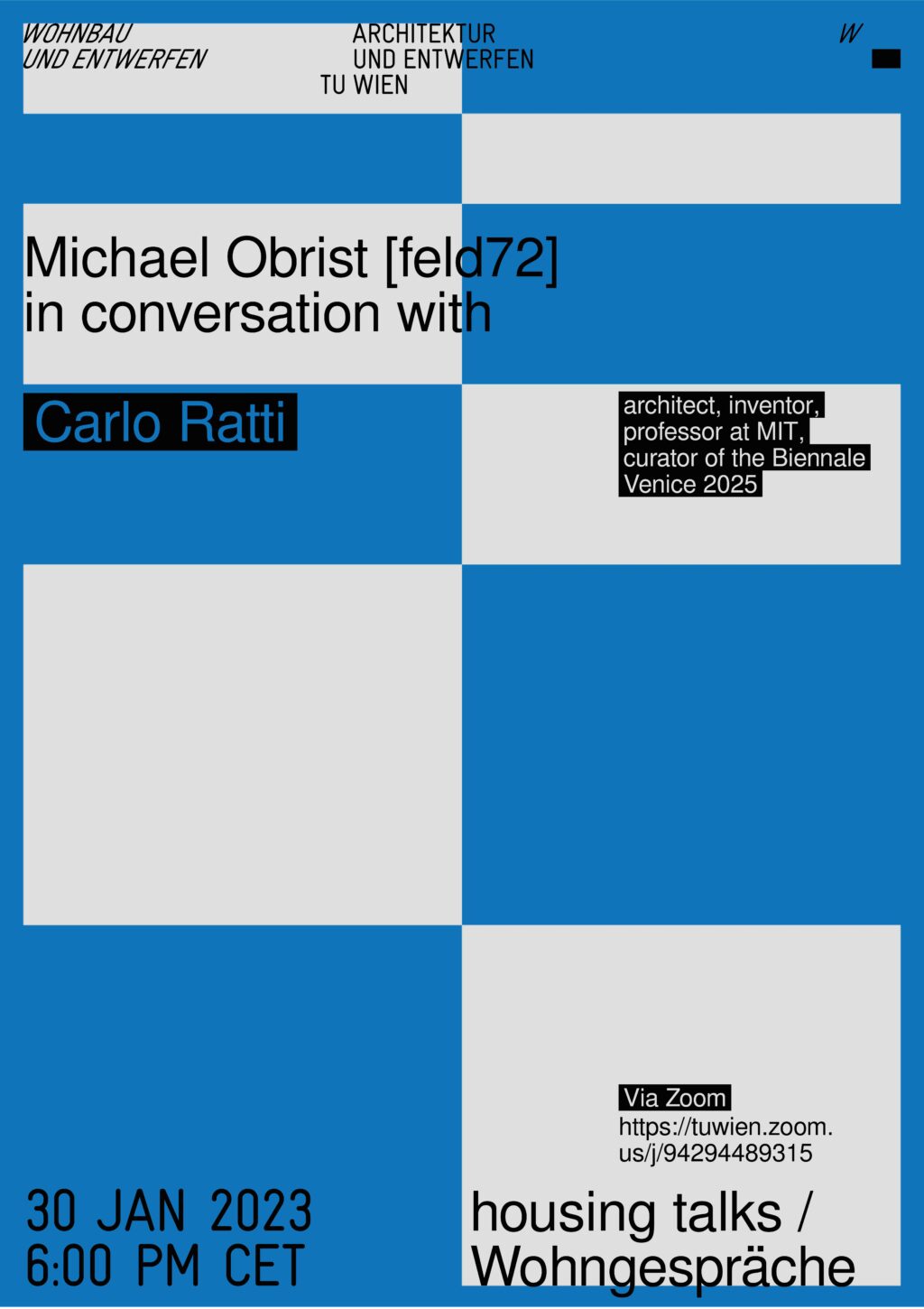
JAN 30, 2024
18:00
HOUSING TALKS: CARLO RATTI
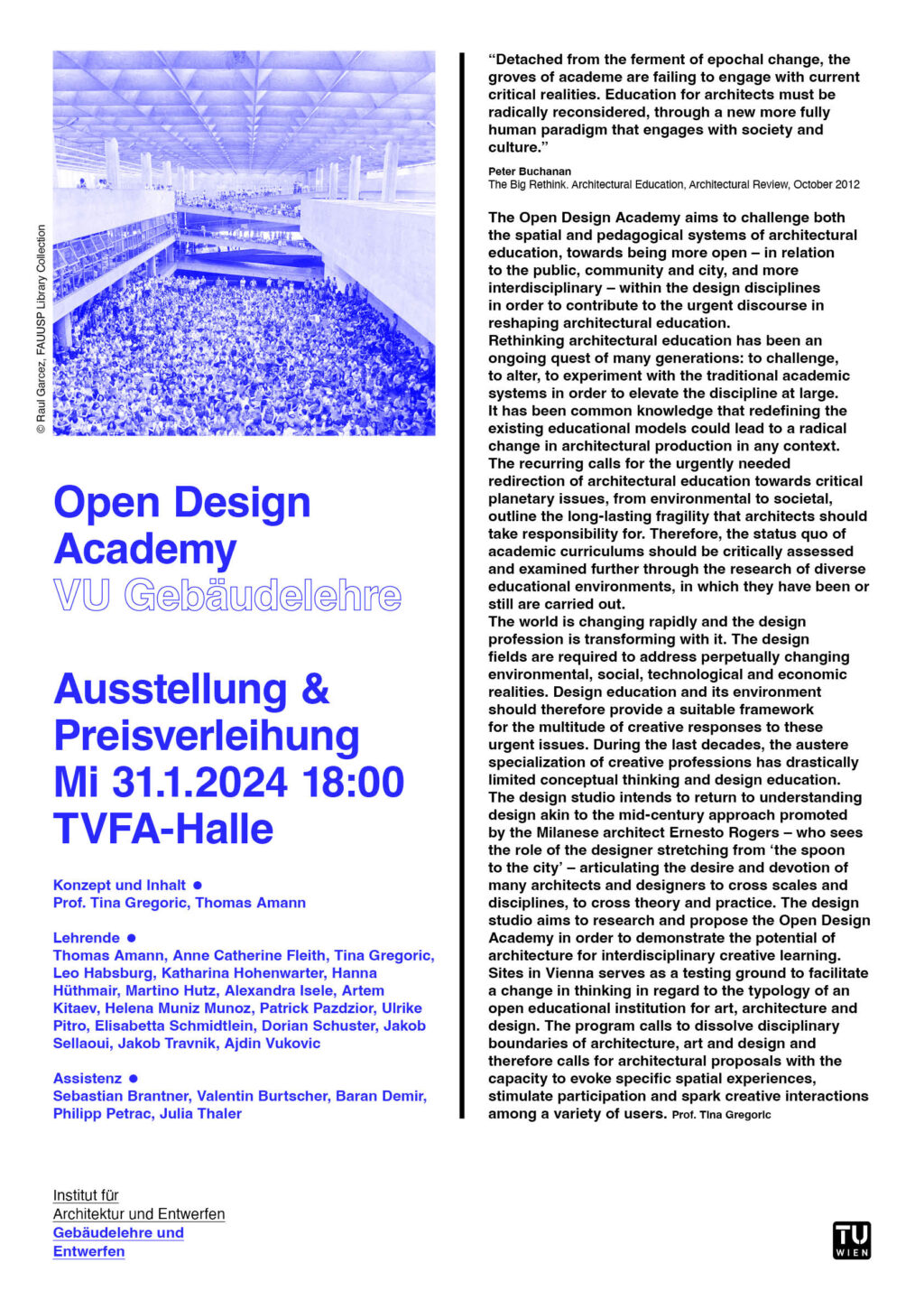
JAN 31, 2024
18:00
EXHIBITION:
OPEN DESIGN ACADEMY
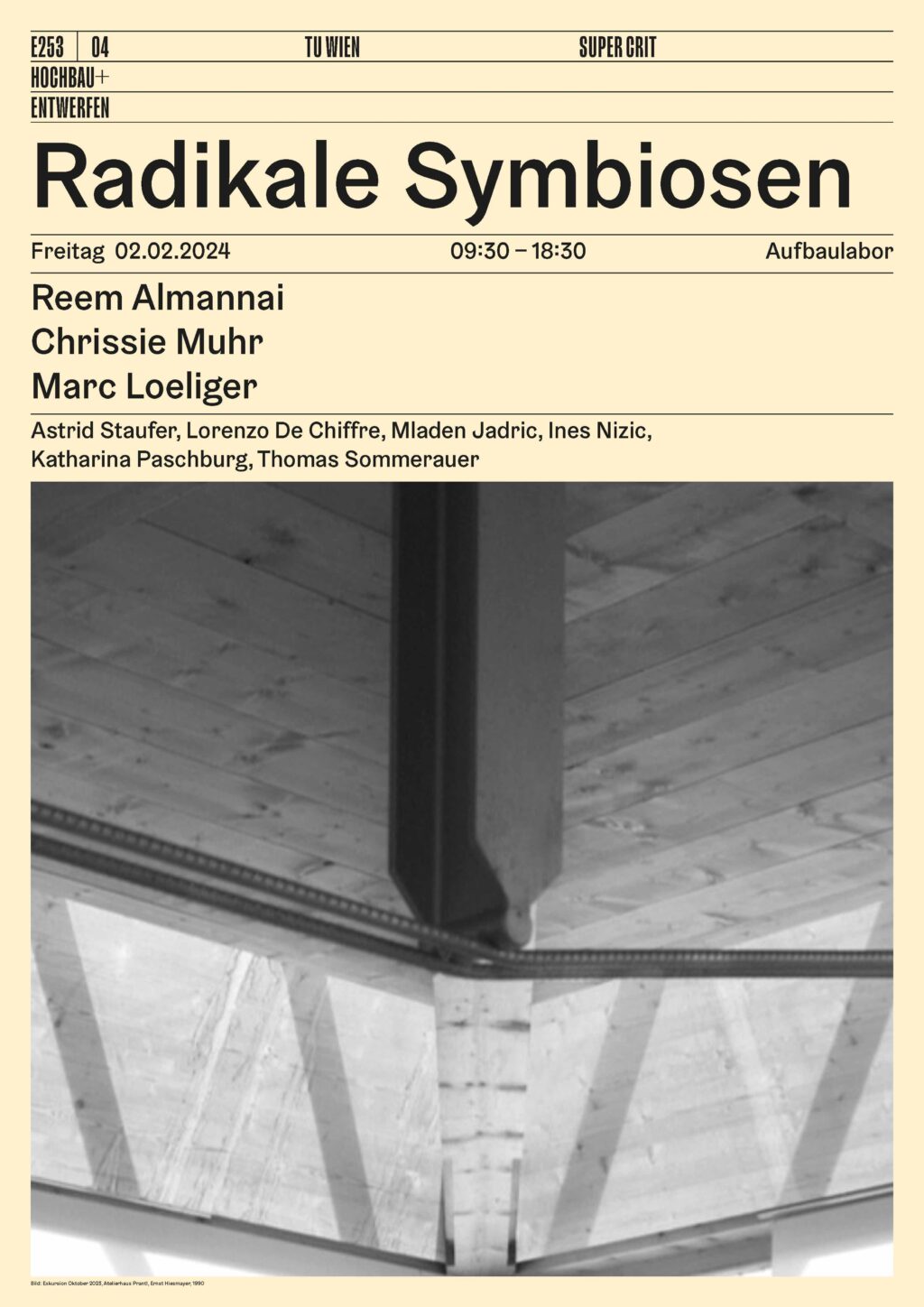
FEB 2, 2024
09:30
SUPERCRIT, EXHIBITION & DISCUSSION:
RADIKALE SYMBIOSEN

MAR 4, 2024
18:30
EXHIBITION:
REVIEW’23
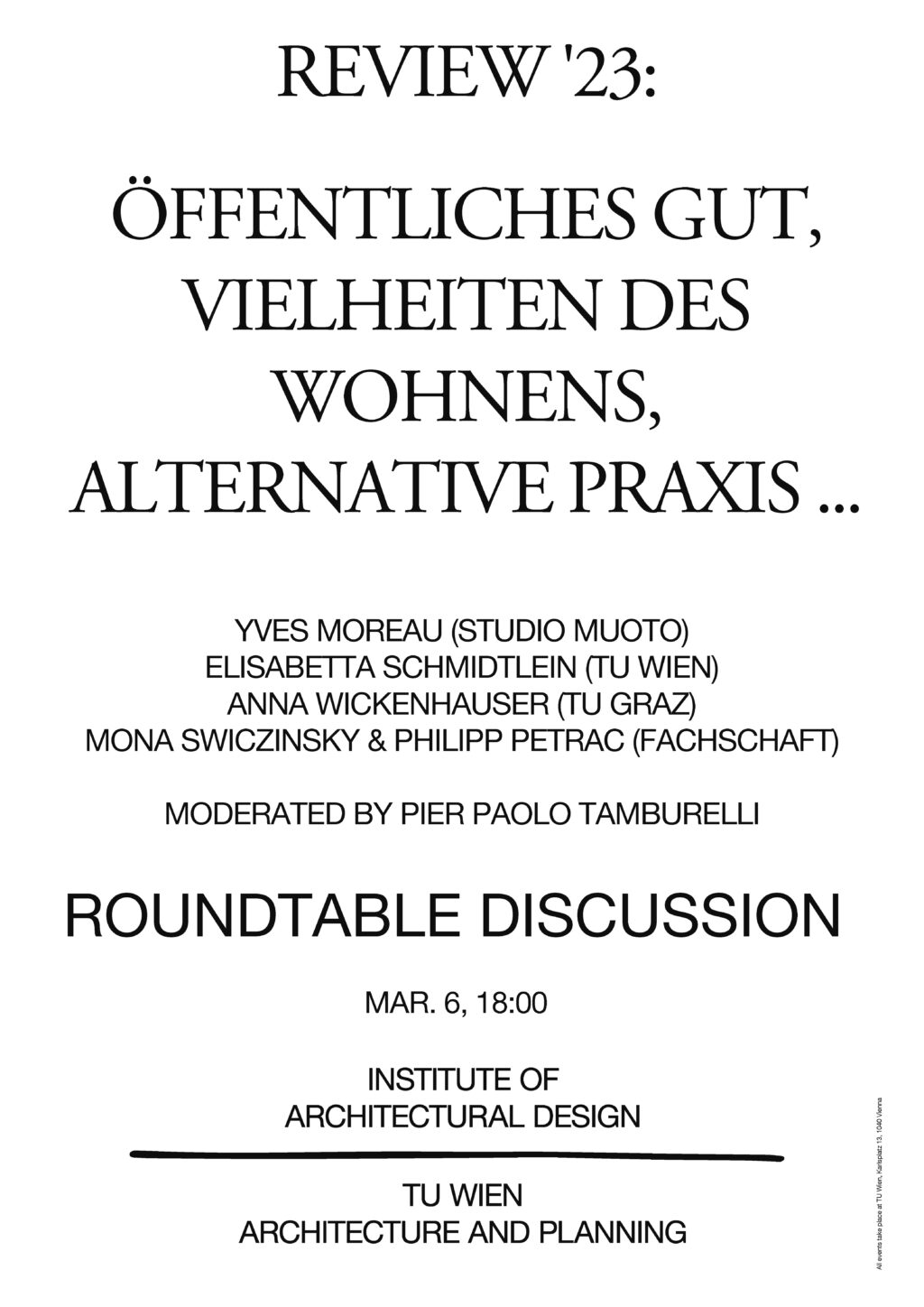
MAR 6, 2024
18:00
ROUNDTABLE DISCUSSION:
REVIEW’23
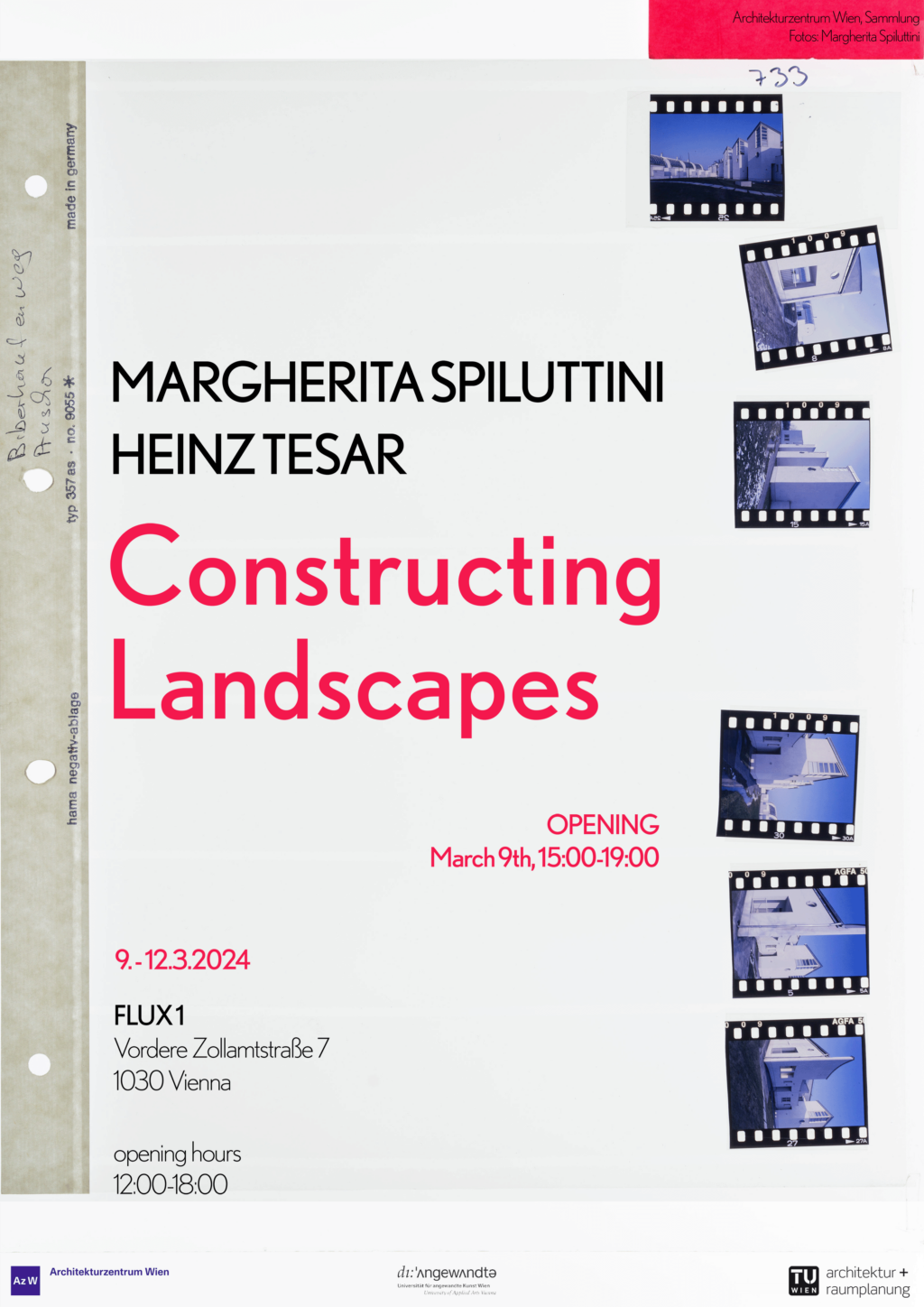
MAR 9, 2024
15:00
EXHIBITION:
CONSTRUCTING LANDSCAPES – Margherita Spiluttini & Heinz Tesar
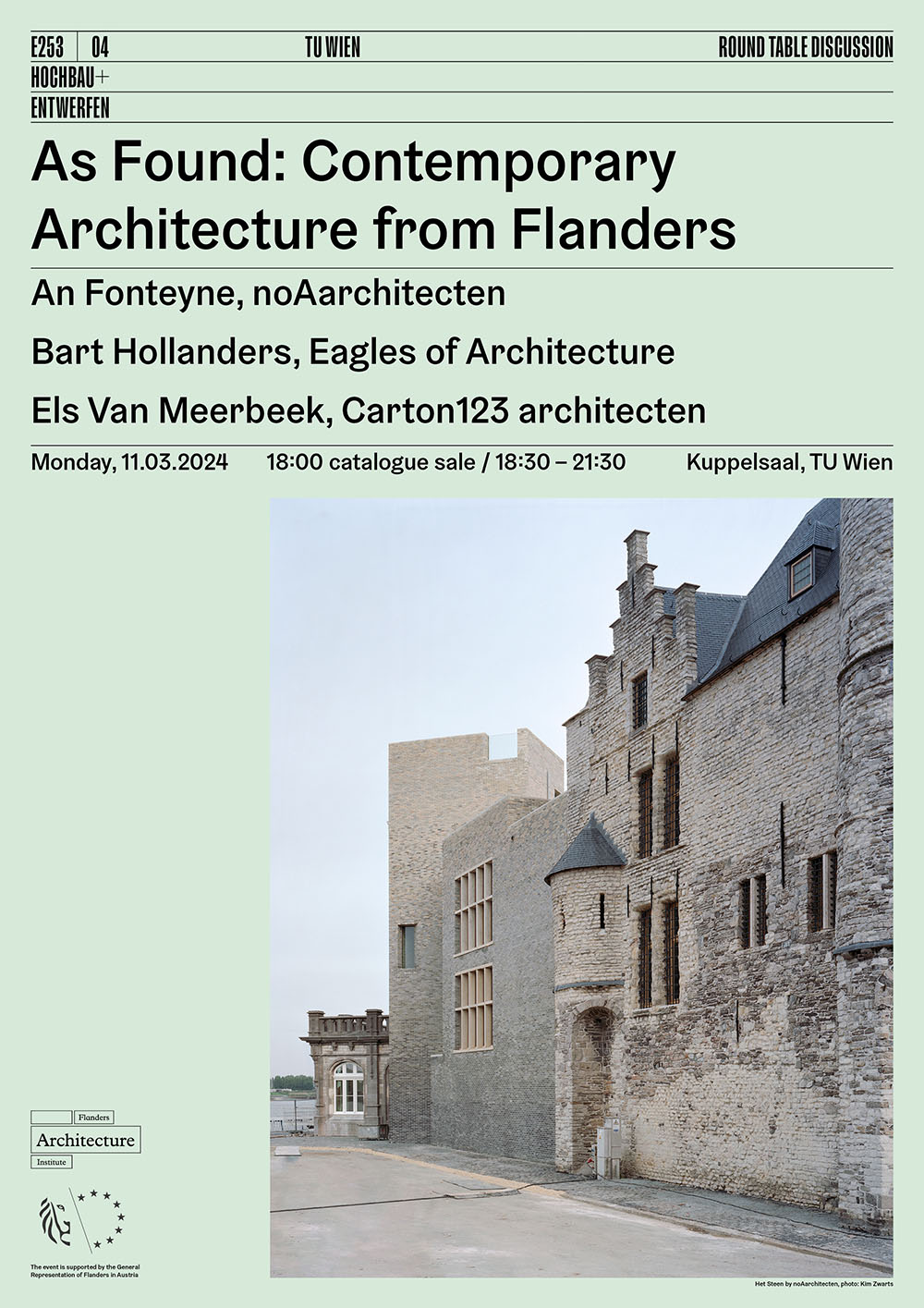
MAR 11, 2024
18:00
DISCUSSION:
An Fonteyne, Bart Hollanders, Els Van Meerbeek

MAR 13, 2024
18:30
LECTURE:
ELKE KRASNY
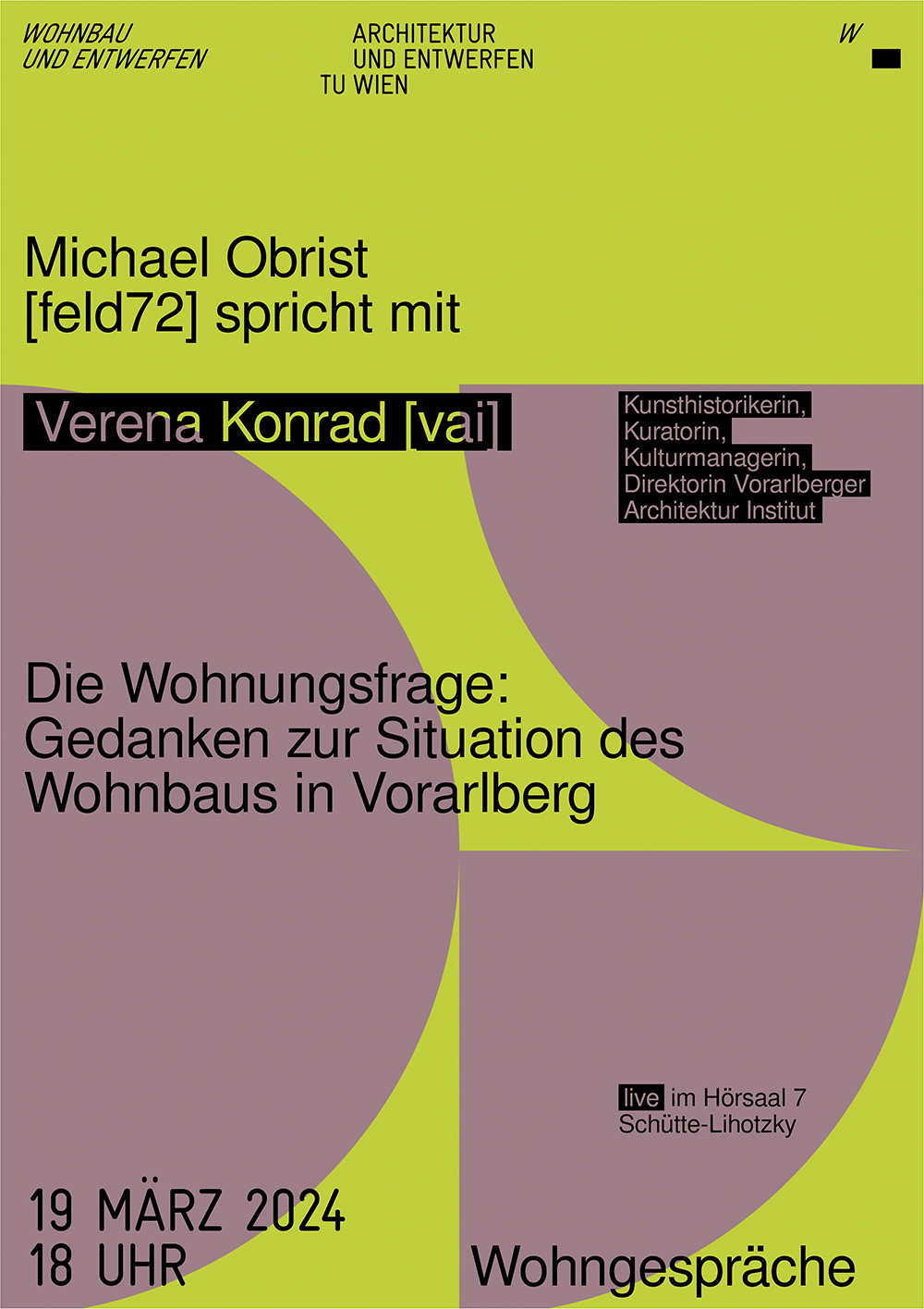
MAR 19, 2024
18:00
HOUSING TALKS:
VERENA KONRAD [vai]

APR 8, 2024
17:00
OPENING EVENT & LECTURE:
BIOFABRIQUE VIENNA
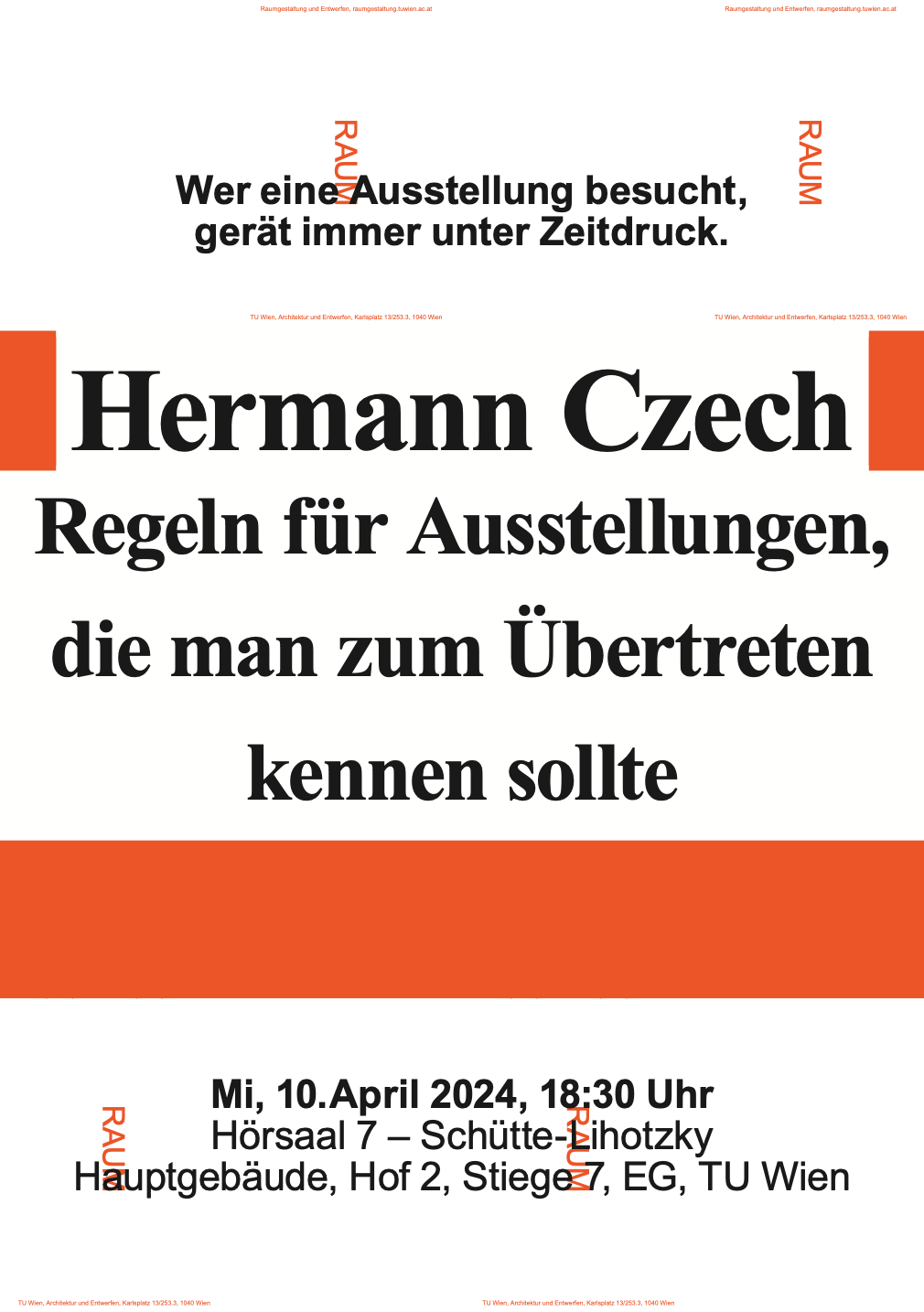
APR 10, 2024
18:30
LECTURE:
HERMANN CZECH

APR 15, 2024
18:00
HOUSING TALKS:
OLIVER ELSER
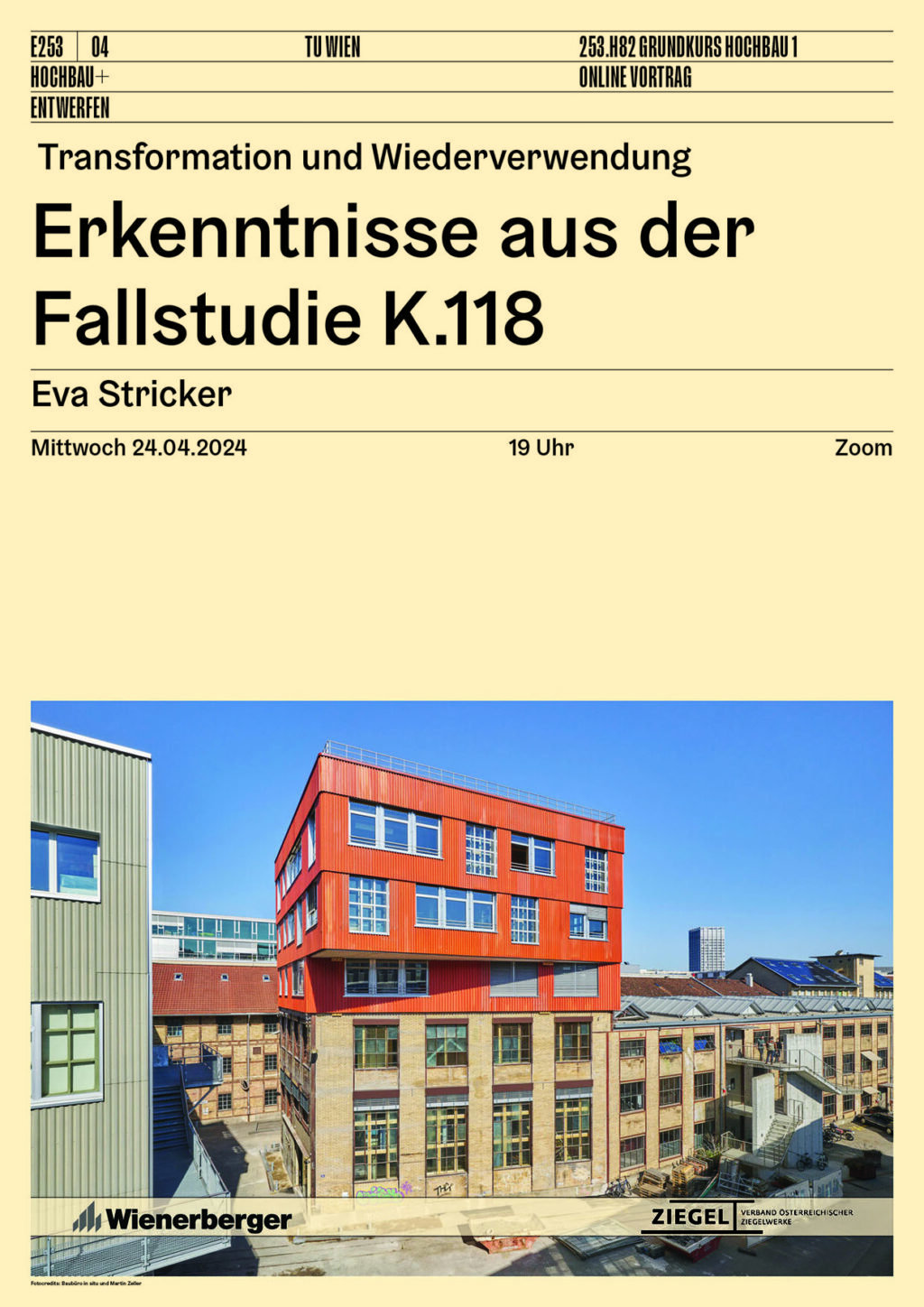
APR 24, 2024
19:00
LECTURE:
EVA STRICKER
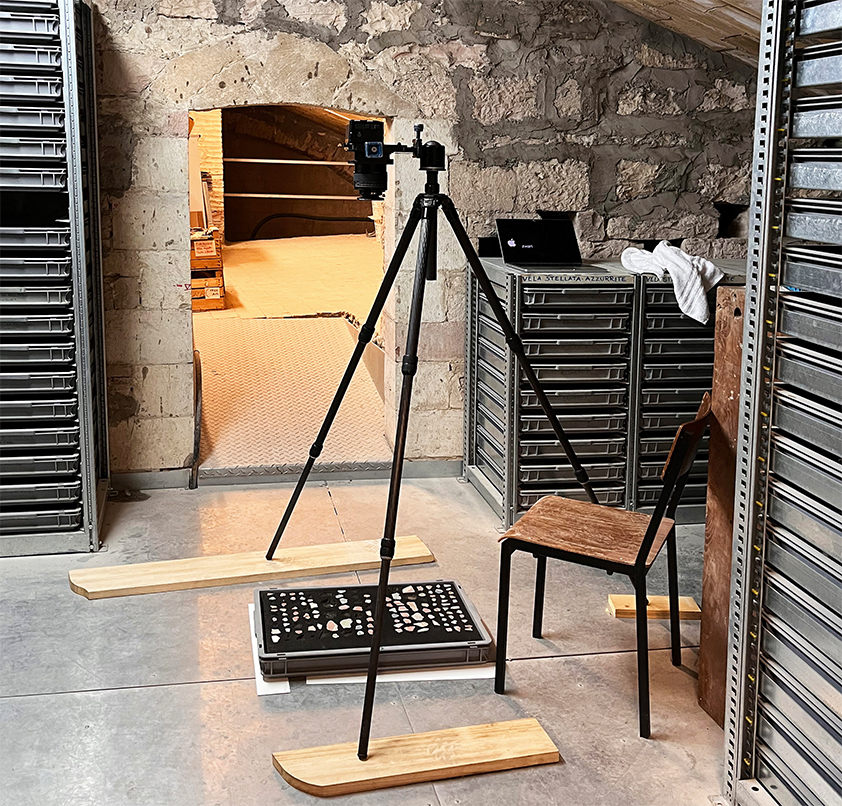
MAY 2, 2024
18:00
LECTURE:
BAS PRINCEN
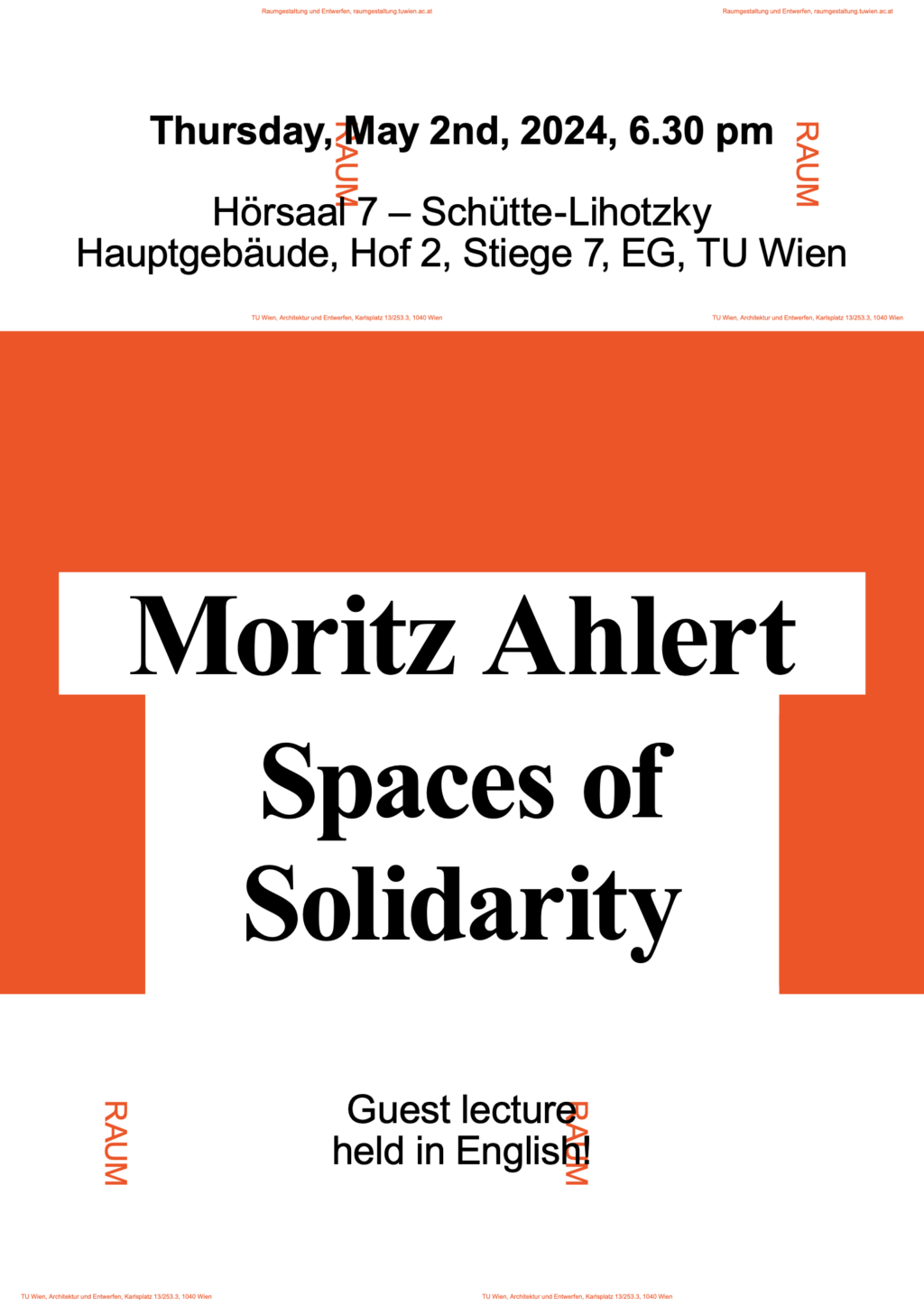
MAY 2, 2024
18:30
LECTURE:
MORITZ AHLERT
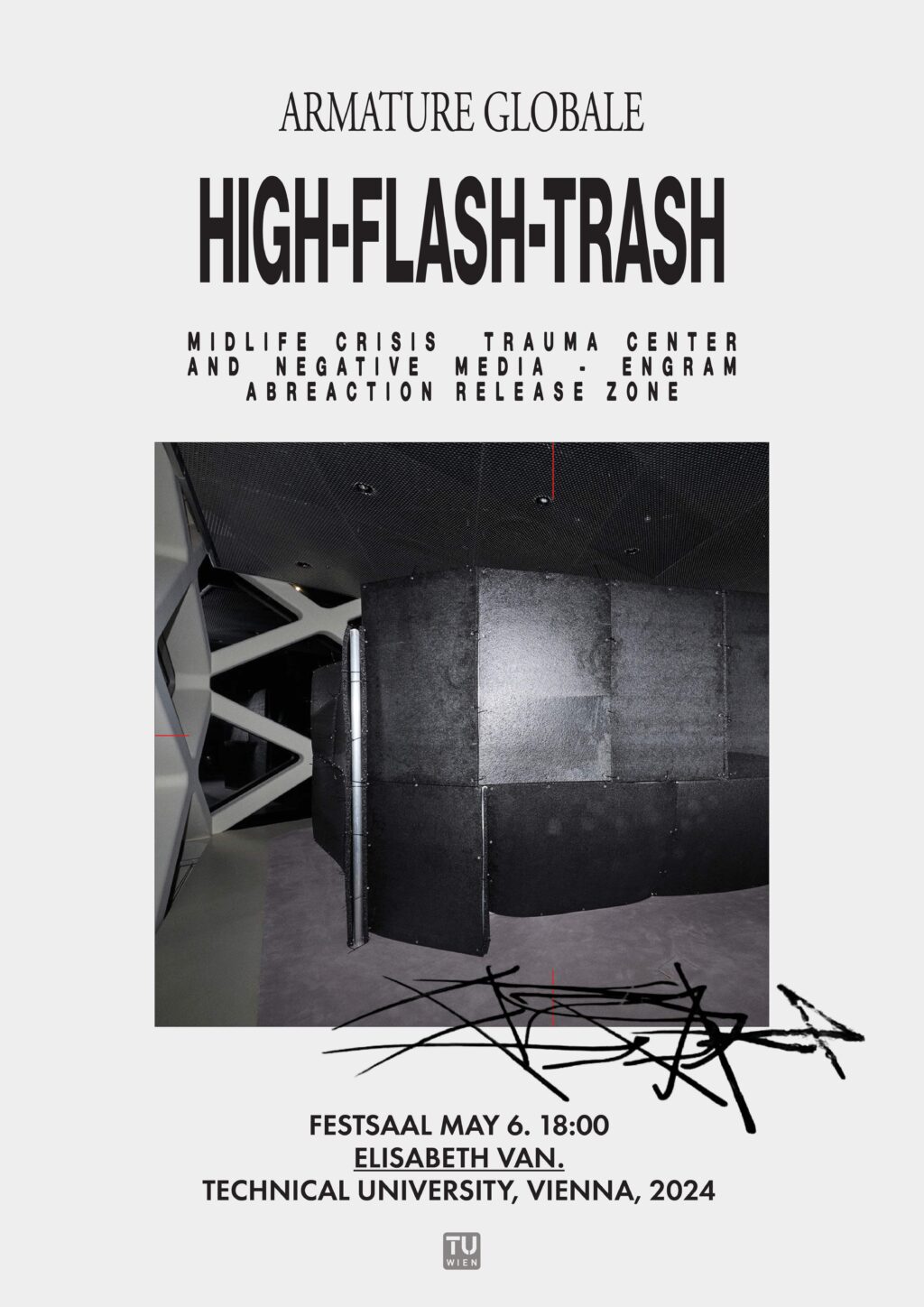
MAY 6, 2024
18:00
LECTURE:
LUIGI ALBERTO CIPPINI
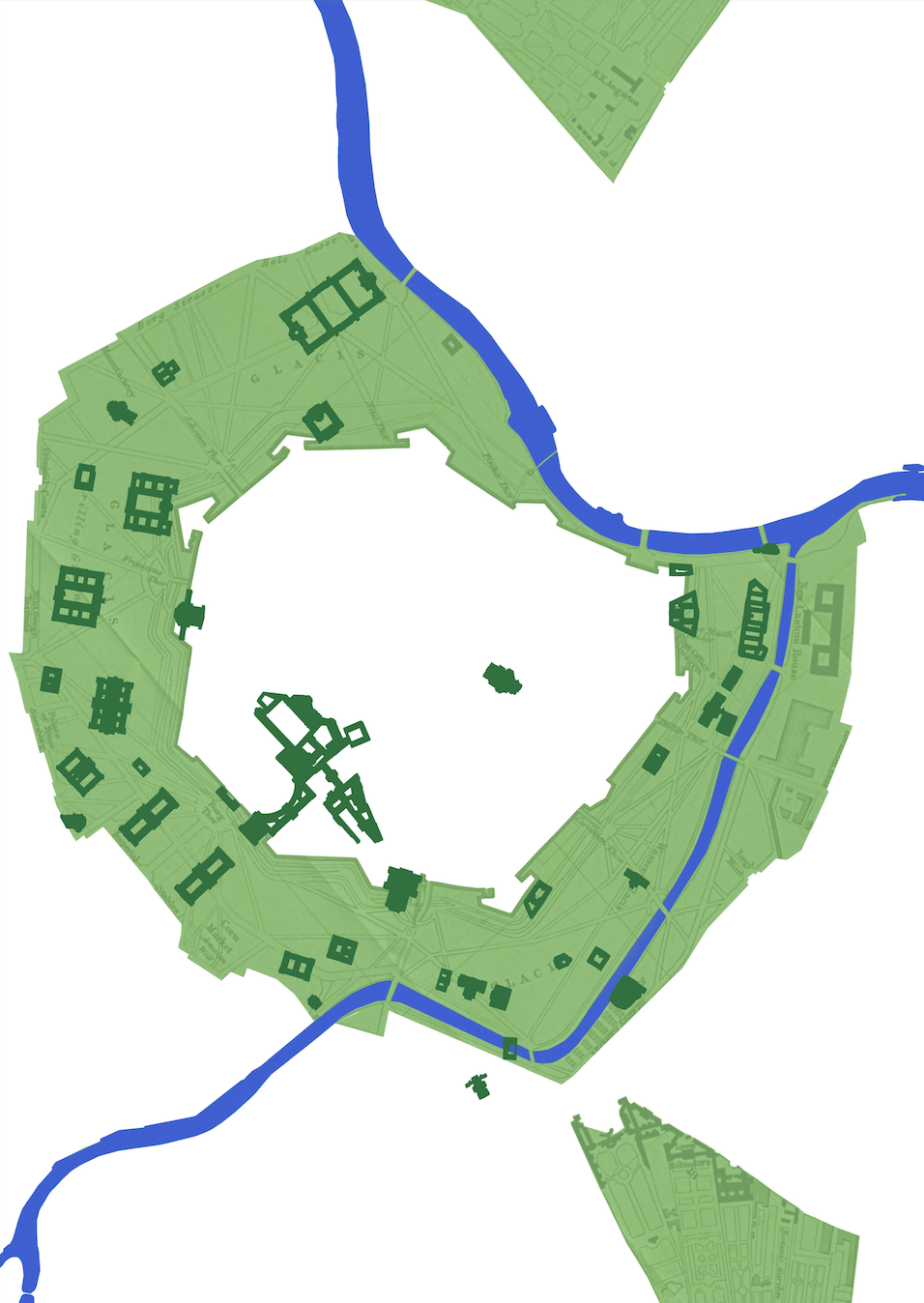
MAY 8, 2024
09:00
EXHIBITION:
EIN NEUES HAUS DER BOTANIK
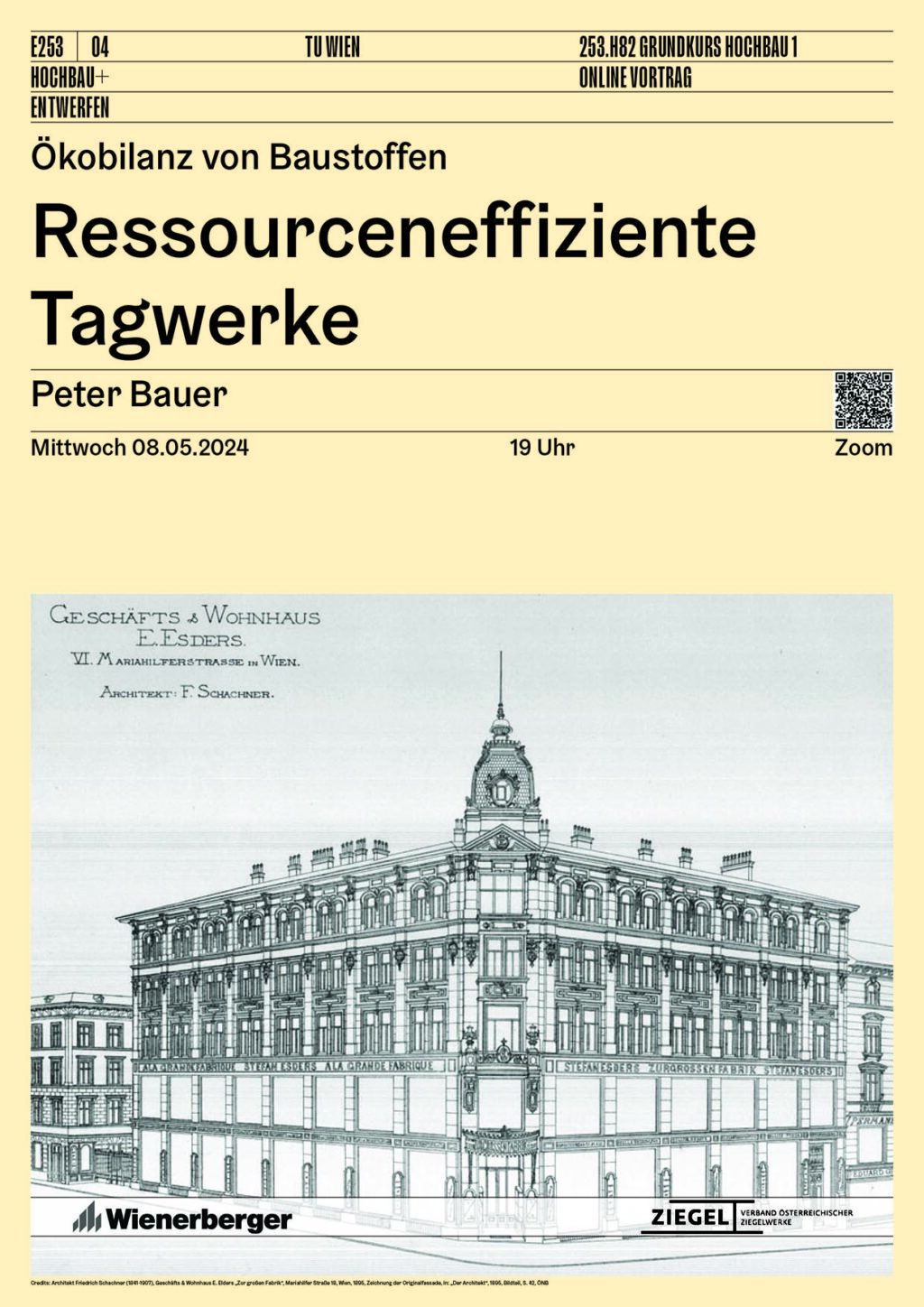
MAY 8, 2024
19:00
LECTURE:
PETER BAUER

MAY 16, 2024
19:00
LECTURE:
UMBERTO NAPOLITANO

MAY 23, 2024
12:15
EXHIBITION:
KARL KUPSKY-PREIS 2024

MAY 23, 2024
19:00
LECTURE:
FLORENCE LIPSKY

MAY 24, 2024
09:00
Exhibition:
Biofabrique Vienna
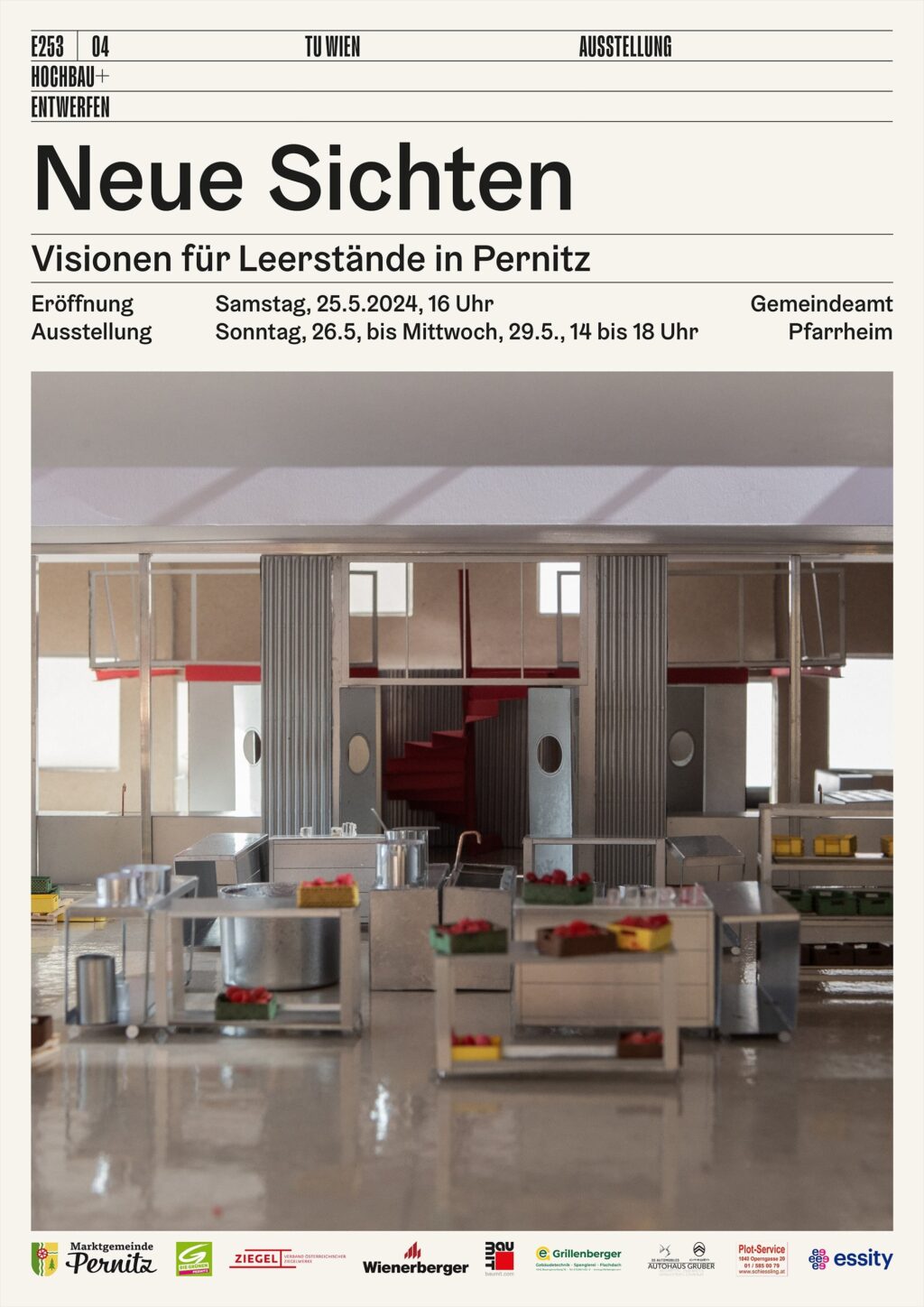
MAY 25, 2024
16:00
EXHIBITION OPENING:
NEUE SICHTEN
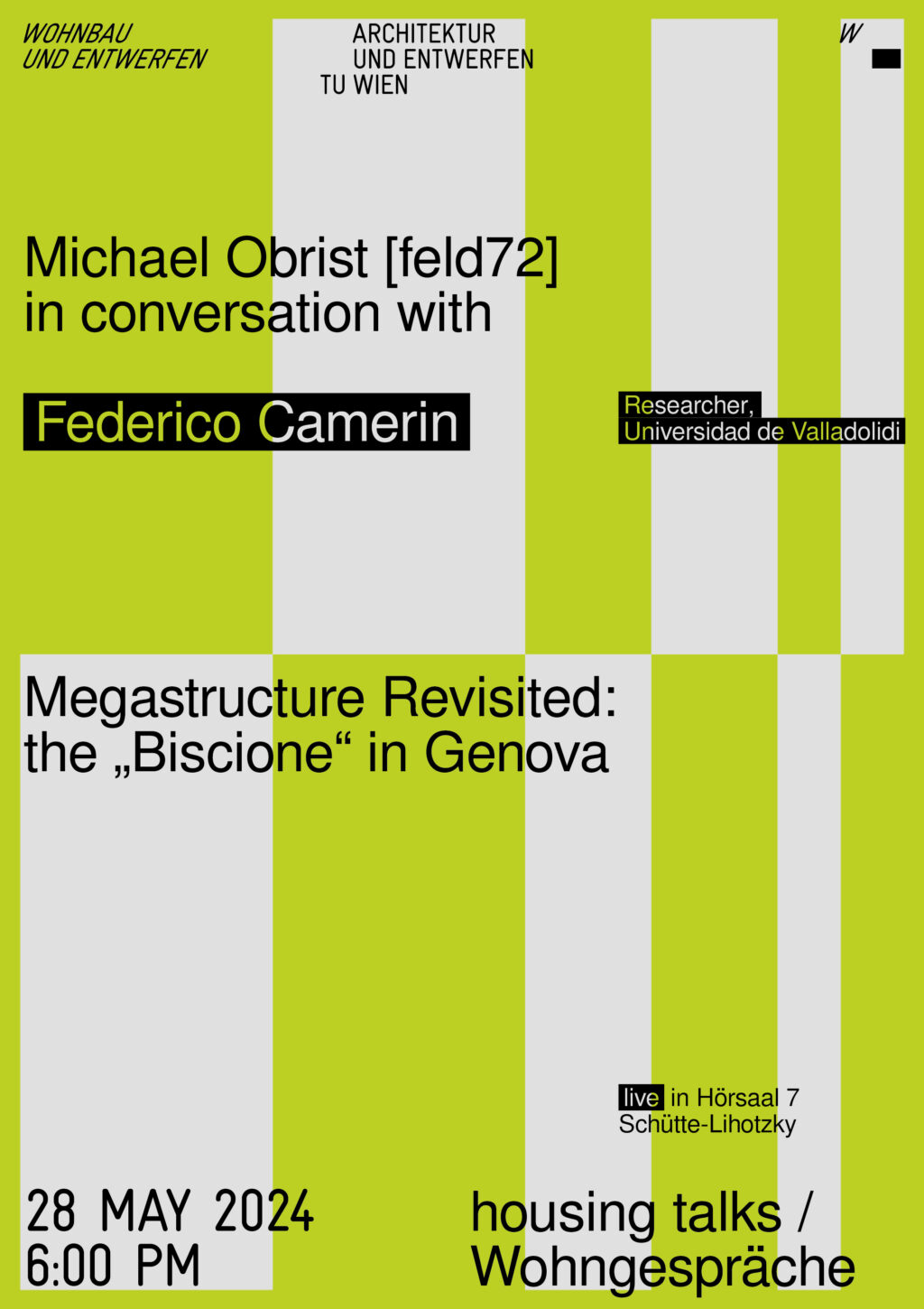
MAY 28, 2024
18:00
HOUSING TALKS:
FEDERICO CAMERIN
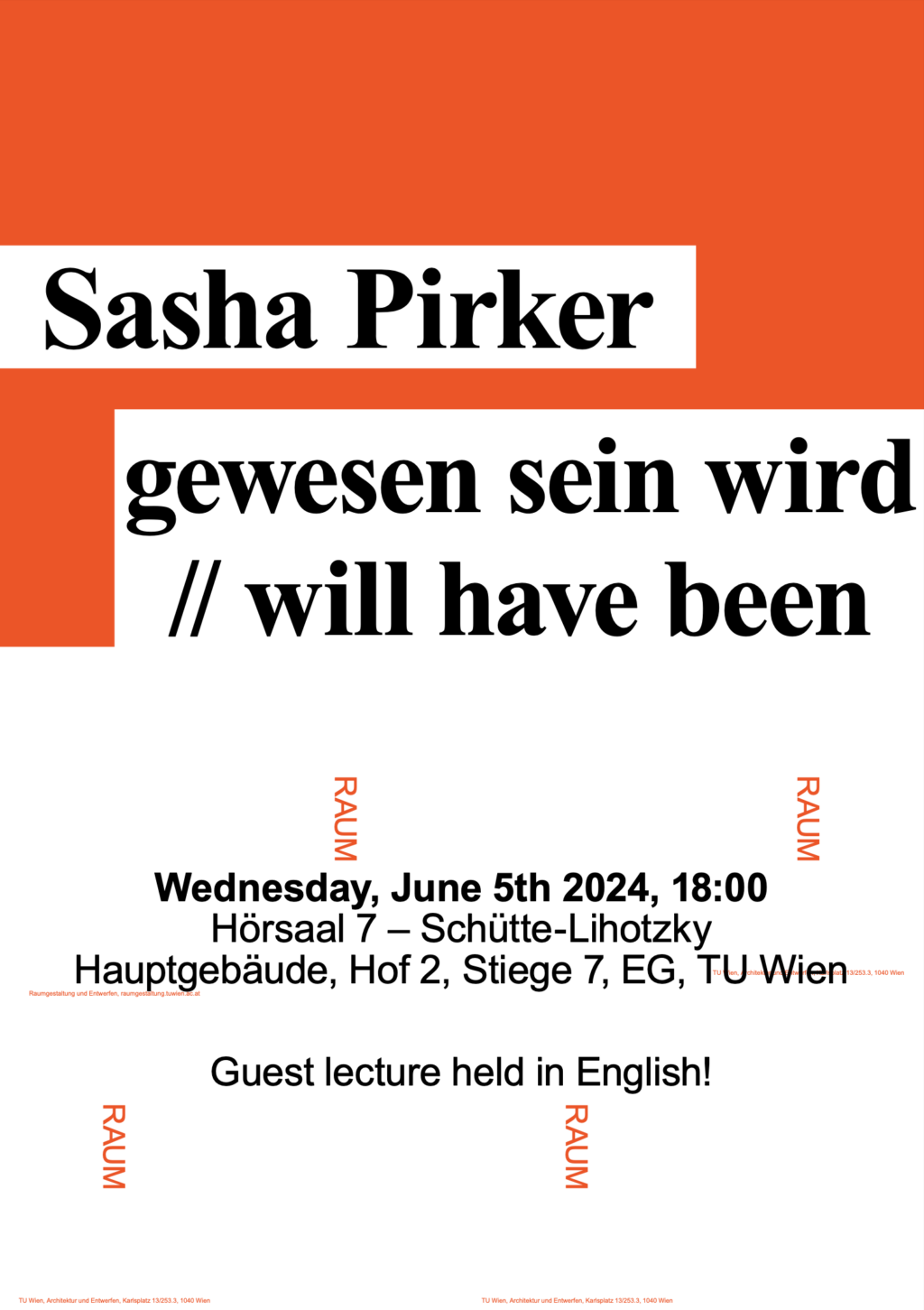
JUN 5, 2024
18:00
LECTURE:
SASHA PIRKER
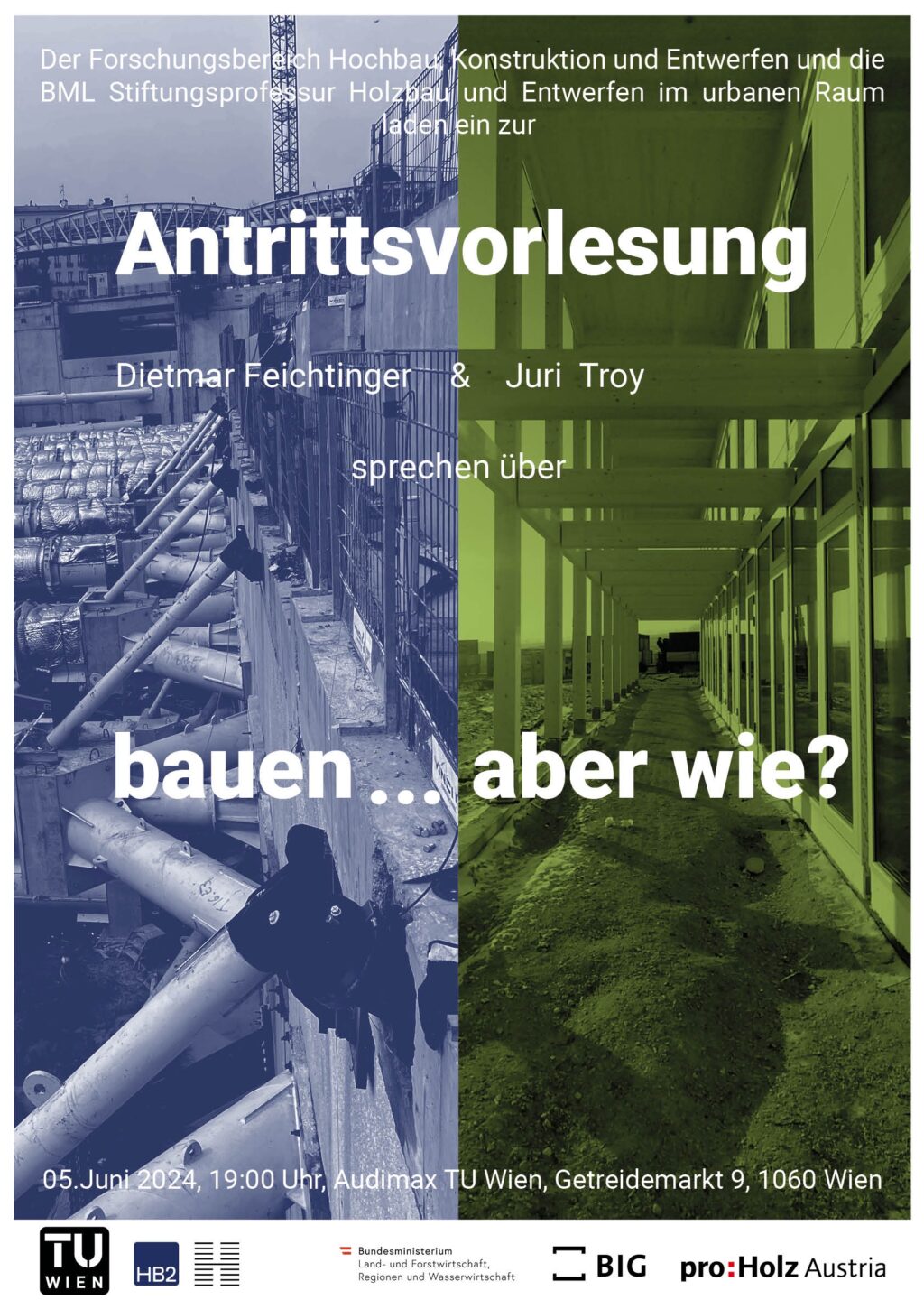
JUN 5, 2024
19:00
INAUGURAL LECTURE:
DIETMAR FEICHTINGER & JURI TROY

JUN 6, 2024
19:00
LECTURE:
JACQUELINE OSTY

JUN 7, 2024
13:30
SYMPOSIUM & EXHIBITION:
SPACES BETWEEN PLACES

JUN 7, 2024
18:00
LECTURE & DISCUSSION:
MARK INDERBITZIN
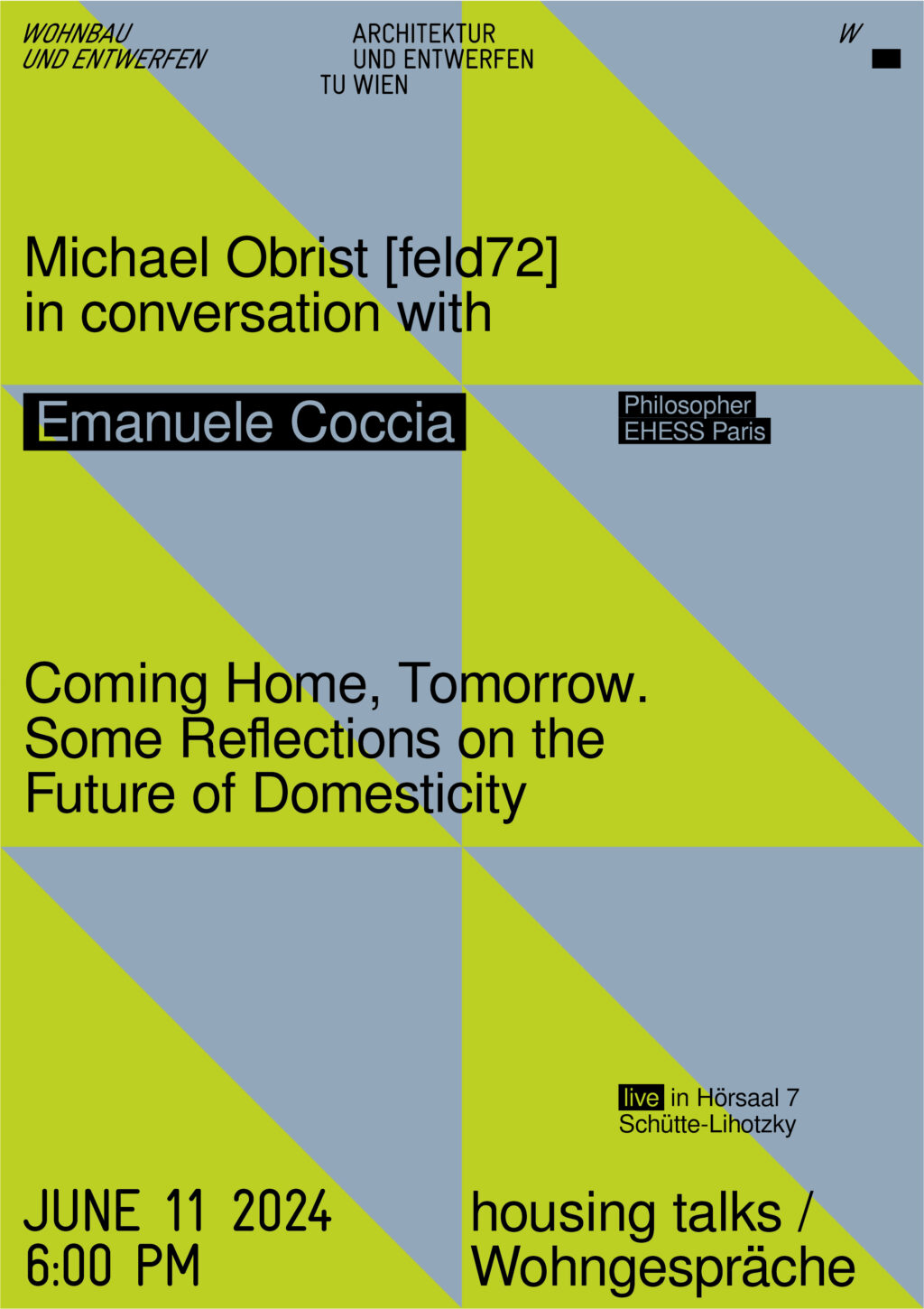
JUN 11, 2024
18:00
HOUSING TALKS: EMANUELE COCCIA

JUN 13, 2024
18:00
LECTURE & DISCUSSION:
LUISA LAMBRI
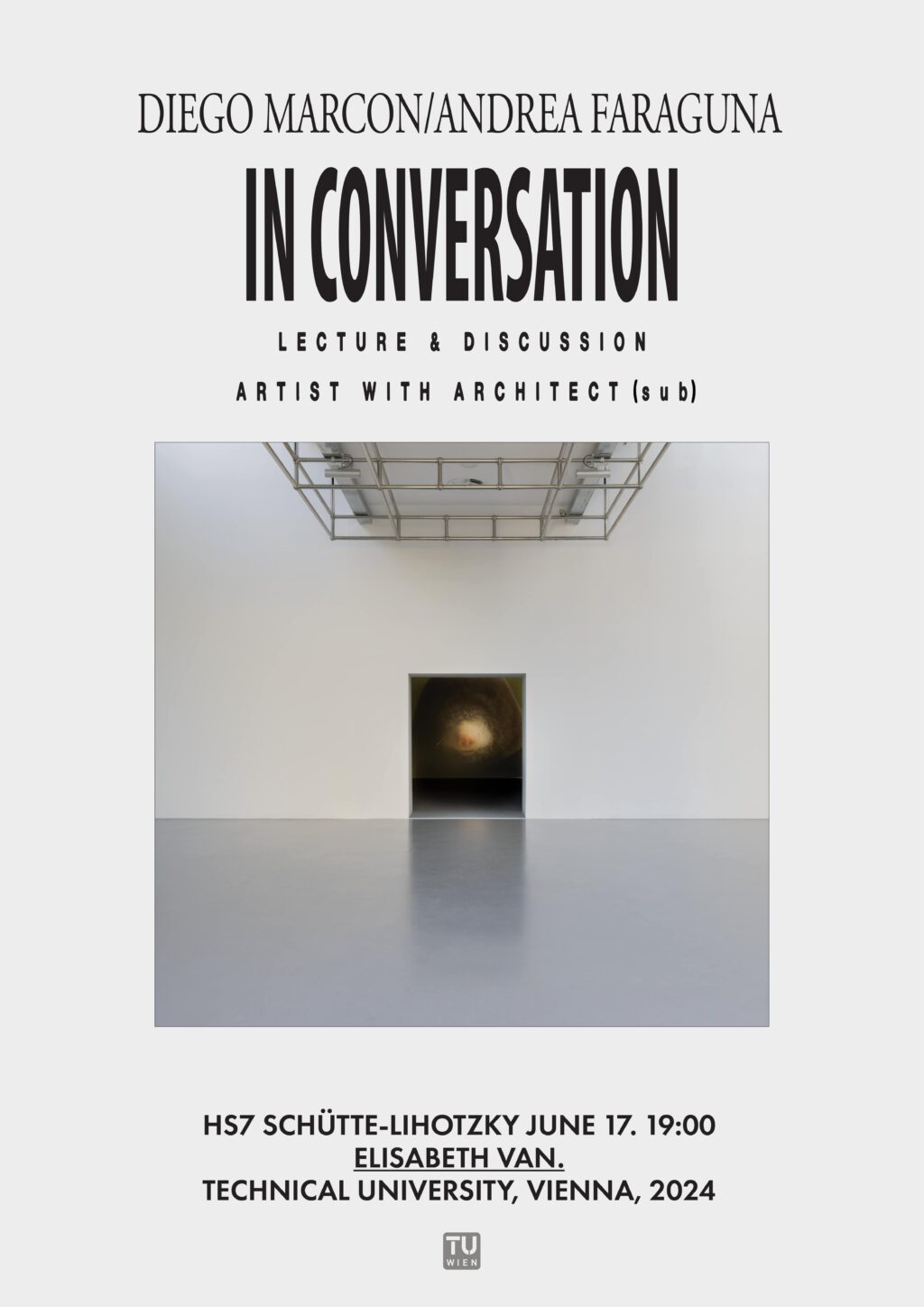
JUN 17, 2024
19:00
LECTURE & DISCUSSION:
DIEGO MARCON
ANDREA FARAGUNA

JUN 18, 2024
18:00
HOUSING TALKS: LISZ HIRN
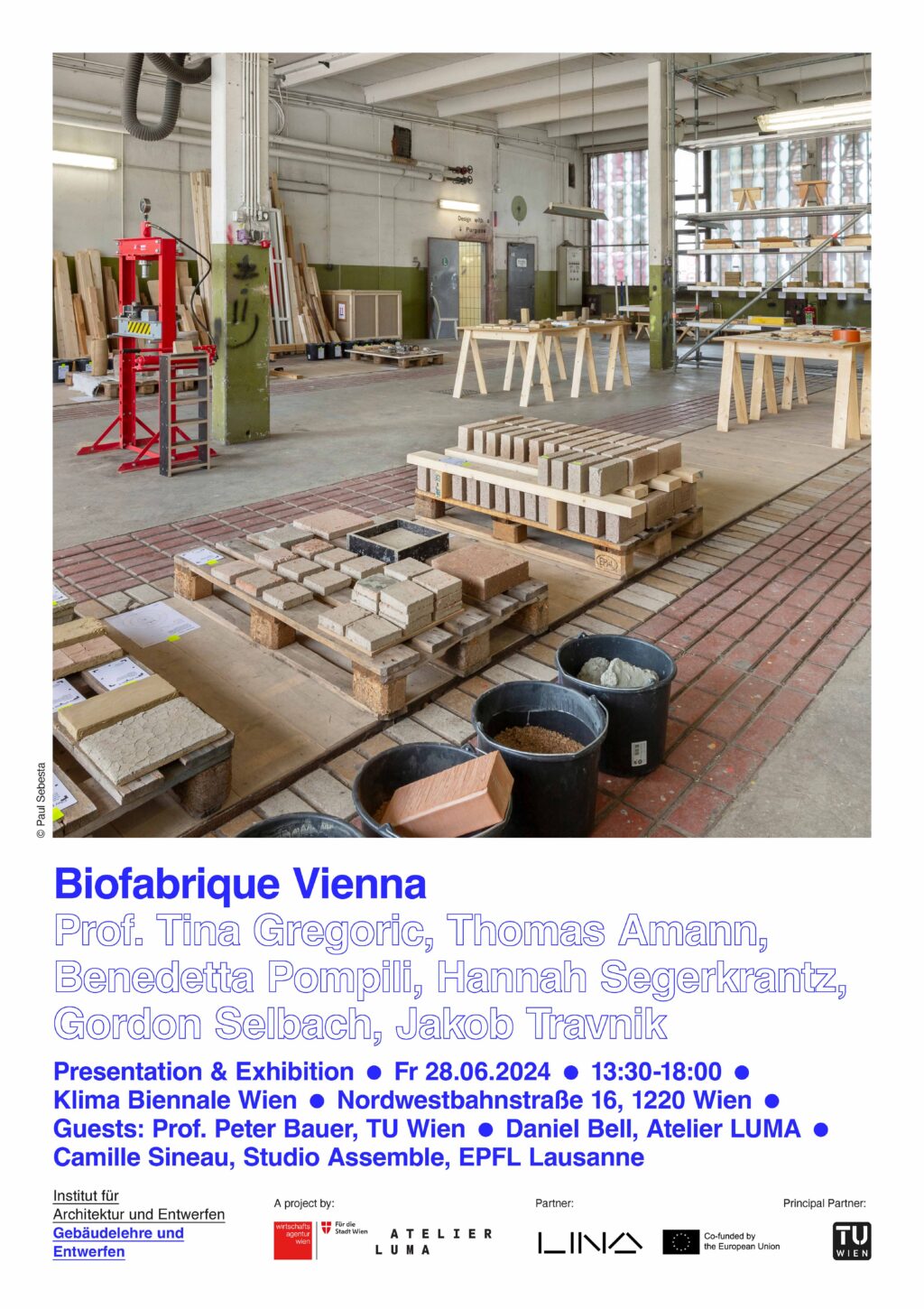
JUN 28, 2024
13:30
EXHIBITION:
BIOFABRIQUE VIENNA

JUL 10, 2024
17:00
CALL:
CURATION OF THE STUDENT'S NIGHT
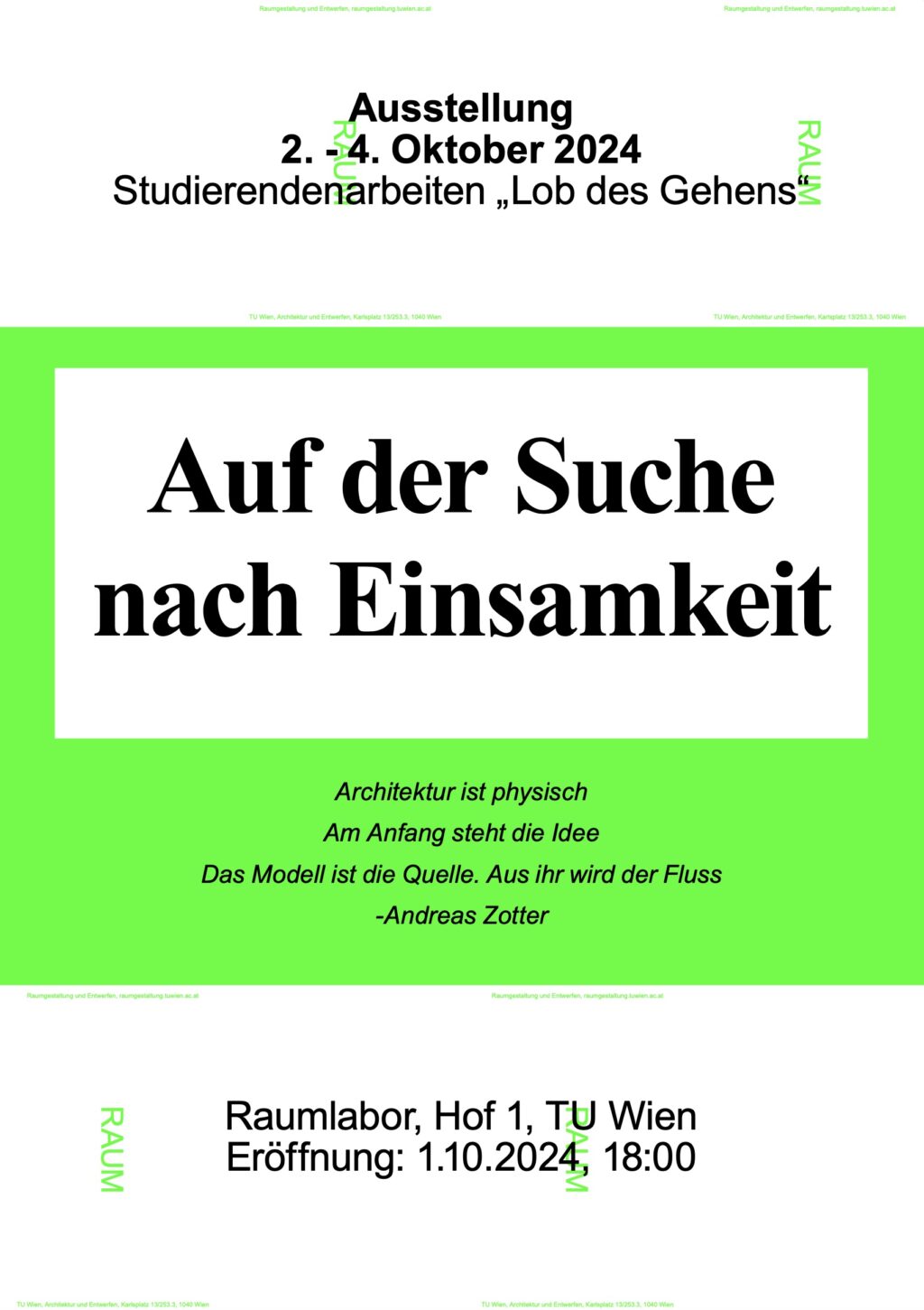
OCT 1, 2024
18:00
EXHIBITION:
AUF DER SUCHE NACH EINSAMKEIT
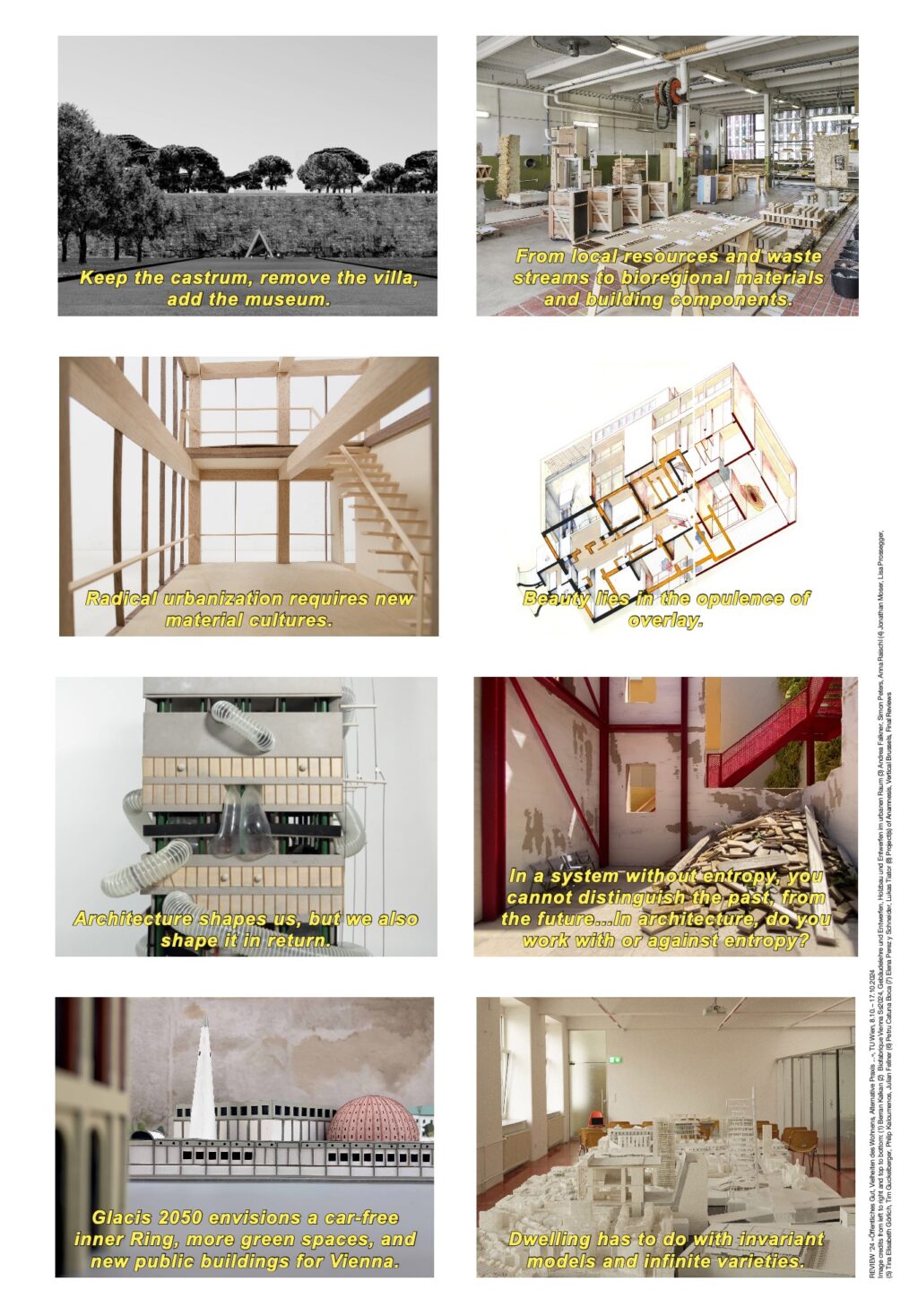
OCT 8, 2024
18:00
EXHIBITION:
REVIEW’24
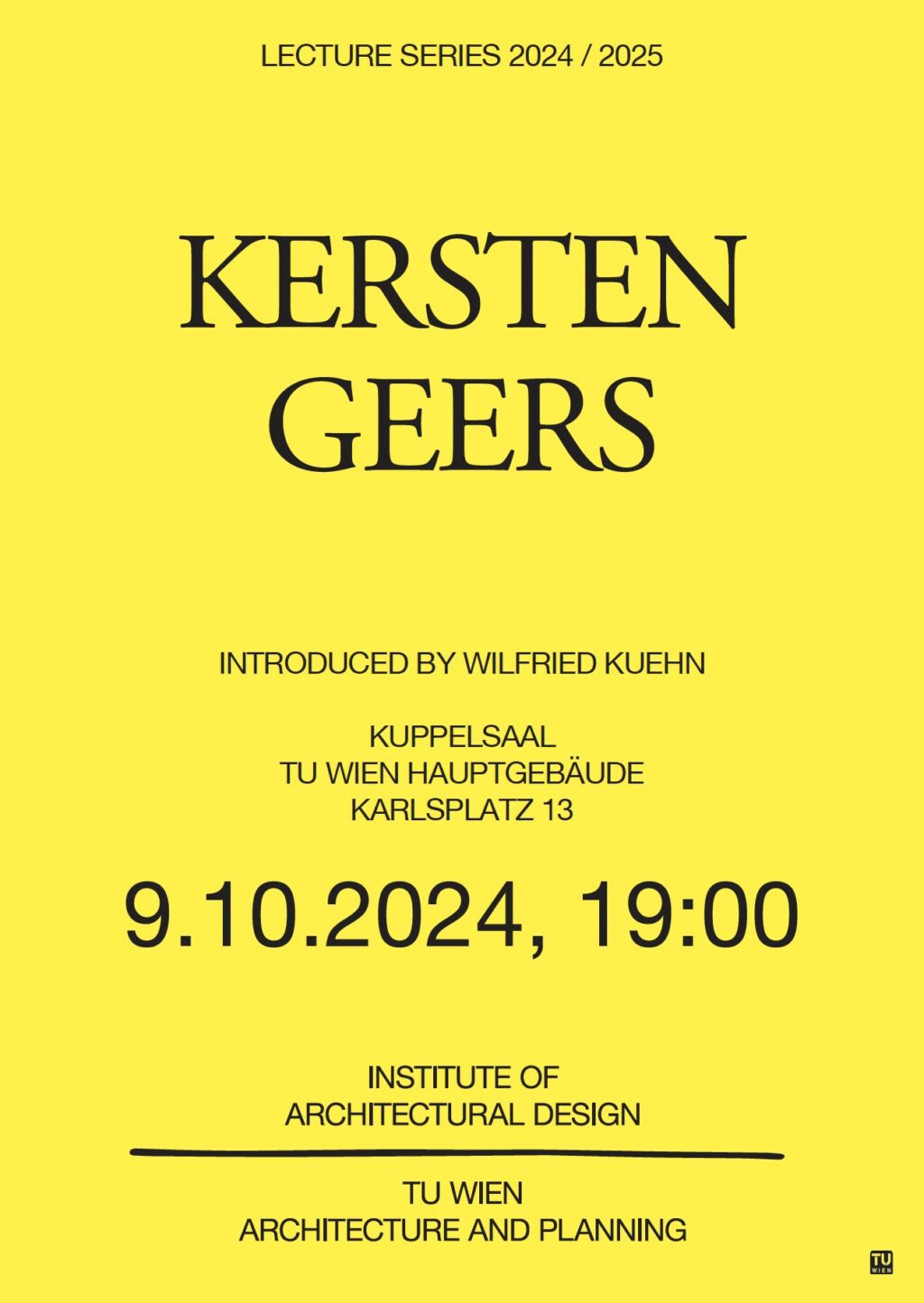
OCT 9, 2024
19:00
LECTURE: Kersten Geers
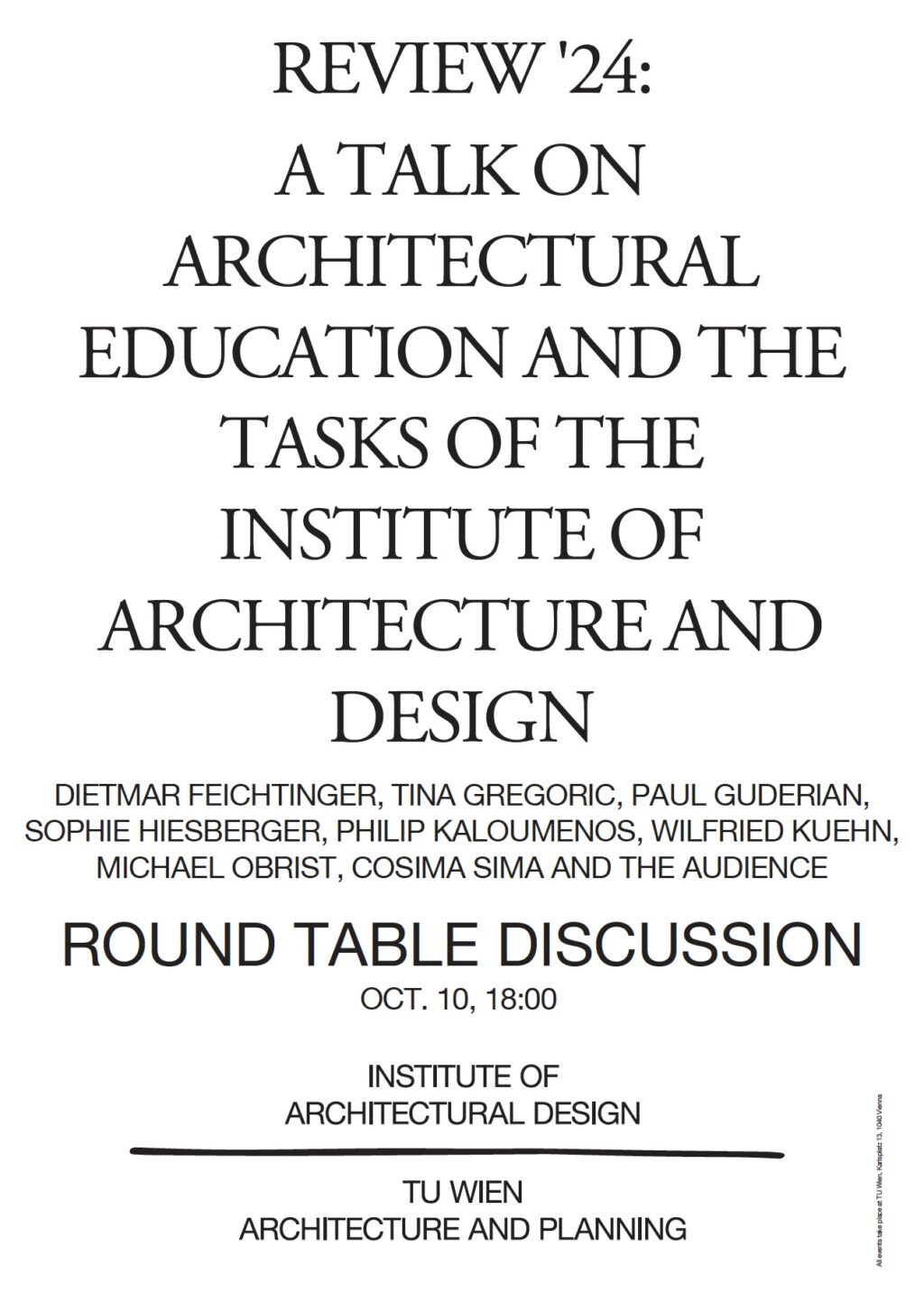
OCT 10, 2024
18:00
ROUND TABLE DISCUSSION:
REVIEW ’24

OCT 15, 2024
18:00
HOUSING TALKS:
PHILIP URSPRUNG

OCT 17, 2024
18:00
CLOSING DISCUSSION:
THE STUDENT'S NIGHT REVIEW ’24
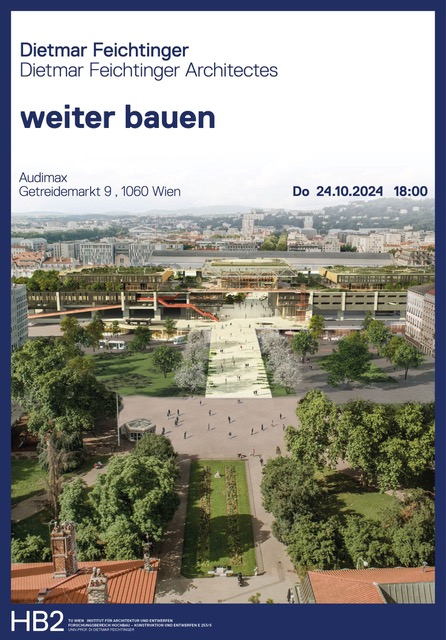
OCT 24, 2024
18:00
LECTURE:
DIETMAR FEICHTINGER
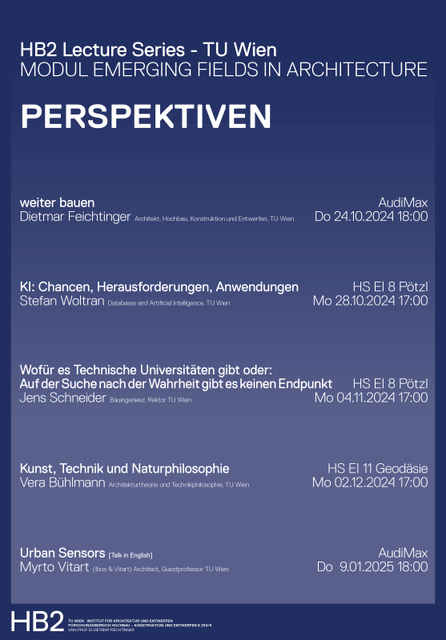
OCT 24, 2024
18:00
LECTURE SERIES:
PERSPEKTIVEN

OCT 24, 2024
19:00
EXHIBITION:
VOM HANDWERK ZUR HÖHE

NOV 5, 2024
18:00
HOUSING TALKS:
SPACE POPULAR

NOV 7, 2024
18:00
LECTURE:
RUEDI BAUR

NOV 12, 2024
19:00
LECTURE: Yvonne Farrell
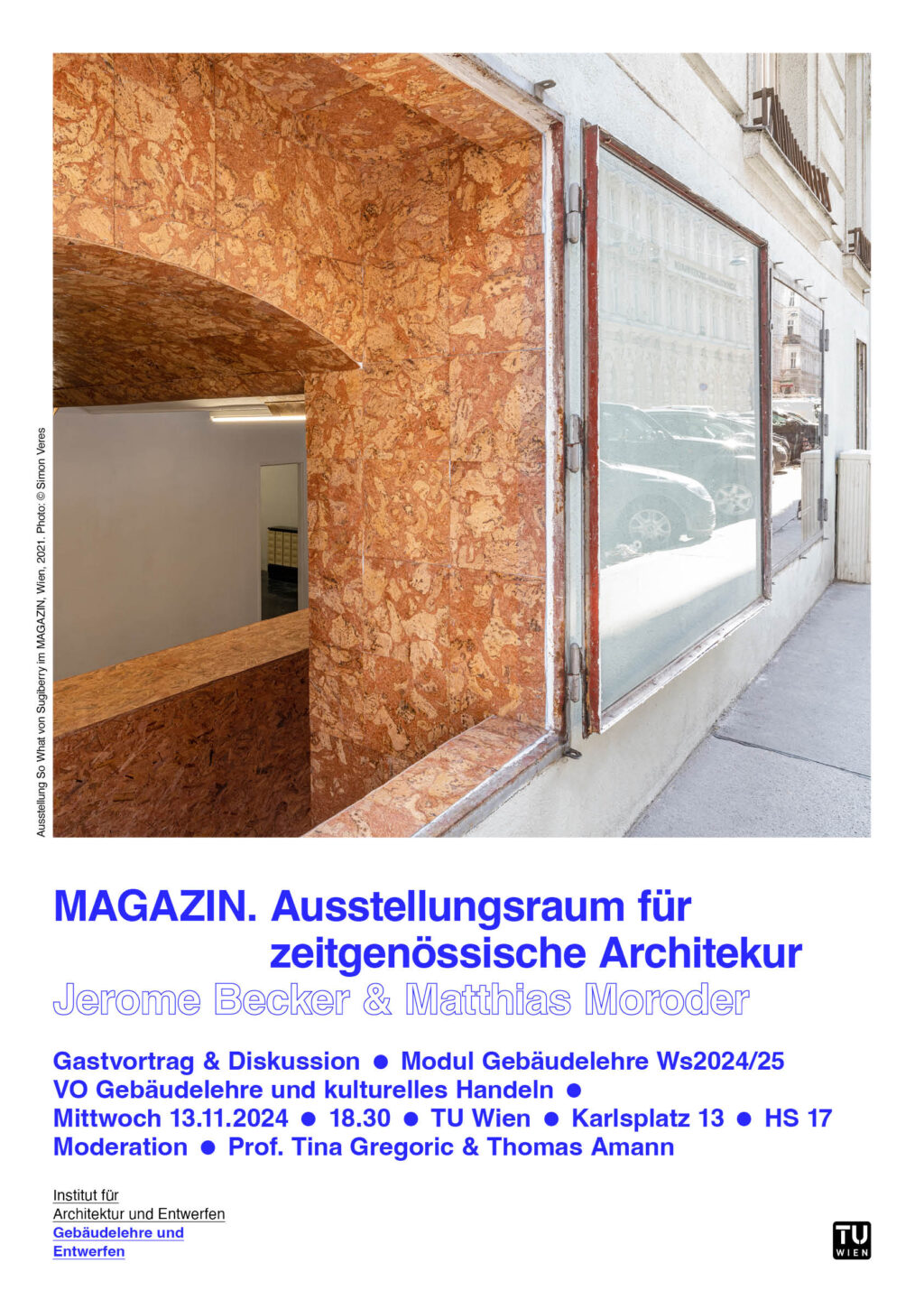
NOV 13, 2024
18:30
LECTURE:
JEROME BECKER & MATTHIAS MORODER

NOV 20, 2024
18:00
LECTURE:
YUMA SHINOHARA
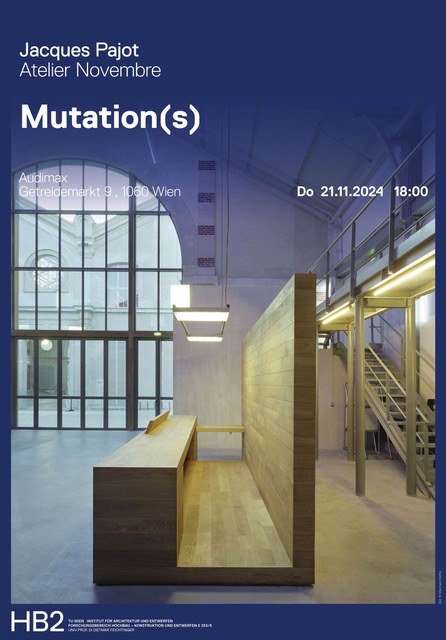
NOV 21, 2024
18:00
LECTURE:
JACQUES PAJOT

NOV 25, 2024
10:00
SYMPOSIUM:
DRAWING OTHERWISE
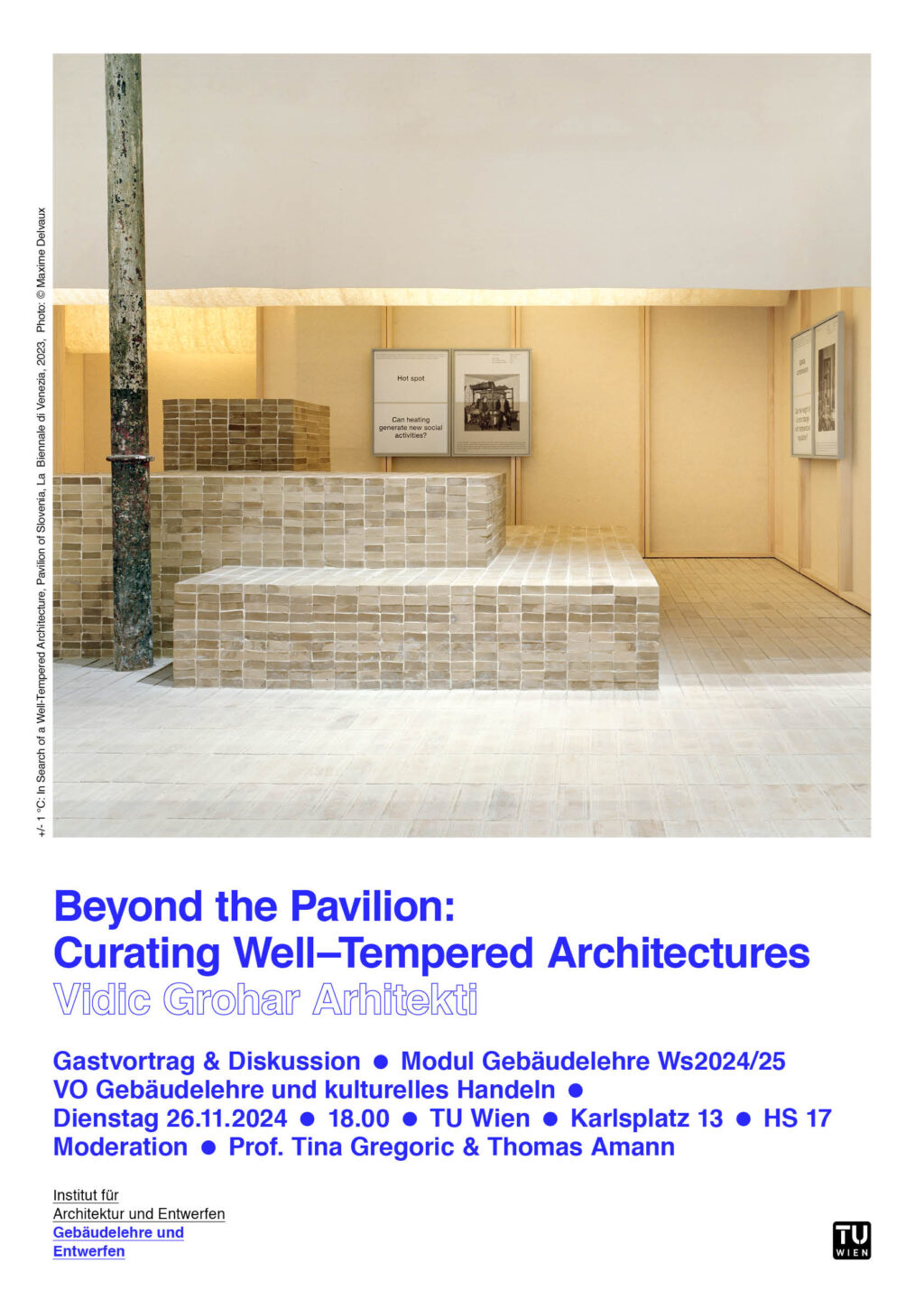
NOV 26, 2024
18:00
LECTURE:
VIDIC GROHAR ARHITEKTI
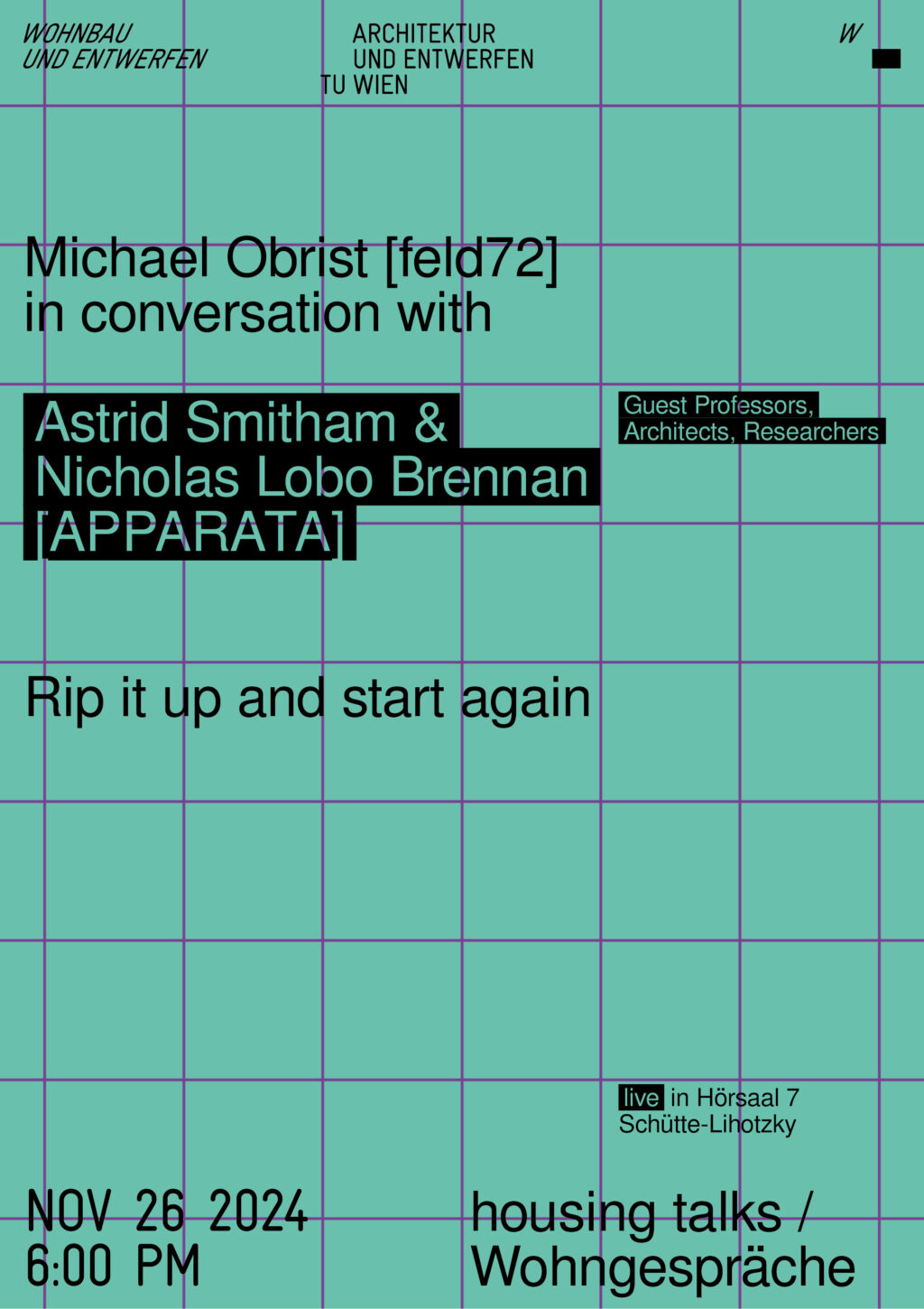
NOV 26, 2024
18:00
HOUSING TALKS:
ASTRID SMITHAM & NICHOLAS LOBO BRENNAN

DEC 3, 2024
16:00
SYMPOSIUM:
RADIKALE SYMBIOSEN II
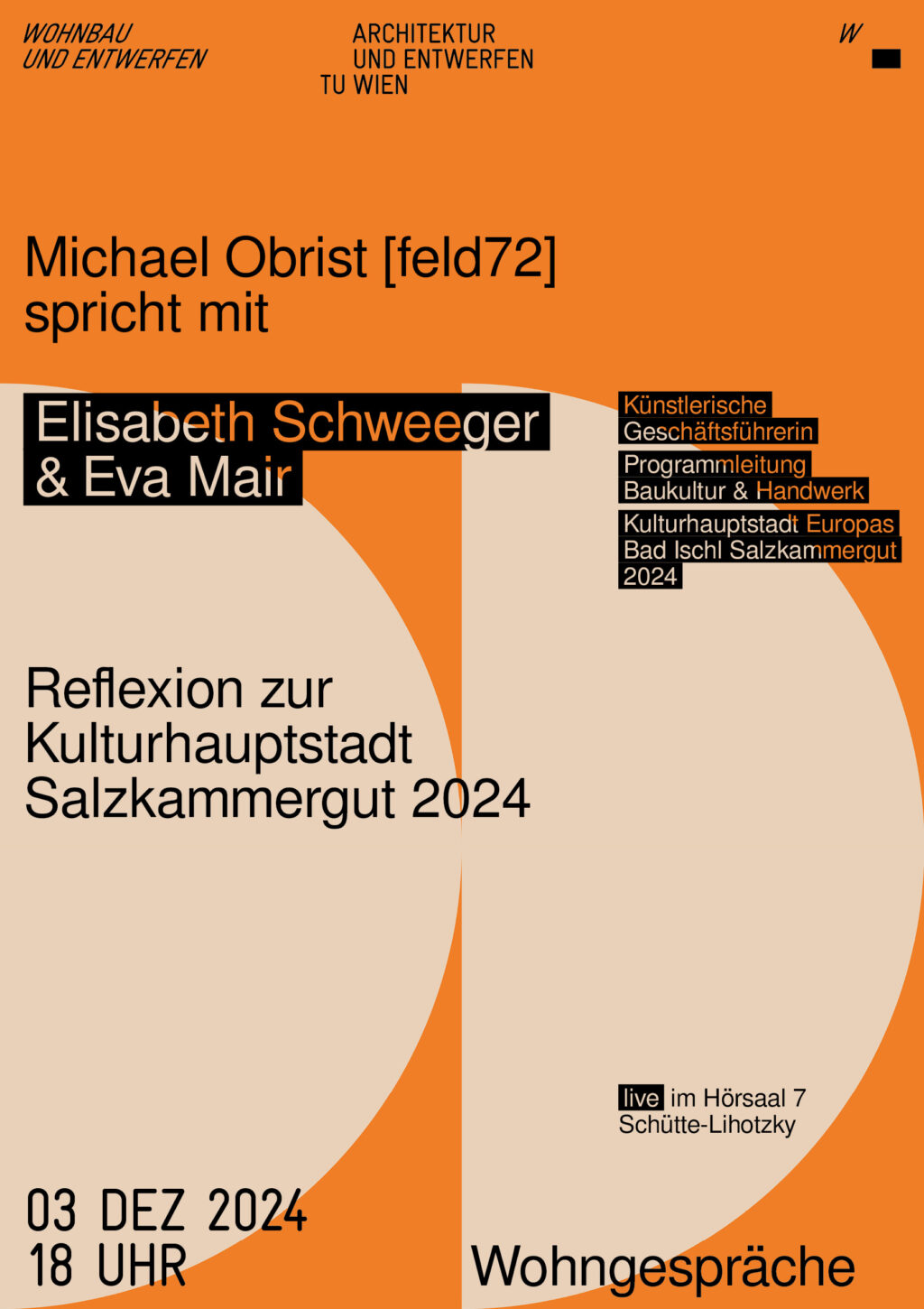
DEC 3, 2024
18:00
HOUSING TALKS:
REFLEXION ZUR KULTURHAUPTSTADT SALZKAMMERGUT 2024
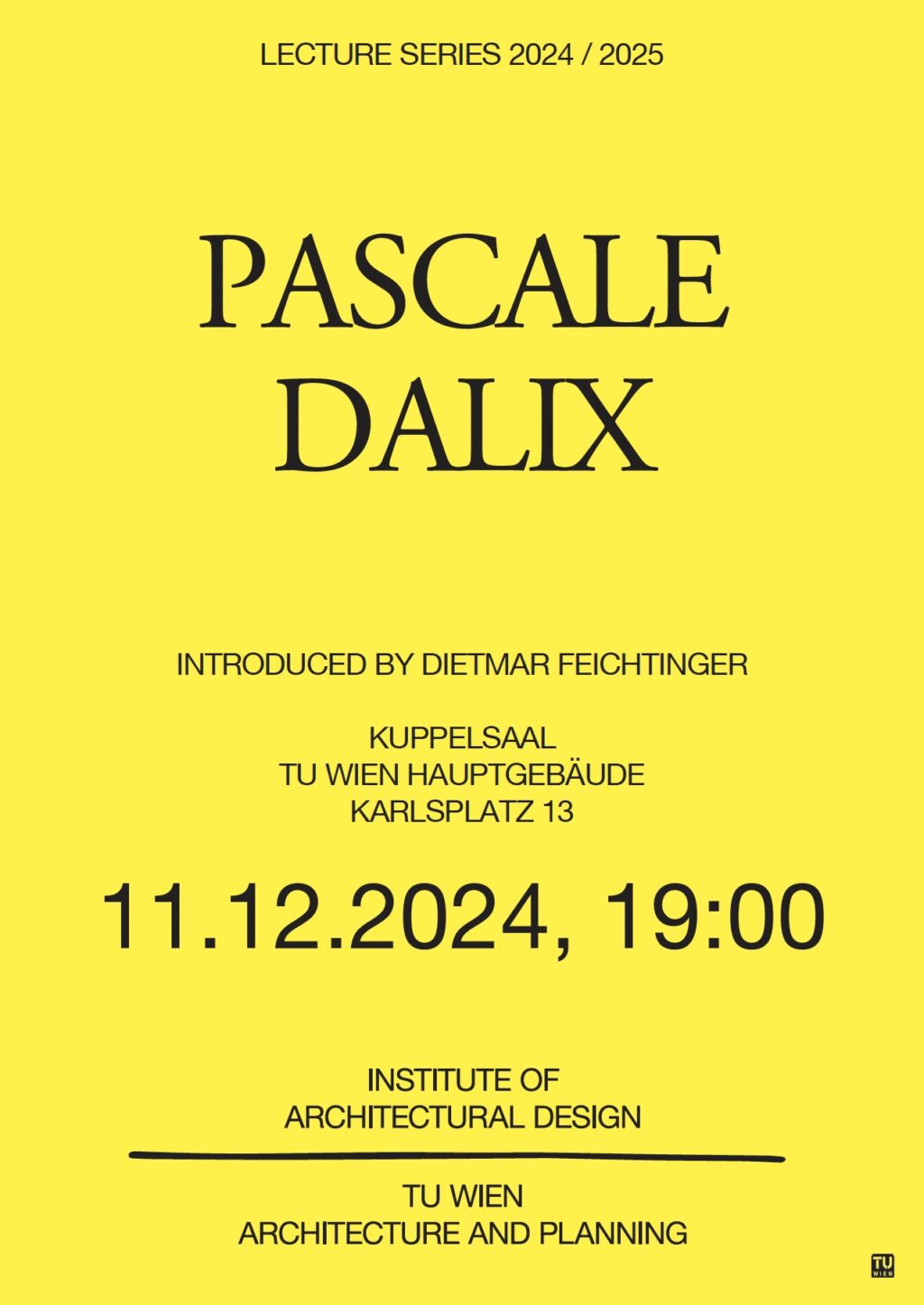
DEC 11, 2024
19:00
LECTURE:
PASCALE DALIX
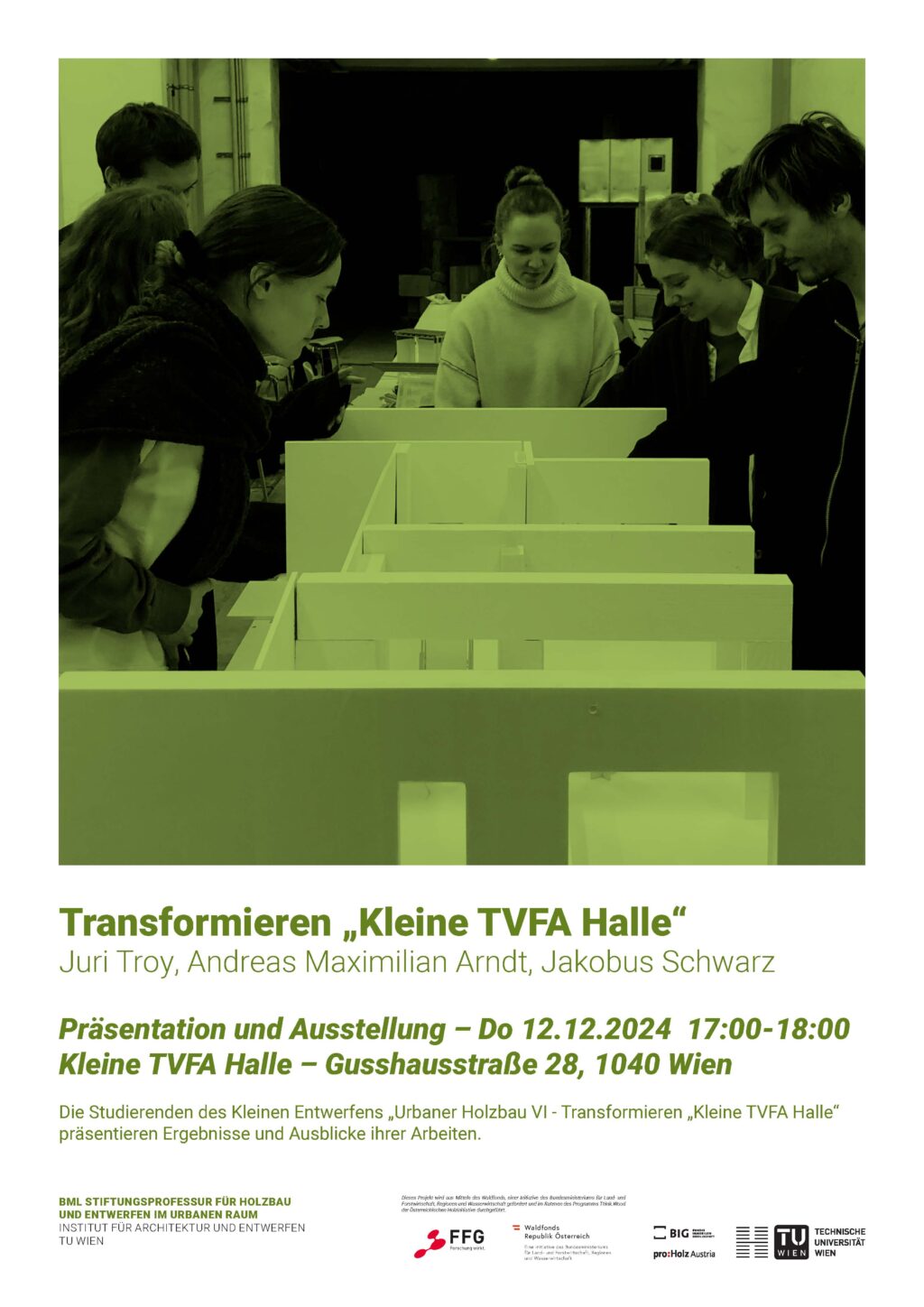
DEC 12, 2024
17:00
EXHIBITION:
TRANSFORMIEREN „KLEINE TVFA HALLE“

DEC 12, 2024
18:00
LECTURE:
KERSTIN MÜLLER

JAN 7, 2025
18:00
HOUSING TALKS:
RICHARD SENNETT

JAN 21, 2025
18:00
HOUSING TALKS:
CAROLING GENZ
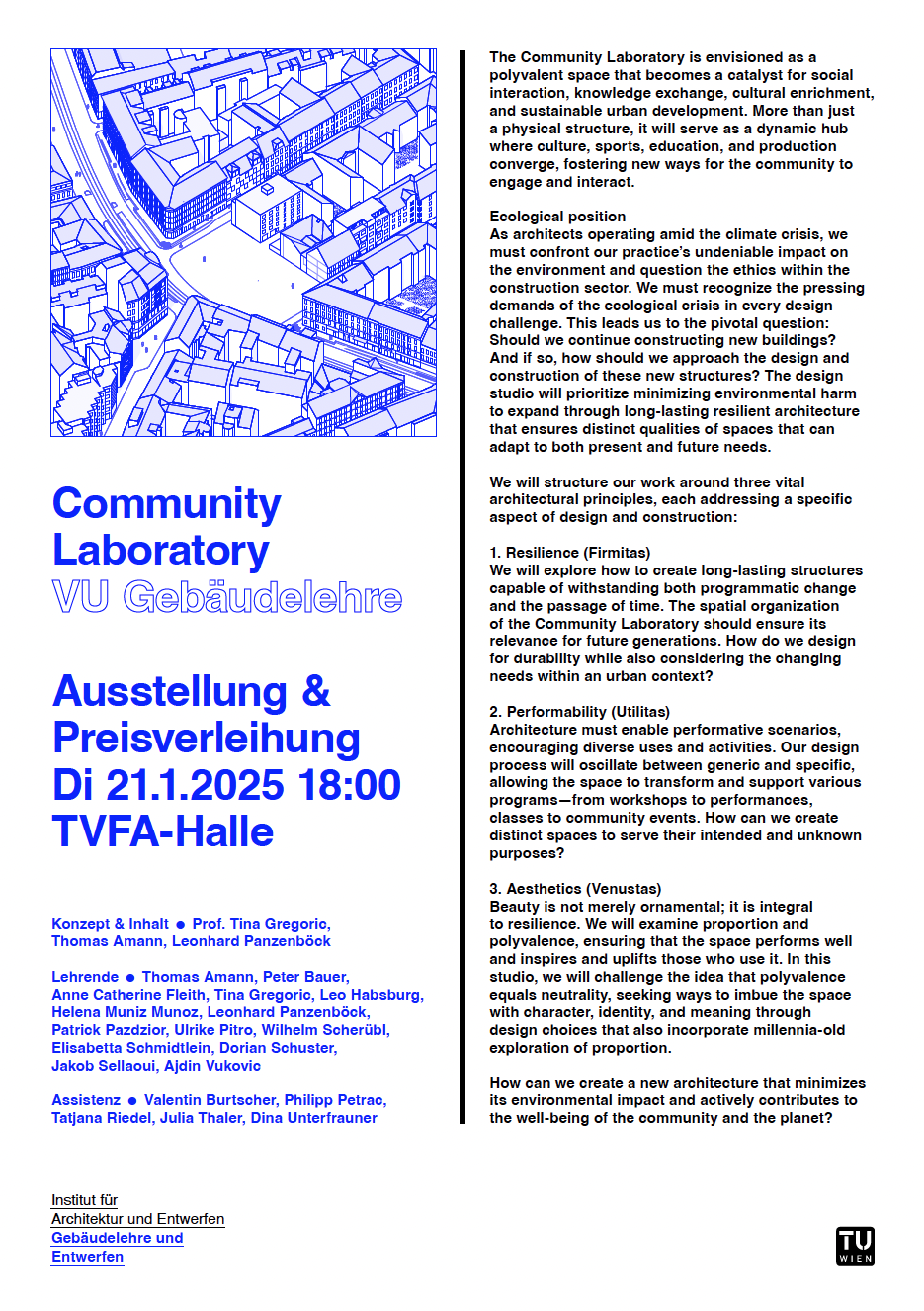
JAN 21, 2025
18:00
EXHIBITION:
COMMUNITY LABORATORY

JAN 21, 2025
19:00
SCREENING AND TALK:
BÊKA & LEMOINE
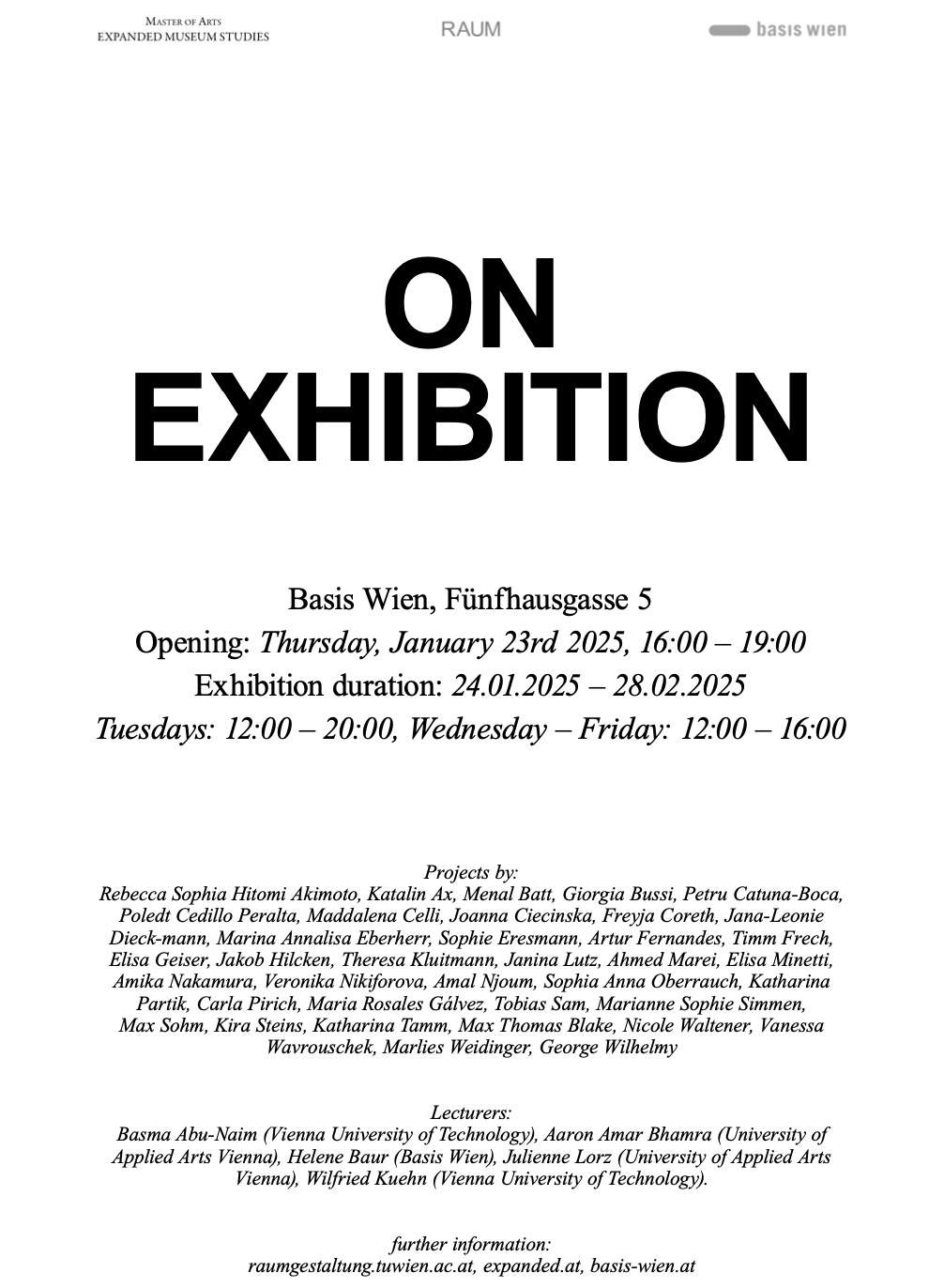
JAN 23, 2025
16:00
EXHIBITION:
ON EXHIBITION

JAN 27, 2025
19:00
EXHIBITION:
STADTGALERIE
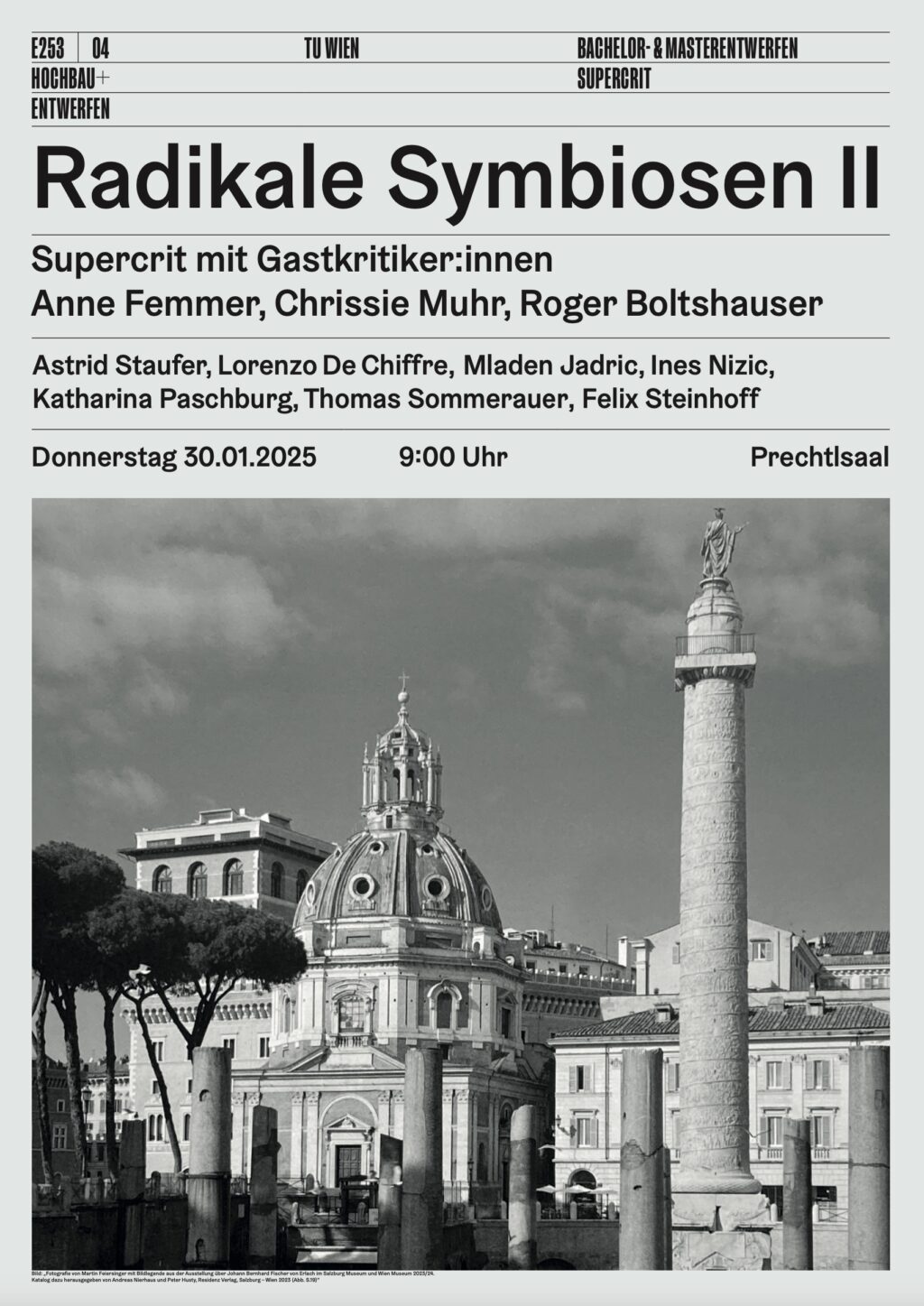
JAN 30, 2025
09:00
SUPERCRIT:
RADIKALE SYMBIOSEN II

JAN 30, 2025
18:00
SYMPOSIUM:
ALTE WU – UMBAU STATT ABBRUCH
MAR 4, 2025
18:00
HOUSING TALKS:
OLAF GRAWERT
HOUSEEUROPE
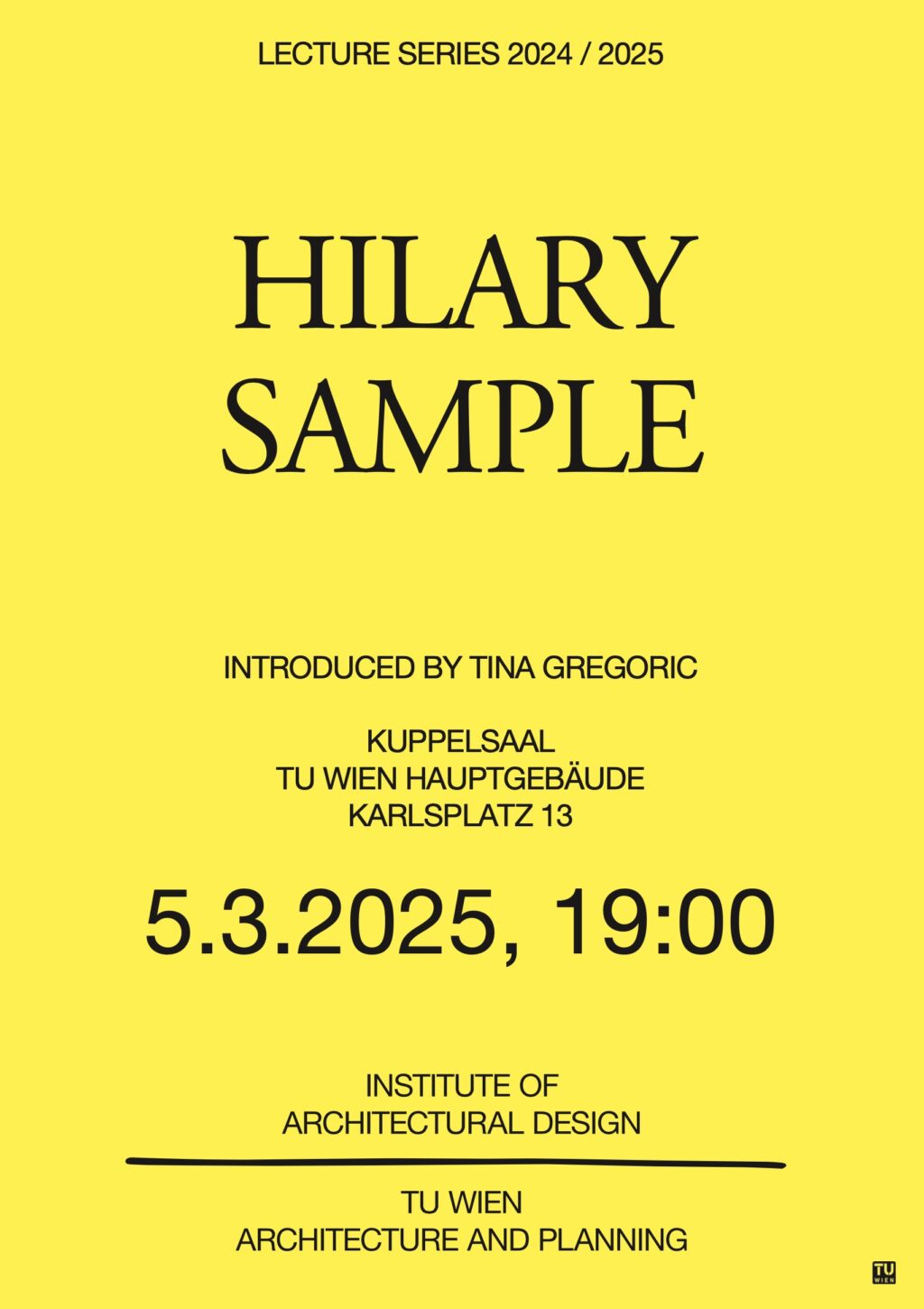
MAR 5, 2025
19:00
LECTURE: HILARY SAMPLE
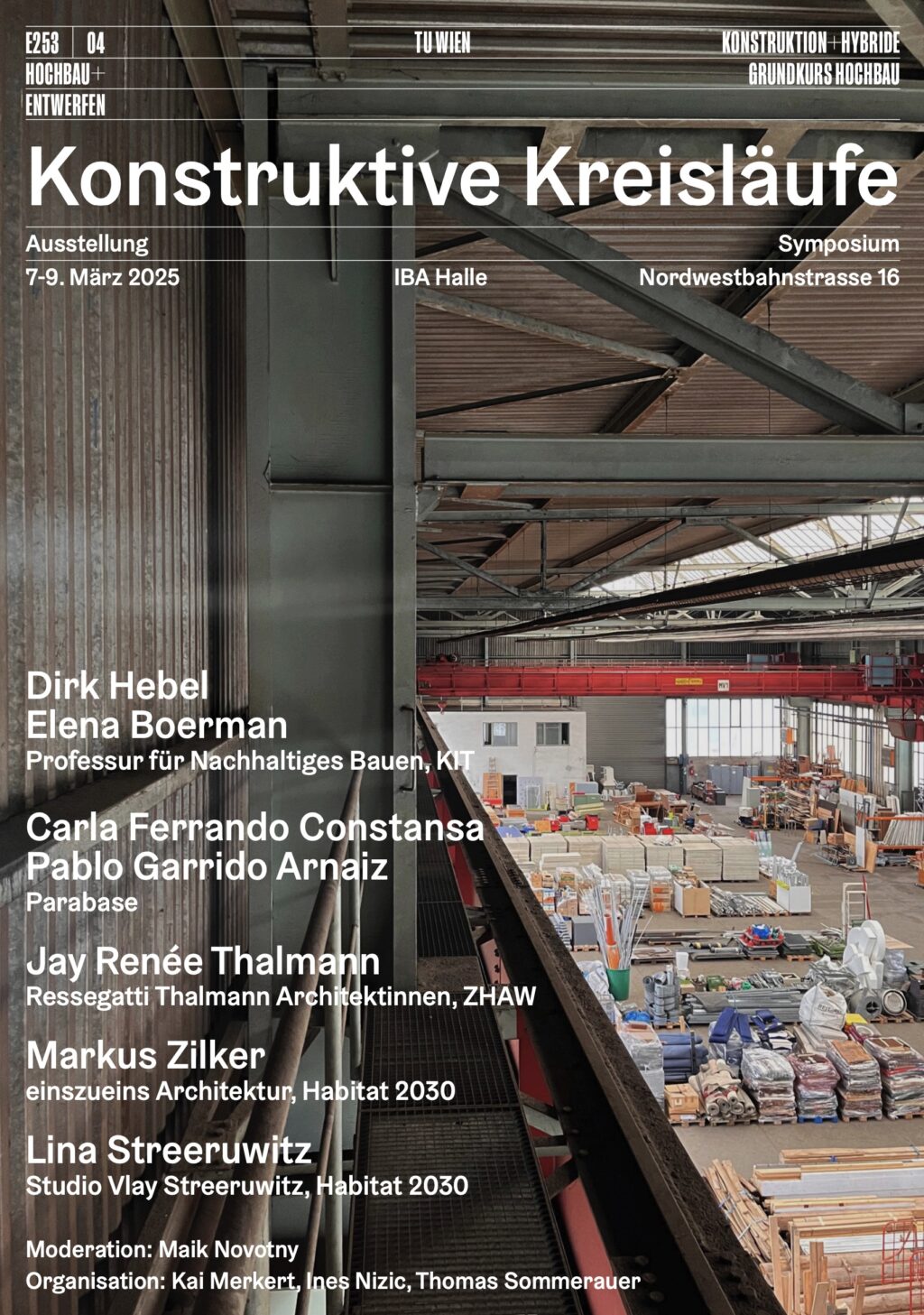
MAR 7, 2025
14:00
EXHIBITION & SYMPOSIUM: KONSTRUKTIVE KREISLÄUFE

MAR 19, 2025
18:00
Lecture:
Wolfdieter Dreibholz
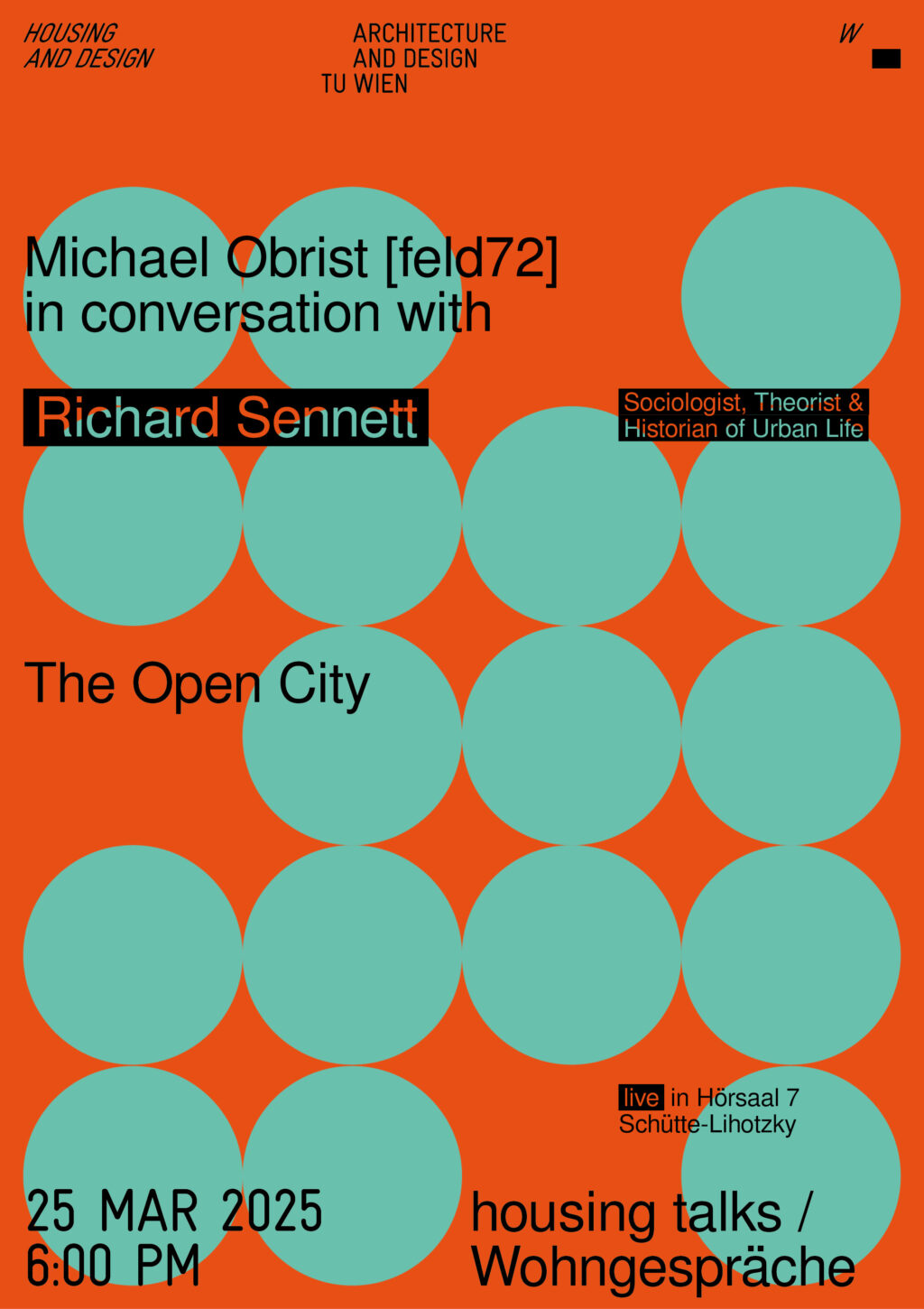
MAR 25, 2025
18:00
HOUSING TALKS:
RICHARD SENNETT
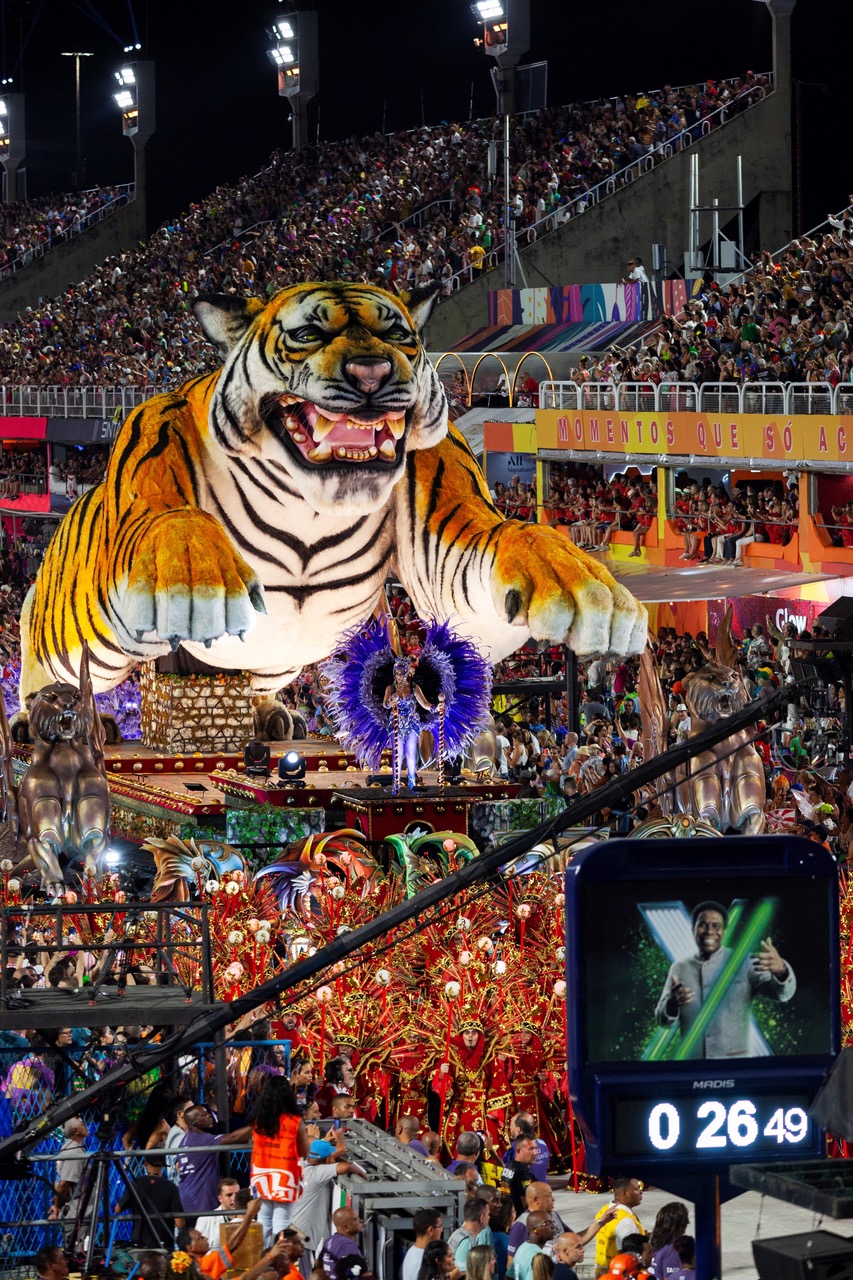
MAR 26, 2025
18:00
EXHIBITION:
WONDERS OF THE MODERN WORLD

APR 1, 2025
18:00
HOUSING TALKS:
ANDREJ HOLM
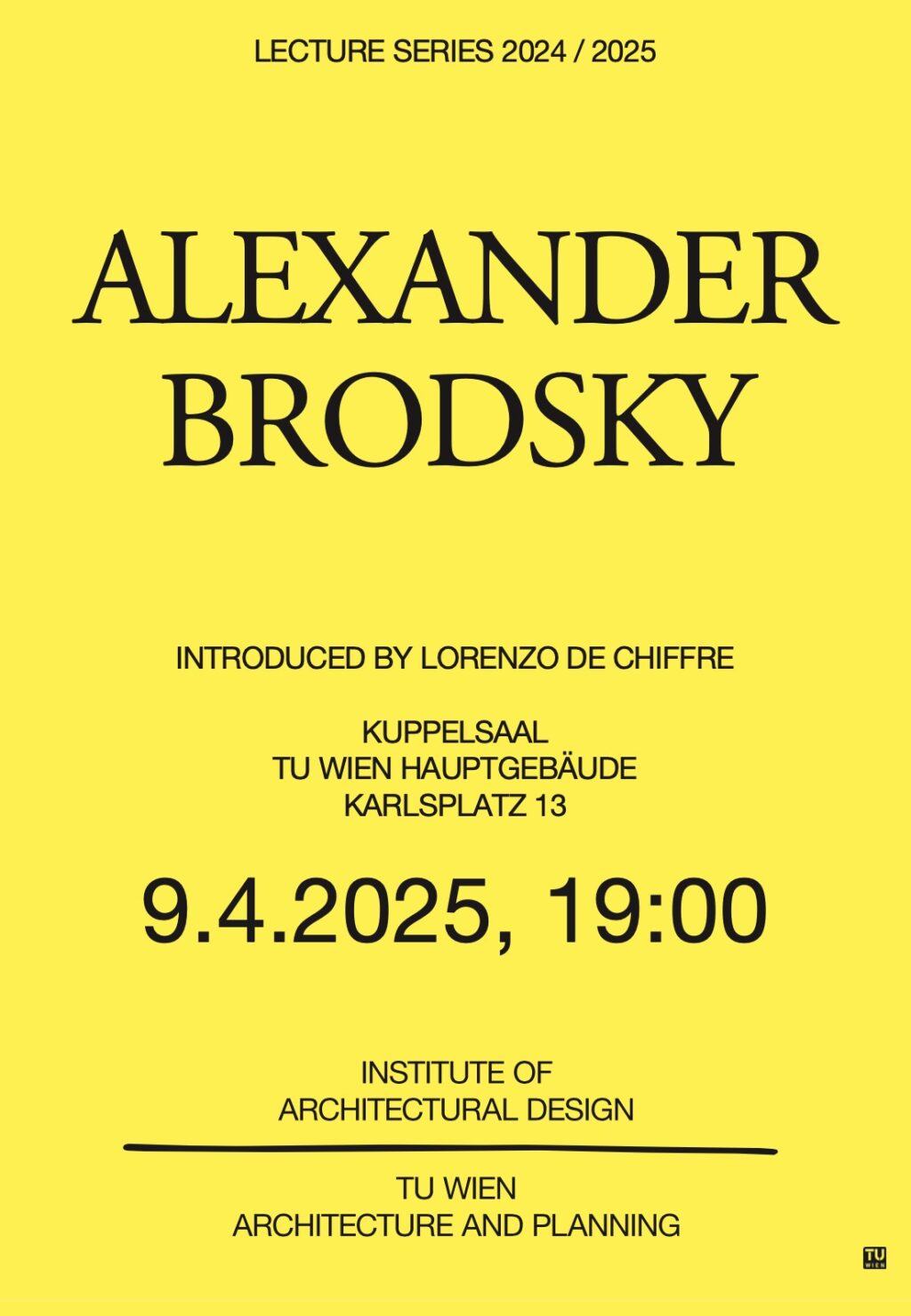
APR 9, 2025
19:00
LECTURE:
ALEXANDER BRODSKY

APR 29, 2025
18:00
HOUSING TALKS:
ELSA PROCHAZKA
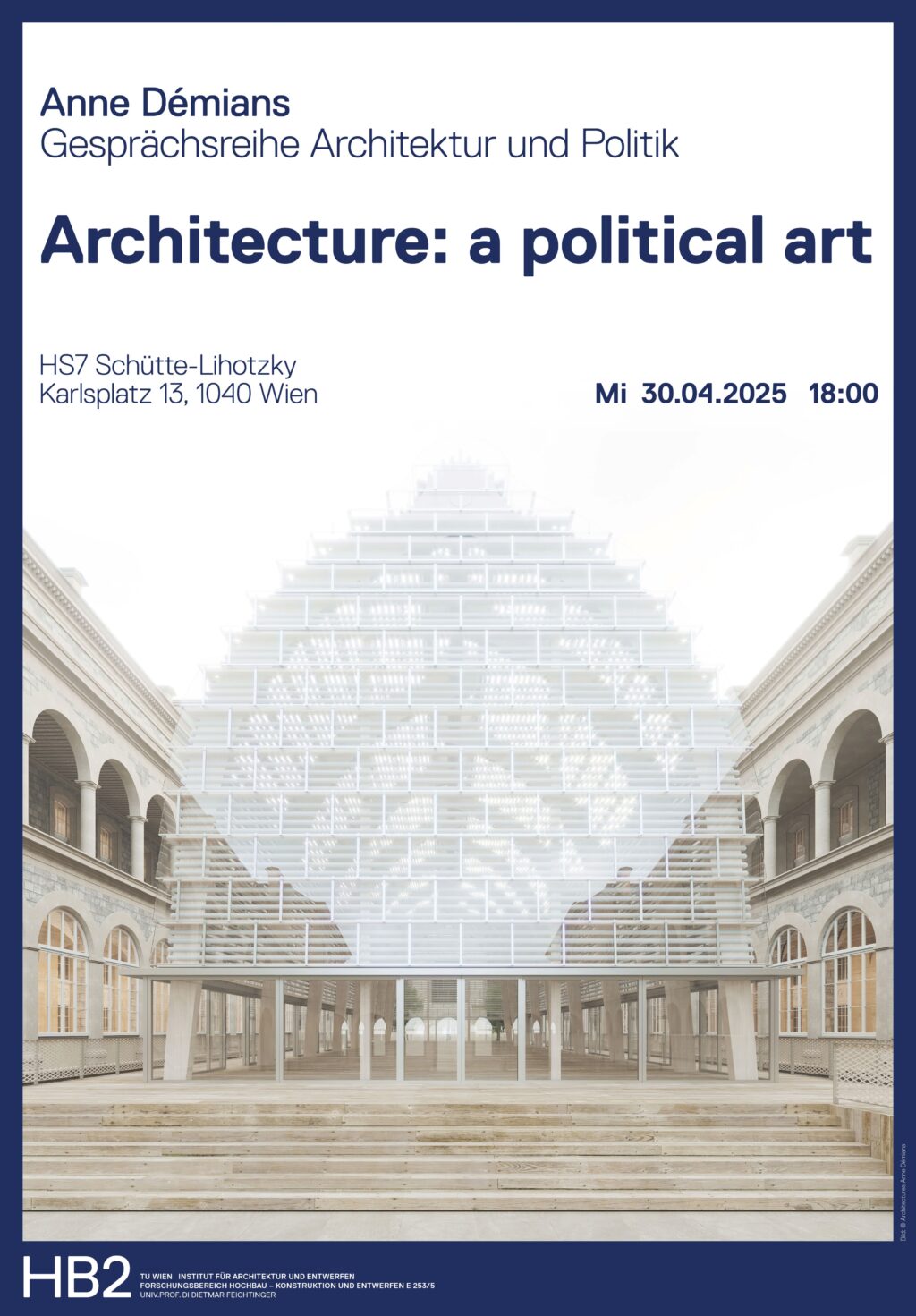
APR 30, 2025
18:00
Lecture:
Anne Démians
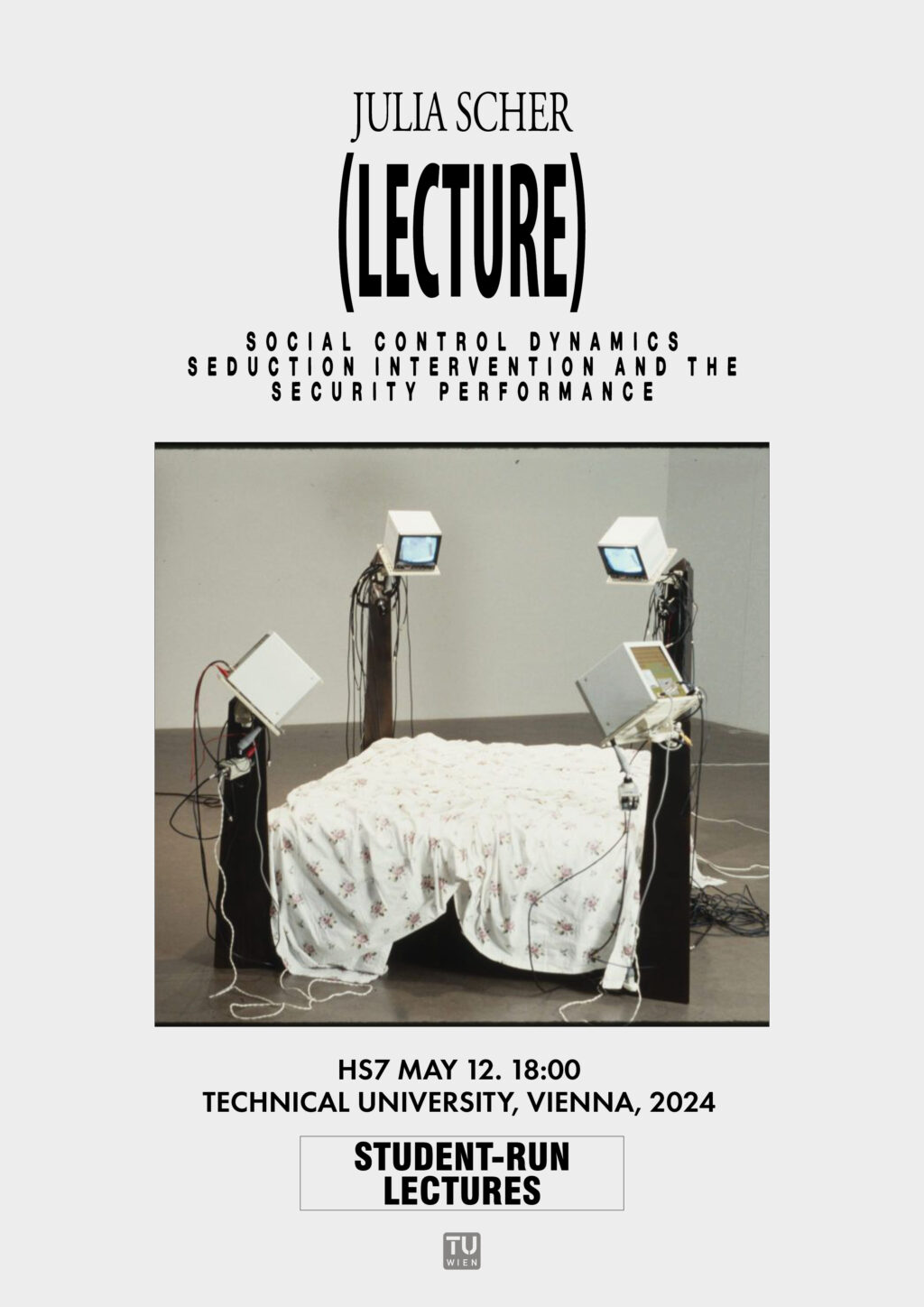
MAY 12, 2025
18:00
LECTURE:
JULIA SCHER

MAY 14, 2025
19:00
LECTURE.
MOMOYO KAIJIMA
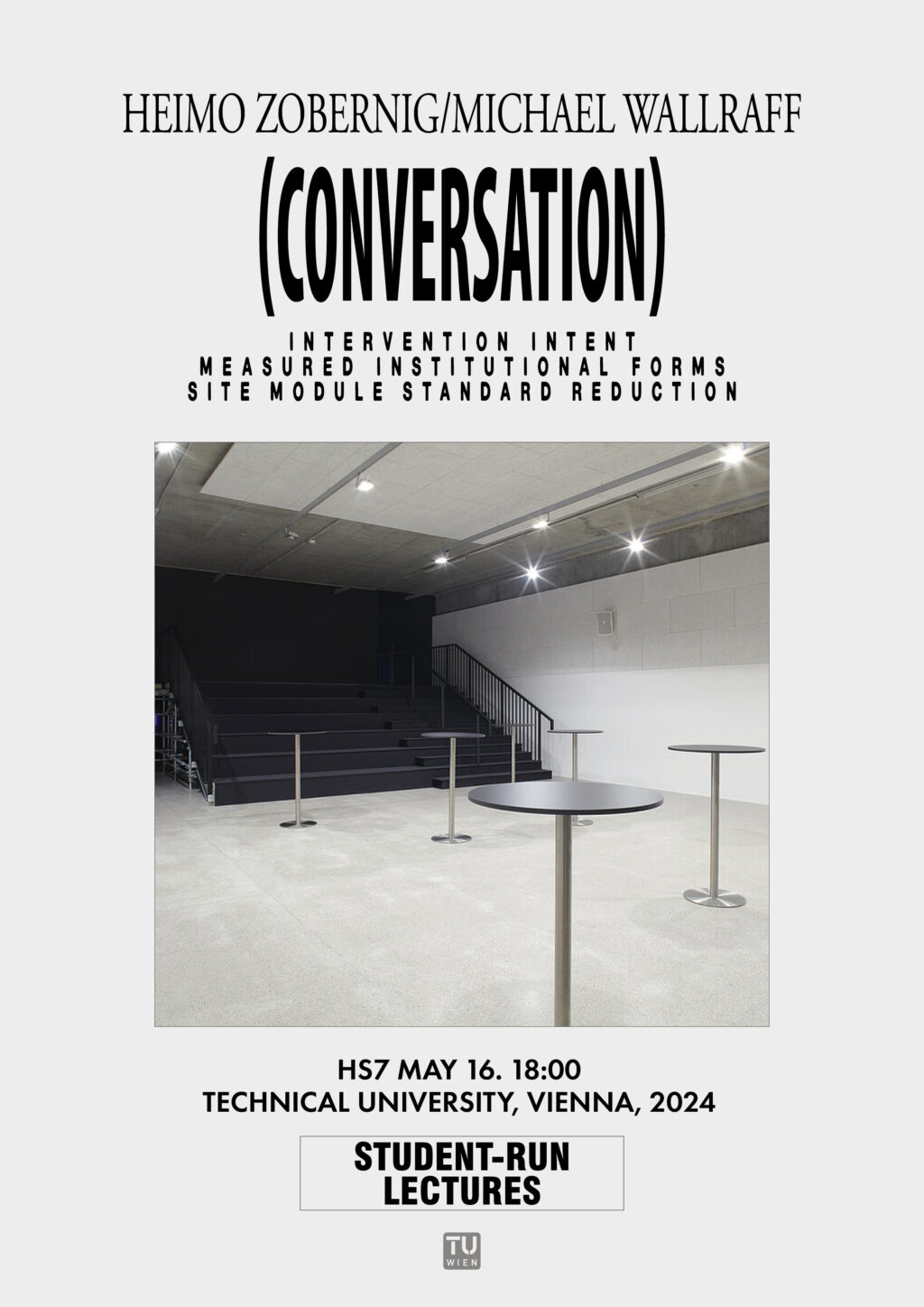
MAY 16, 2025
18:00
CONVERSATION:
HEIMO ZOBERNIG & MICHAEL WALLRAFF
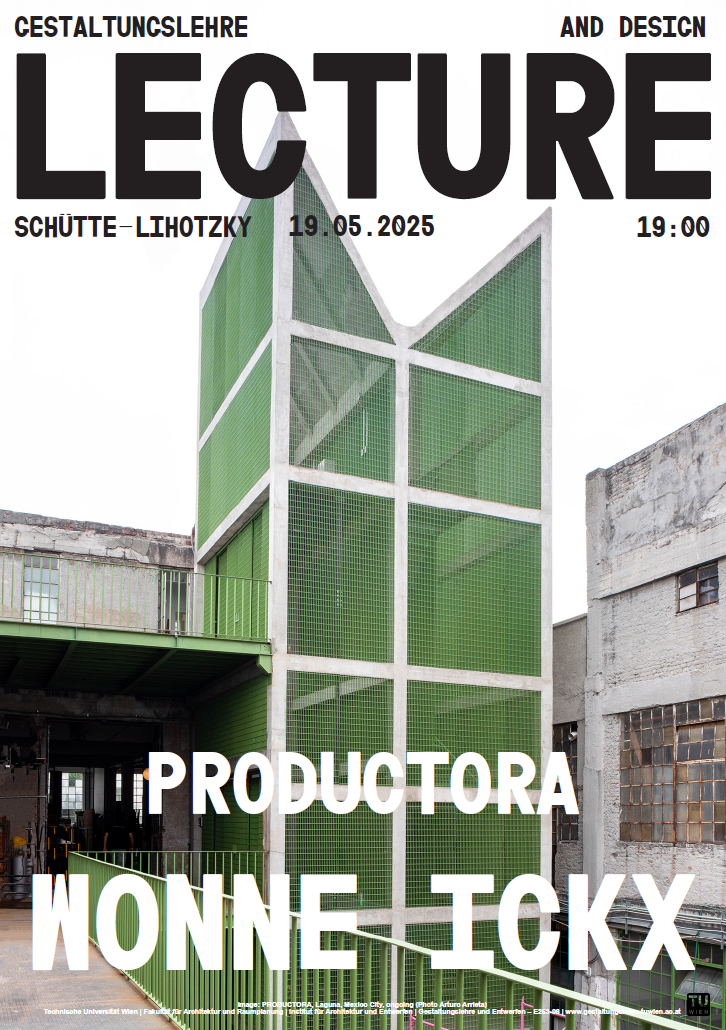
MAY 19, 2025
19:00
LECTURE:
WONNE ICKX
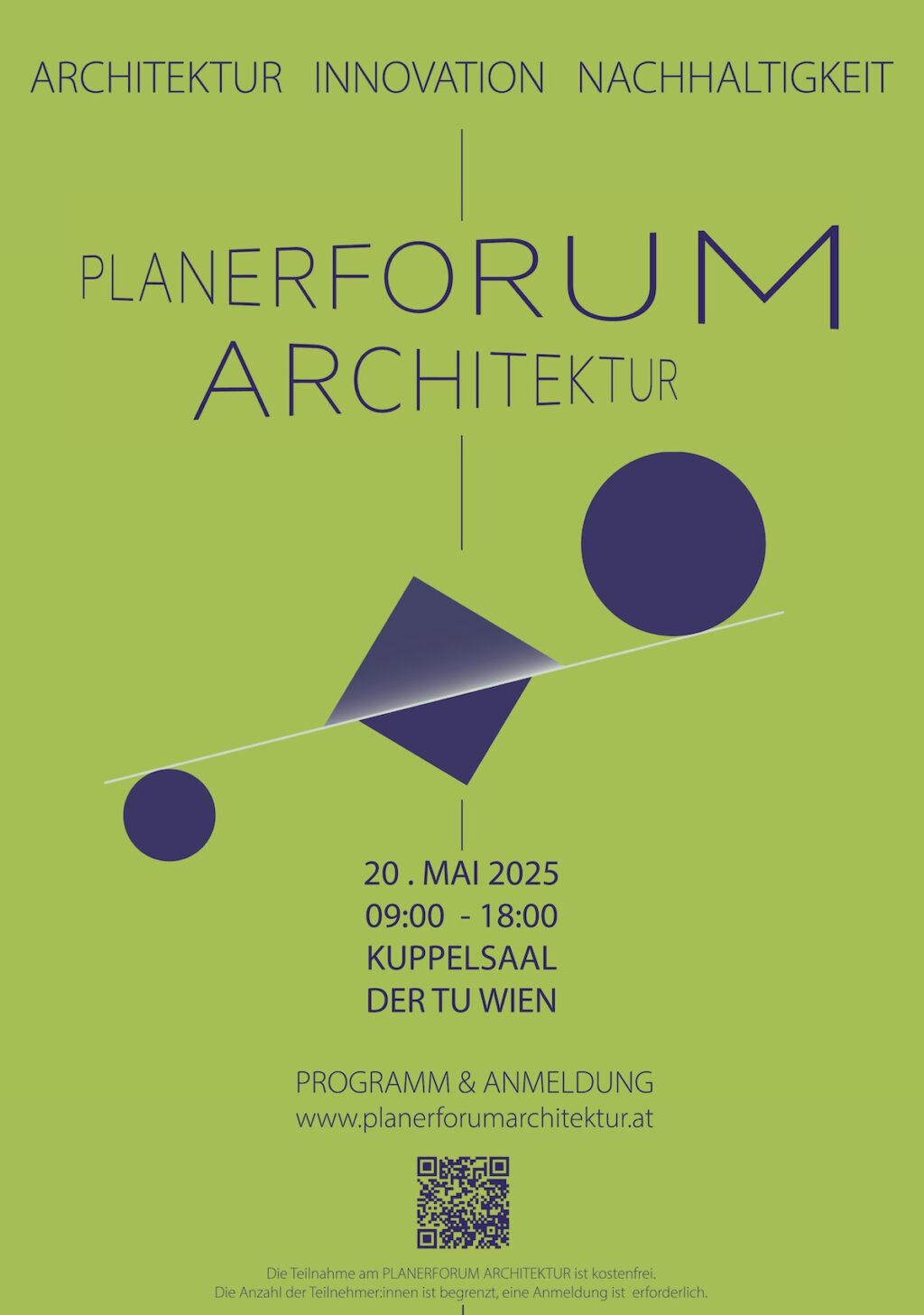
MAY 20, 2025
09:15
PLANERFORUM.
ARCHITEKTUR 2025

MAY 22, 2025
16:00
SYMPOSIUM, EXHIBITION:
MATERIALS & PROCESSES
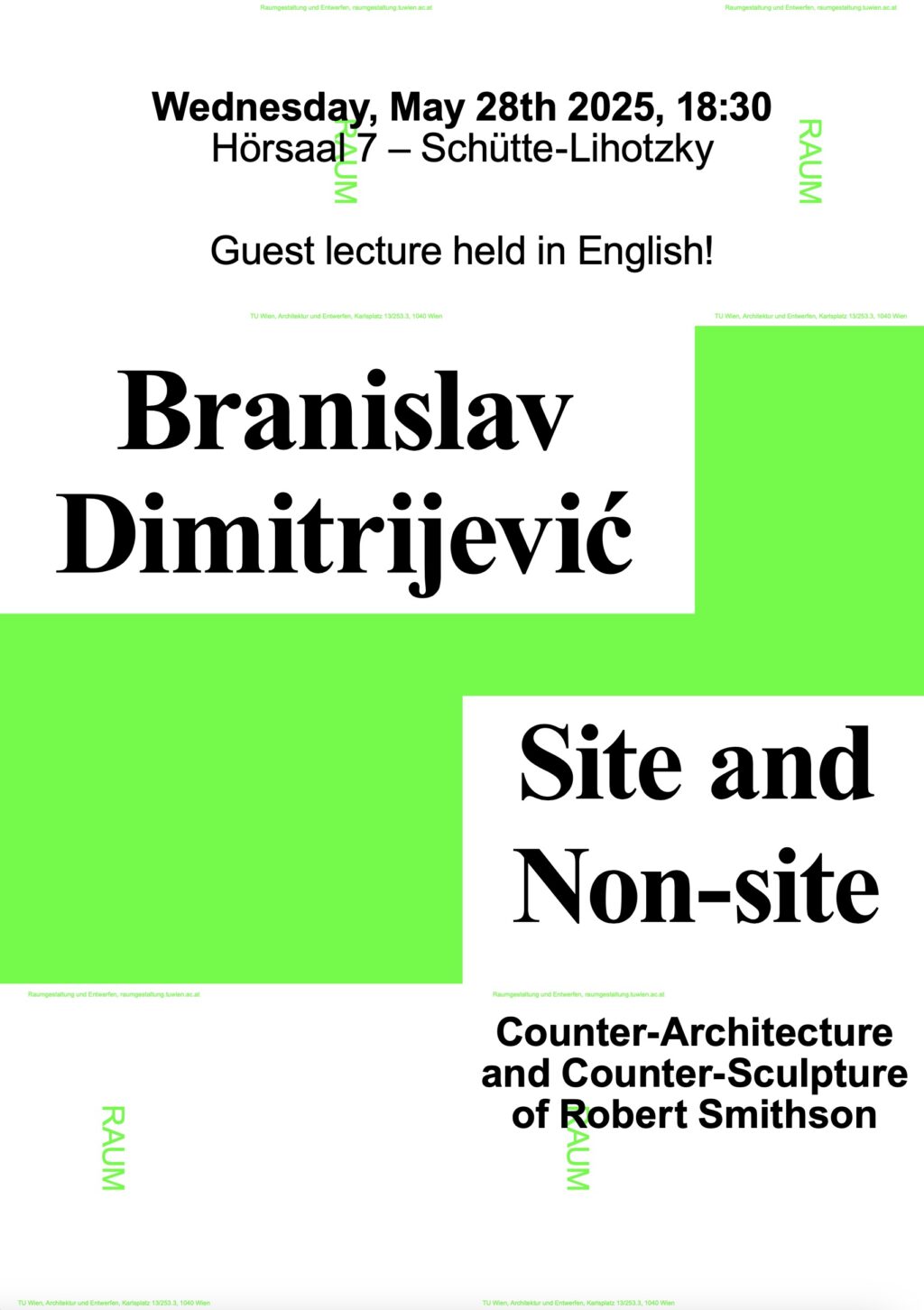
MAY 28, 2025
18:30
LECTURE:
BRANISLAV DIMITRIJEVIĆ
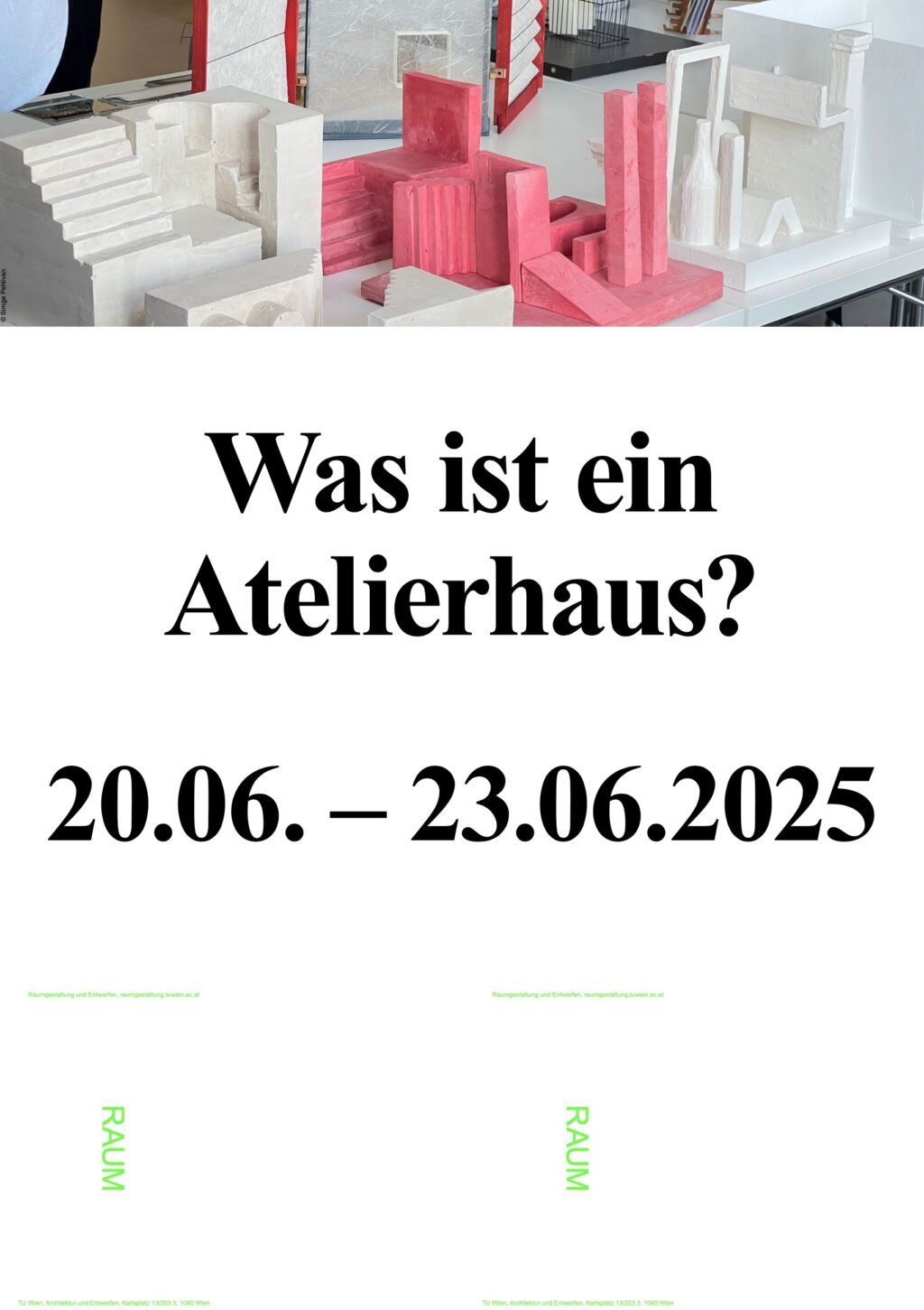
JUN 20, 2025
18:00
EXHIBITION:
WAS IST EIN ATELIERHAUS?
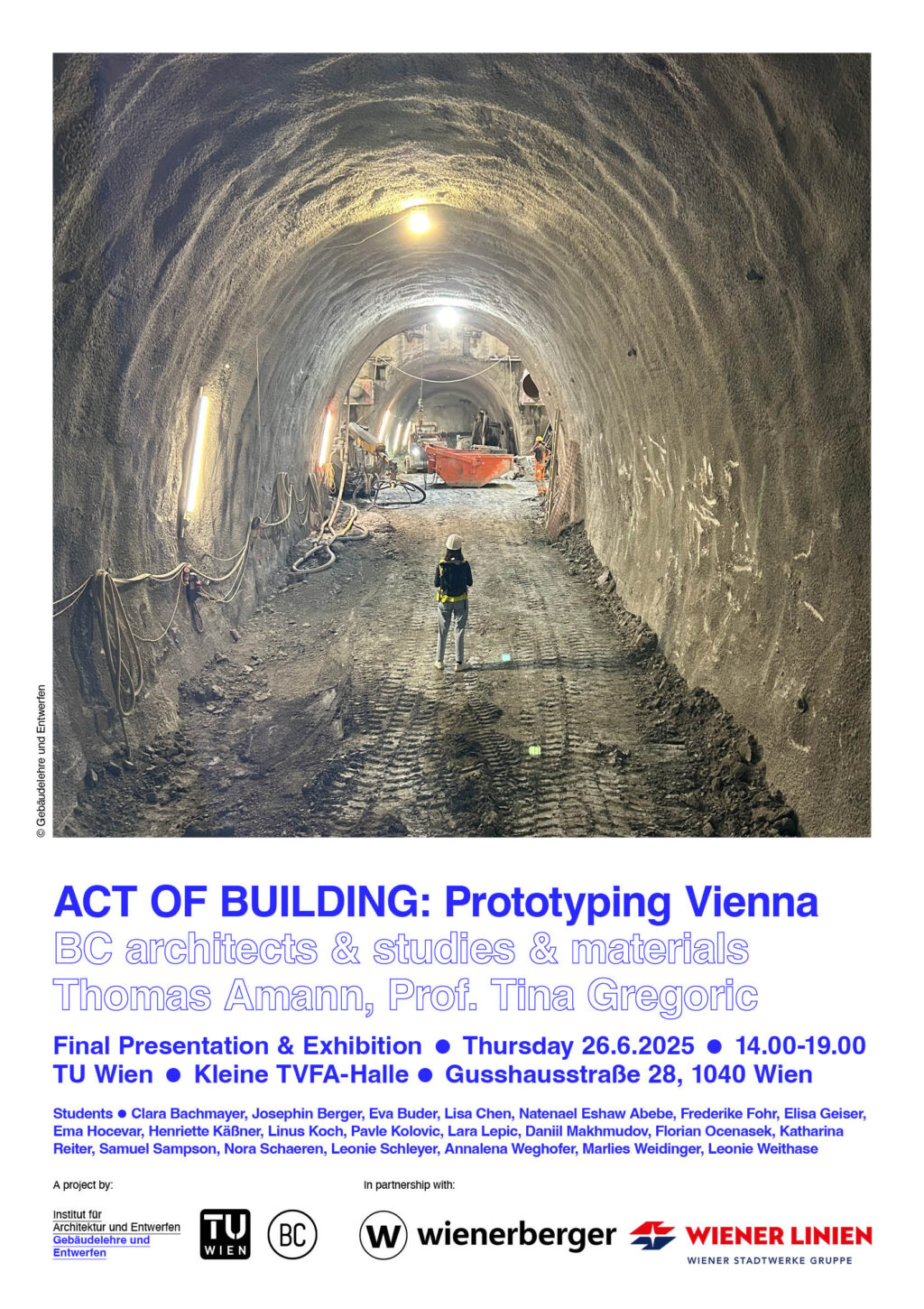
JUN 26, 2025
14:00
PRESENTATION, EXHIBITION:
ACT OF BUILDING
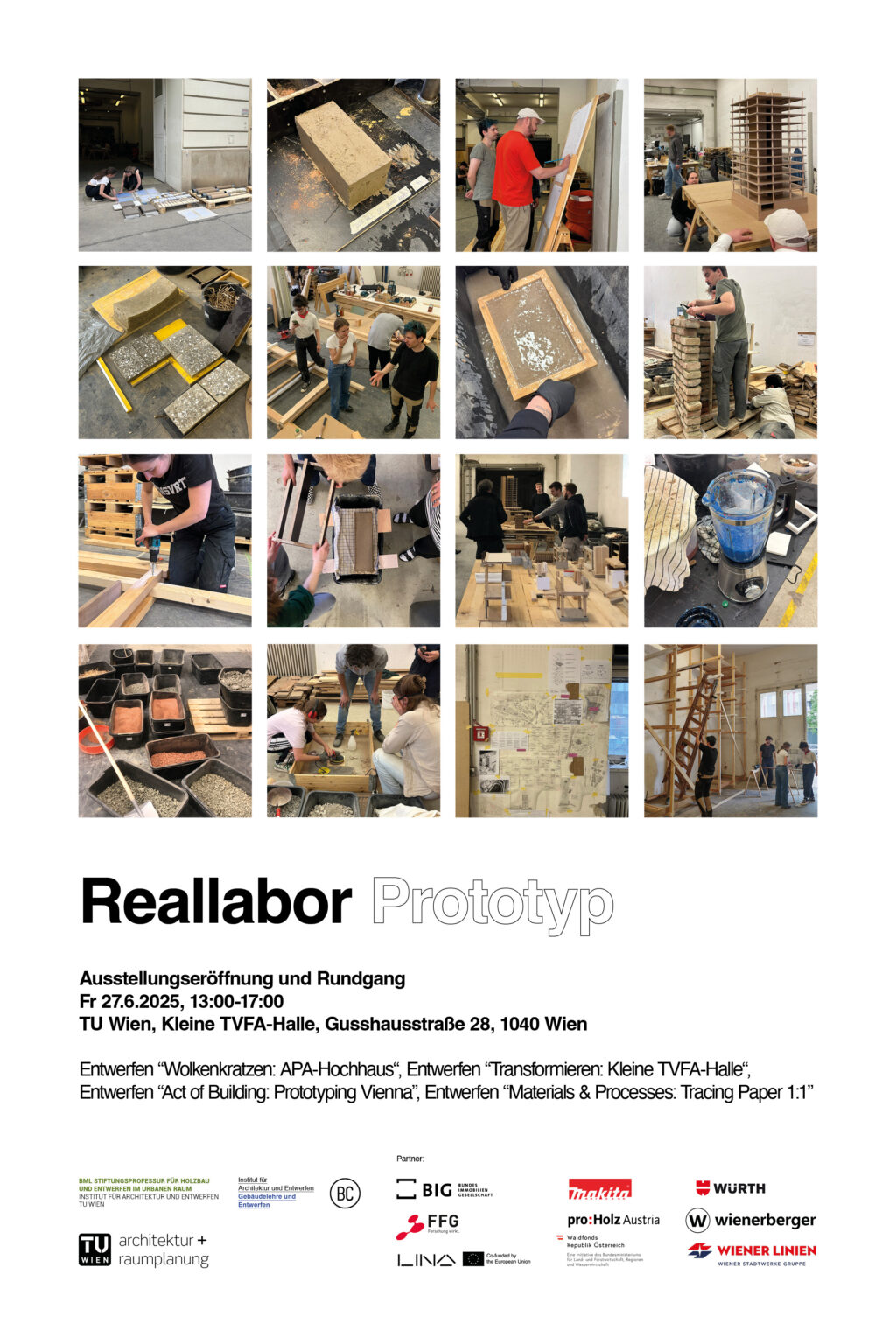
JUN 27, 2025
13:00
Presentation, Exhibition:
Reallabor Prototyp

SPACES BETWEEN PLACES –
on the Transformative Potential of Odd Lots
Vienna / Ljubljana / Brussels / Barcelona / Berlin
Exhibition:
THU, 6.6.2024 – SAT, 8.6.2024, 10:00 – 19:00
2021 - 2024, 4 Design Studios, 28 Sites, 68 Projects, 138 Students Planungswerkstatt, Friedrich-Schmidt-Platz 9, 1010 Wien
Symposium:
FRI, 7.6.2024, 13:30 – 19:00, Planungswerkstatt, Friedrich-Schmidt-Platz 9 , 1010 Wien
Speakers:
Kristiaan Borret, Bouwmeester Maitre Architecte at Brussels Captial Region;
Ricardo Flores, Flores i Prats Architects, Barcelona;
Adj. Prof. at Universitat Polytècnica de Catalunya, ETSAB;
Benoit Vandenbulcke, AgwA – architecture office, Brussels;
University of Liege, Faculty of Architecture
Carles Enrich, Carles Enrich Studio, Barcelona;
University Polytècnica de Catalunya, ETSAB;
Roberta Jurčić, b+, Berlin;
Architecture and Design, ETH Zürich;
Anja Vidic, Vidic Grohar Arhitekti, Ljubljana;
University Ljubljana, Faculty of Architecture;
Gordon Selbach, Architect; Vienna;
Evelyn Temmel, BELT Architektur Buero; Vienna;
Katharina Urbanek, studio urbanek; Vienna;
TU Wien, Institute of Architectural Design;
Moderated by:
Tina Gregorič, Dekleva Gregorič architects, Ljubljana;
Professor, TU Wien, Institute of Architectural Design;
Vasa Perović, Bevk Perović architects, Ljubljana;
Professor, University of Ljubljana, Faculty of Architecture;
The symposium, along with the exhibition of the design studio series Odd Lots, starts from the fundamental concept of odd urban vacant spaces—byproducts of infrastructural measures, urban development, or unique topographical features. The topic was initially inspired by Gordon Matta Clark‘s Fake Estates in New York and subsequently references Arno Brandlhuber‘s Option Lots in Berlin and Atelier Bow-Wow pet architecture in Tokyo.
“spaces between places, not out of sight, but out of mind.”
Gordon Matta-Clark, Fake Estates1 1971-1973
The lack of attention and articulation in urban development significantly contributes to environmental and social crises. The current situation demands a serious reflection on the use of forgotten and overlooked spaces and their possible transformative potential.
Transformative methods of redesigning and reactivating the urban fabric involve architectural interventions on unusual sites where development seems impossible—Odd Lots. Students propose architectural projects that explore the unused potential of diverse odd lots in various urban contexts.
A series of odd lots situated in Vienna, Ljubljana, Brussels, Barcelona, and Berlin have been carefully and meticulously curated to serve as project sites. These sites range from small 20-square-meter lots in courtyards to locked-in sites and existing open structures, each offering unique properties on all terms.
Underutilized lots that are perceived as too narrow, too long, inaccessible, dark, or in any other way unusual and unattractive for standard use hold untapped potential that can be activated through alternative approaches. By implementing new, innovative architectural and programmatic solutions, these unconventional spaces can transform the functionality of the city and its architectural and public environments.
In times marked by social, environmental, political, health, and other crises – the starting points of these architectural interventions – these student projects and their unusual settings represent architectural, typological, and programmatic innovations.
The first edition of ODD LOTS was developed in a dialogue between TU Wien (Faculty of Architecture and Planning) and the University of Ljubljana (Faculty of Architecture). Students and faculty of both faculties discussed locations in both cities, Ljubljana and Vienna, and dialectically brought fresh insights to those locations.
In the search for these Odd Lots, in their examination, and ultimately in the design projects, we attempted to highlight the unique specificities of the cities and uncover the hidden potentials of these places.
¹ Odd Lots refers to the title of an exhibition at Queens Museum of Art in 2005 revisiting Gordon Matta Clark ́s Fake Estates project of 1973. 19 contemporary artists presented speculative projects responding to Matta-Clark ́s purchase and archival documentation of 15 peculiarly shaped lots in Queens and Staten Island, New York.
TU Wien, Institute of Architecture and Design, Architectural Typology and Design:
Mentors
Univ.Prof.in Dipl.-Ing.in M.Arch (AA Dist) Tina Gregorič
Univ.Lektor Gordon Rieß-Selbach, MSc
Univ.Lektorin Dipl.-Ing.in Evelyn Temmel
Senior Artist Arch.in Dipl.-Ing.in Katharina Urbanek
Stud.Ass. Sebastian Brantner
Stud.Ass. Francesca Lysann Klute
Students
VIE/ LJU: Kim Gubbini, Mykhailo Zhuk, Emilia Kigyos, Merve Kurt, Luisa Zwetkow, Hannah Luca Kögler, Simge Pehlivan, Lukas Prokosch, Merlin Frühwald, Fabian Fröhlinger, Feena Oleary, Ronja Barz, Magdalena Berger, Klemen Gomisek, Pauline Krizmanich, Rachel Meagher, Maximilian Venturo, Julia Herrmann, Laurin Sommer, Johanna Schwarz, Paul Kramer, Dóra Komáromi, Laura Marjanovic, Sara Morelli, Leah Walsh;
VIE/ BXL: Luis Burtscher, Sebastian Brantner, Michael Wieser, Johanna von der Lange, Michael Haas, Paul Oechsner, Gedeon Falk, Matthias Treviranus, Felix Lehner, Noah Schmid, Valentina Gruber, Anselm Haufler, David Eibensteiner, Alexander Gikionis, Severin Vögl, Christian Regelmann, Anna-Lena Böhler, Anna Tröbinger, Kathrin Geußer, Tobias-Christoph Piesch, Tasnim Saleh, Theresa Schneeweiss, Datkayim Ibraimova, Viktoria Mandl, Lili Voko, Anna Schön, Christine Haubenberger, Marlies Klimacek, Milica Simic, Moritz Kreft, Gil Philipp Grassmann, Fanny Maria Brückenbauer, Sonia Marizzi;
VIE/BCN: Cindy Isoz, Lennon Hartmann, Isabella Mündle, Ramona Kornberger, Constanze Marek, Donata Dietz, Aurelia Goldlücke, Catia Jantscher, Nicolas Herresthal, Lukas Hertwig, Markus Häusler, Johannes Frank, Mara Potthast, Juliane Schwindun, Azra Magie, Elisabeth Gföllner, Florian Haring, Josef Schmidhuber, Daniel Koller, Maria Christina Covrig, David Wozniak, Laurent Dharmawan;
VIE/BER: Anna Bernbacher, Tobias Drösler, Merle Alexi, Arion Katana, Tara Mücke, Markos Koulelis, Rebecca Schwarz, Sophia Heather, Pia Marie Larcher, Edona Berbati, Mehmetcan Celik, Aylin Damla Özcan, Emma Schneider, Marie Gnesda, Benjamin Rettberg, Benjamin Karg, Thomas Jutisz, Max Lefevre, Max Klingenburg, Julia Cäsar, Facundo Ceretta, Mihály Sibinger, Christian Bachmann, Marie Berger, Kevin Djavan, Nele Herrmann, Franz Danhauser, Bernadette Koller, Katja Sippl, Raphael Berger, Valentin Dowhyj, Dario Fuckner.
Exhibition Team
Sebastian Brantner, Facundo Ceretta, David Eibensteiner,
Marie Gnesda, Emma Schneider, Evelyn Temmel;
University of Ljubljana, Faculty of Architecture:
Mentors
Univ.Prof. Dipl.-Ing. MA (BIA) Vasa J. Perović
Univ.Ass. Dipl.-Ing.in Anja Vidic
Stud.Ass. Andraž Tufegdžić
Students
VIE/ LJU: Tinkara Bizjan, Anton Jakob Bonča, Martin Debeljak, Ema Durakovič Koprivnik, Luka Korošec, Pavlina Košir, Klara Barbara Krajnc, Kaja Križaj, Zoja Leskovšek, Ajda Lukman, Eva Lupše, Vanesa Maček, Hana Mihelčić, Aleksandar Mišković, Lovre Mohorič, Klemen Mraz, Neža Napret, Benjamin Ocvirk, Eva Petruna, Aina Radovan, Lucija Ritoša, Ana Marija Snoj, Zala Vučko, Nika Žigon
Thanks to our Partners & Sponsors:
MA7 – Kultur; MA 21A – Stadtteilplanung und Flächenwidmung; Architekturtage;
Bezirksvorstehung 2. Bezirk;